Transforming Canine Brain Surgery
Immersive augmented reality system guides lifesaving procedure


Immersive augmented reality system guides lifesaving procedure

CELEBRATING 30 YEARS OF DISCOVERY
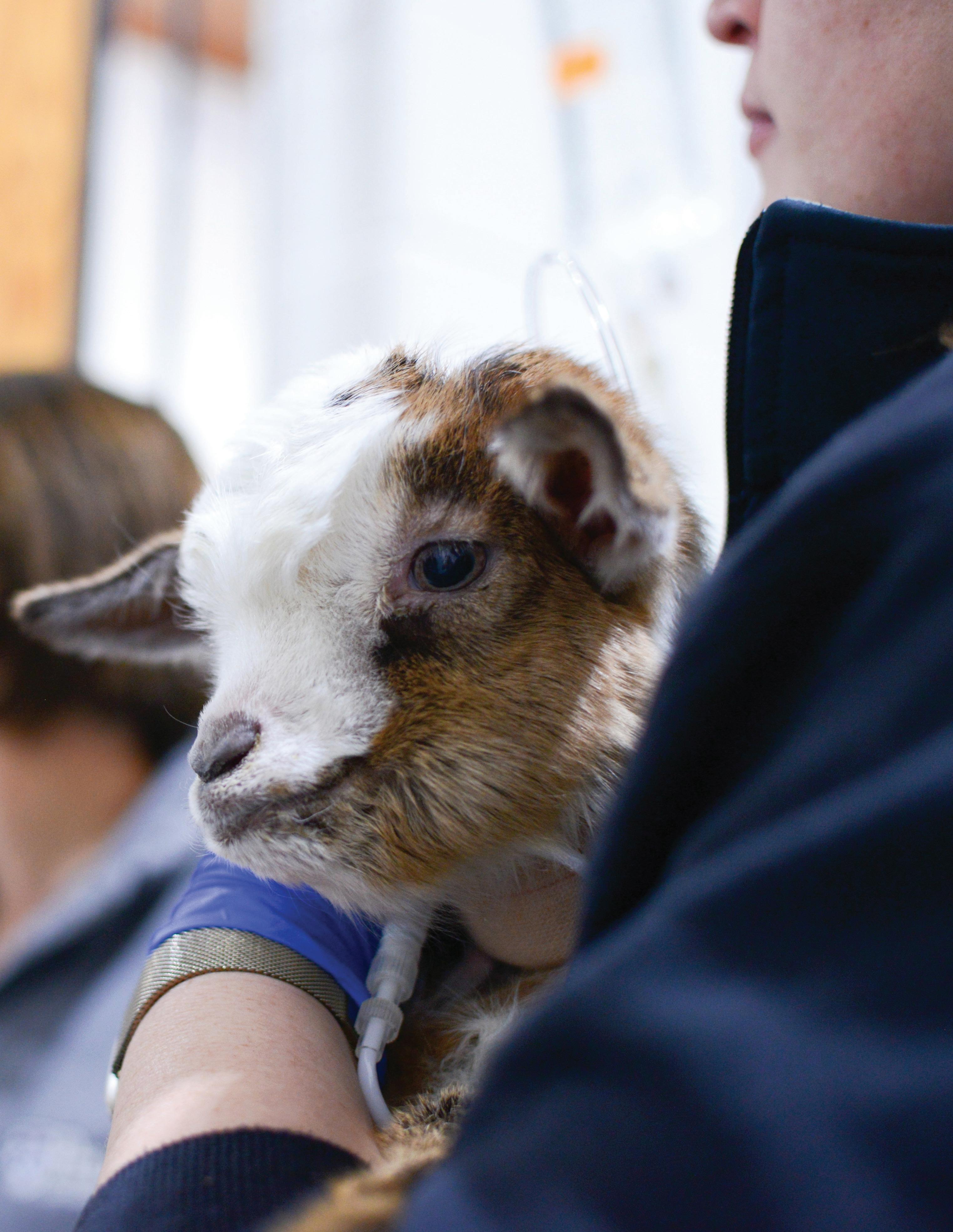
Kale is a one-month-old goat who developed a condition called “rumen drinking” where the milk went into the rumen instead of the abomasum stomach compartment.
Clinicians at New Bolton Center Hospital treated him with total parenteral nutrition and adjusted his diet until he was able to drink milk again and eat solid foods. Kale was gaining weight and thriving when he went home!
By the time you receive this issue of Bellwether, our mid-Atlantic winters will be in the rearview mirror. You, like all of us here, are undoubtedly enjoying spring with its longer days and temperate weather. Spring naturally ushers in a sense of renewal and mirrors the spirit of milestones: markers of progress and achievement that reflect new beginnings. Just as nature flourishes with purpose, so, too, do we. Penn Vet is celebrating several milestones that accentuate our mission.
We reopened the newly named Richard Lichter Advanced Dentistry and Oral Surgery Suite at Ryan Hospital in November. Funded through the generosity of major donors Richard Lichter (Board of Advisors), Nadine Chien, and Anson Tsugawa, V’98 (Board of Advisors), the suite enhances our dentistry and oral surgery service. At the same time, it shapes the future of the field by advancing the training experiences of early career veterinary dental and oral specialists. Read more about the suite’s new capabilities on page 12.
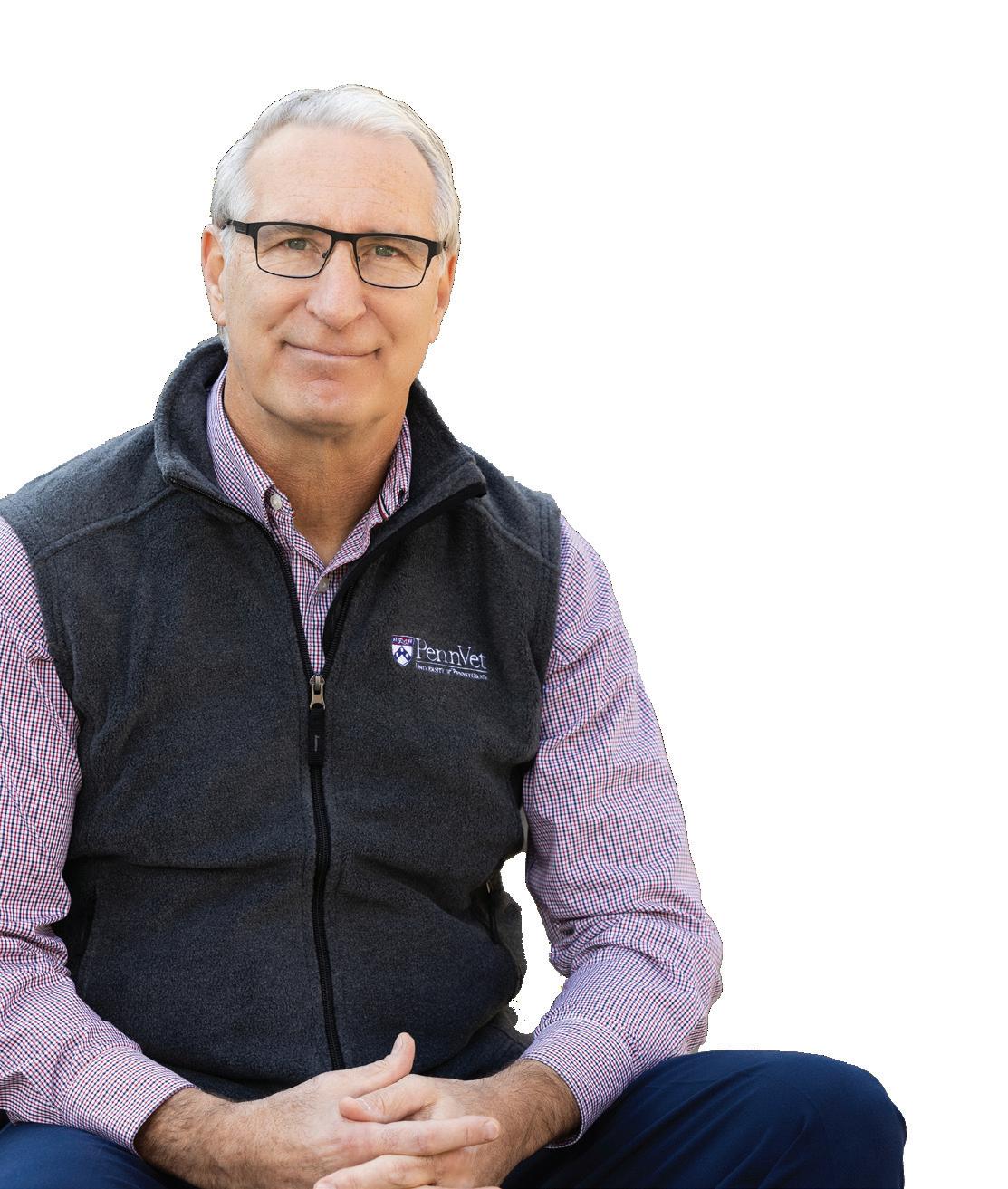
On April 30, we broke ground on the Gail P. Riepe Center for Advanced Veterinary Education at our New Bolton Center (NBC) campus. Made possible through the philanthropy of Gail P. Riepe, CW’68, and Jim Riepe, W’65, WG’67, HON’10, the center will be the first dedicated classroom building at NBC. Plans include a flex space with fully integrated technology to accommodate all learning formats. The new clinical skills center will be emblematic of Penn Vet’s role in training the next generation of veterinarians. The groundbreaking occurred as we went to press, so stay tuned for more about it in our next issue.
In addition to these two significant facility projects, we have two other milestones to share. Bellwether’s cover story introduces you to the heart-warming story of Geddy Lee. She sure has lived a big life as a little dog! I don’t want to give it all away here, but she is the first dog to undergo successful brain surgery using augmented reality neuro-navigational technology— merging world-class expertise in human and canine neurosurgery. It is a must-read. Finally, Penn Vet’s contributions to science were on full
display at our 30th Annual Research Retreat. The event showcased three decades of progress in veterinary medicine and institutional research, reaffirming our commitment to improving animal health and welfare while contributing to advances in human medicine. I hope you take a moment to peruse the beautiful timeline of 30 years of achievements and contributions to the life sciences. And please take a moment to read Dr. Phillip “Phil” Scott’s opening message, which captures what our community is feeling right now.
As we graduate the Class of 2025 and celebrate their collective milestone of attaining the Veterinariae Medicinae Doctoris degree, I want to thank you for your continued support of our School. Whether you are a student, an alum, or a friend, thank you for being part of Penn Vet and the mission-critical work we do.
ANDREW M. HOFFMAN, DVM, DVSc, DACVIM
Gilbert S. Kahn Dean of Veterinary Medicine

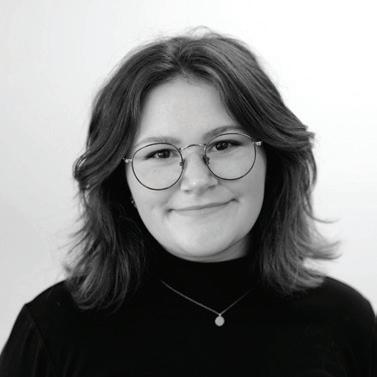
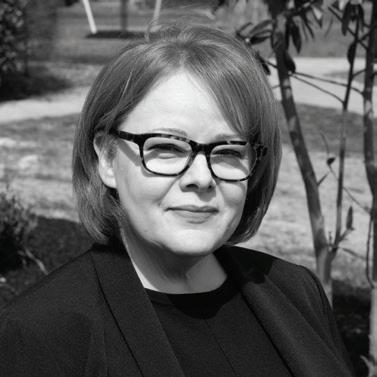
From her home base in Philadelphia, Sacha Adorno writes about people, institutions, and businesses working to make the planet a better place for all life on it.
As associate director of social media, Ashley Hinton sniffs out stories about the people, research, and vet hospitals that make up Penn Vet. With her nose to the ground, she brings the student experience to life in print.
As the senior research resources manager, Kathy Kruger supports Penn Vet’s vice dean for research and academic resources in overseeing the School’s research enterprise and takes great pride in promoting its accomplishments. Kruger created the timeline in this issue’s Special Insert.
Penn Vet is proud to announce the launch of our redesigned website. Check out the new look and feel!

EDITORIAL
EDITOR
John Donges
CONTRIBUTING EDITOR AND WRITER
Sacha Adorno
WRITERS AT LARGE
Martin J. Hackett, Ashley Hinton
CLASS NOTES EDITOR
John Donges
DESIGNER
Anne Marie Kane, Imogen Design
PHOTOGRAPHERS AT LARGE
John Donges, Ashley Hinton
ADMINISTRATION
GILBERT S. KAHN DEAN OF VETERINARY MEDICINE
Andrew M. Hoffman, DVM, DVSc, DACVIM
SENIOR ASSOCIATE DEAN OF DEVELOPMENT AND ALUMNI RELATIONS
Jonathan Evans
CHIEF COMMUNICATIONS OFFICER
Martin J. Hackett
CHANGE OF ADDRESS
Sarah Trout
Office of Institutional Advancement School of Veterinary Medicine University of Pennsylvania 3800 Spruce Street Suite 151E, Philadelphia, PA 19104 strout@vet.upenn.edu (215) 746-7460
None of these articles is to be reproduced in any form without the permission of the School. ©2025 by the Trustees of the University of Pennsylvania. The University of Pennsylvania seeks talented students, faculty, and staff with a wide variety of backgrounds, experiences, and perspectives. The University of Pennsylvania does not discriminate on the basis of race, color, sex, sexual orientation, religion, creed, national origin (including shared ancestry or ethnic characteristics), citizenship status, age, disability, veteran status or any other class protected under applicable federal, state, or local law in the administration of its admissions, financial aid, educational or athletic programs, or other University-administered programs or in its employment practices. Questions or complaints regarding this policy should be directed to the executive director of the Office of Equal Opportunity Programs; Franklin Building, 3451 Walnut Street, Suite 421, Philadelphia, PA 19104-6106; or (215) 898-6993.
BY SACHA ADORNO
Geddy Lee has lived a big life for a little dog. As a puppy, the tiny terrier mix was abandoned in Mississippi during a high-speed car chase. Rescued by law enforcement, she found a loving home in Pennsylvania. Life was good—until last summer.
In August, Geddy Lee began having seizures, and her veterinarian referred the eight-year-old to Penn Vet for further evaluation. At Penn Vet’s Ryan Hospital, Tessa Arendt, DVM, specialty intern in neurology, and Wojciech Panek, DVM, DACVIM, assistant professor of neurology and neurosurgery in the Department of Clinical Sciences and Advanced Medicine, performed a brain MRI, which revealed a right frontal lobe mass.
“An MRI doesn’t always tell us exactly what we’re dealing with even though it allows us to see the tumor,” said Panek. “Based on Geddy Lee’s tumor imaging characteristics, we suspected a glioma—an aggressive brain tumor.”
Gliomas affect both dogs and humans. In people, the most malignant type, glioblastoma, carries a life expectancy of approximately 15 to 18 months with surgery, radiation, and chemotherapy. Without aggressive treatment, dogs typically survive for a few months.
“An MRI doesn’t always tell us exactly what we’re dealing with even though it allows us to see the tumor. Based on Geddy Lee’s tumor imaging characteristics, we suspected a glioma—an aggressive brain tumor.”
Wojciech Panek, DVM, DACVIM assistant professor of neurology and neurosurgery
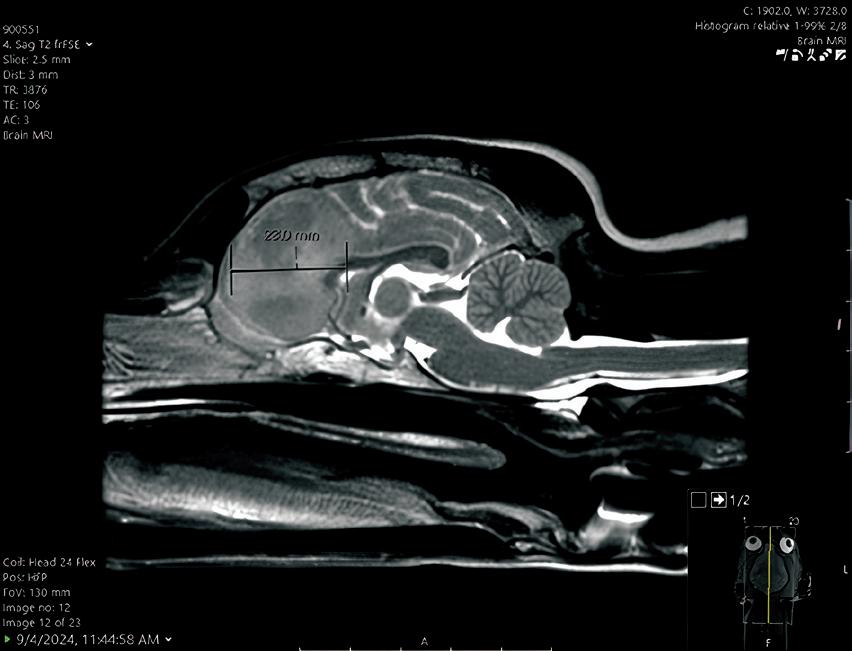
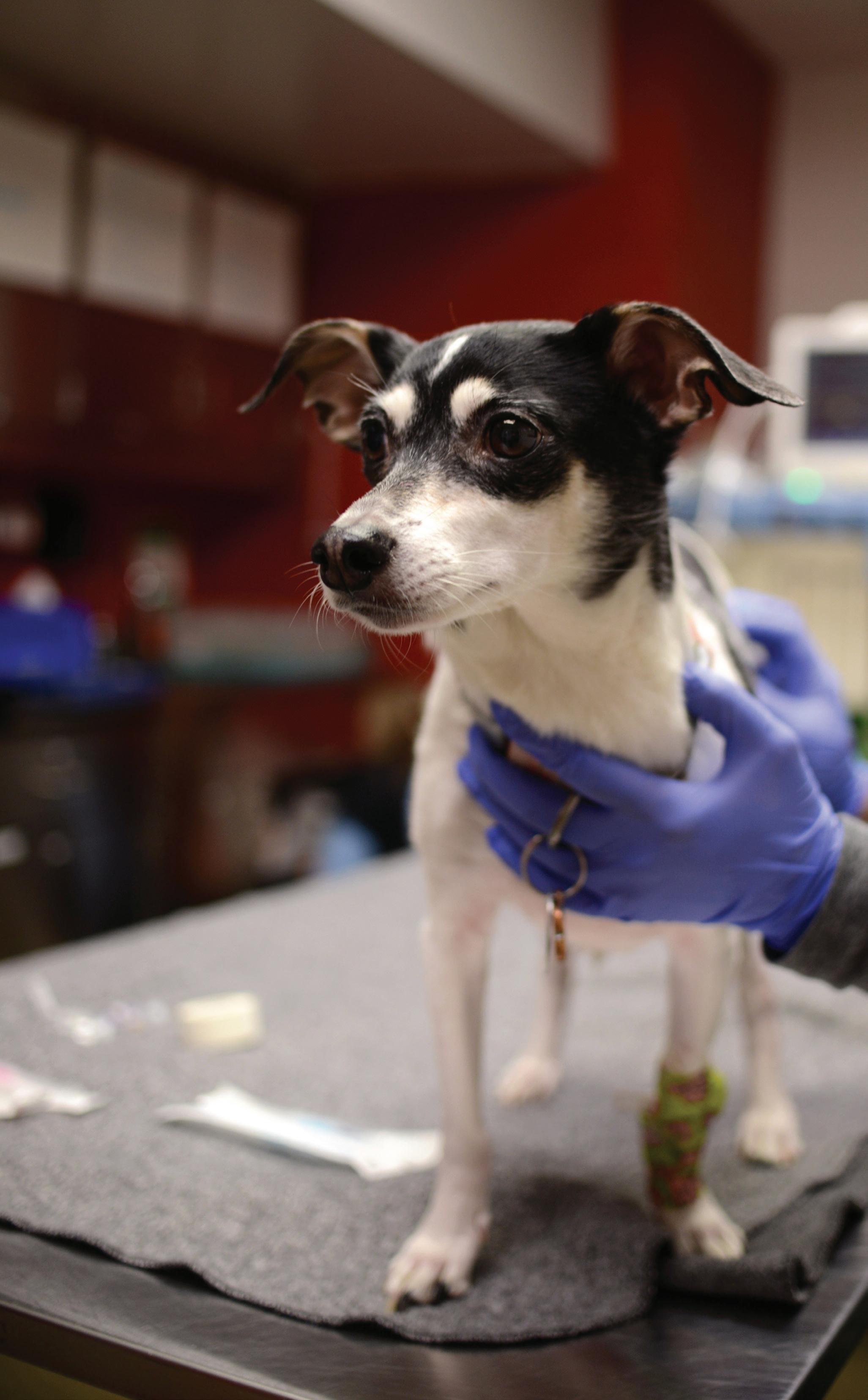
“It was amazing how much the team—all the doctors and nurses— rallied around her. It was so impressive that they pulled out all the stops, and Erica and I said do whatever you can for our girl.”
Michael and Erica Crotty
Geddy Lee’s owners
Geddy Lee’s owners, Michael and Erica Crotty, wanted every option explored, including surgery. Surgery would also enable Panek to biopsy the tumor for a more exact diagnosis and to guide further therapeutic opportunities for Geddy Lee.
“It was amazing how much the team—all the doctors and nurses—rallied around her,” said Crotty. “It was so impressive that they pulled out all the stops, and Erica and I said do whatever you can for our girl."
Geddy Lee’s procedure took place in September. She arrived at Ryan Hospital on a Monday. A week later, she would leave the first dog to undergo successful canine brain surgery using cutting-edge augmented reality technology combined with infrared real-time guided resection.
Her case required a highly specialized team, including a veterinary neurosurgeon, radiologist, anesthesiologist, pathologist, nurses, and operating room technicians.
Joining the Penn Vet experts was a renowned neurosurgeon and brain tumor specialist from Penn’s Perelman School of Medicine: Presidential Associate Professor of Neurosurgery Nduka Amankulor, MD, chief of neurosurgical oncology, and director of the Penn Brain Tumor Center.
Amankulor and Panek partnered on Geddy Lee’s case, merging world-class expertise in human and canine neurosurgery to push the boundaries of veterinary and human medicine.
“When I started at Penn, I approached Nduka because we face similar challenges,” said Panek, who has shadowed his colleague in human surgeries.
Added Amankulor, "One of the things that’s fascinating from a science perspective is that dogs develop brain tumors in a way that’s similar to humans, and genetically, the distribution of brain tumors in dogs is identical to humans.”
“This makes cases like Geddy Lee’s incredibly valuable for both veterinary and human science to advance the care mutually,” said Panek.
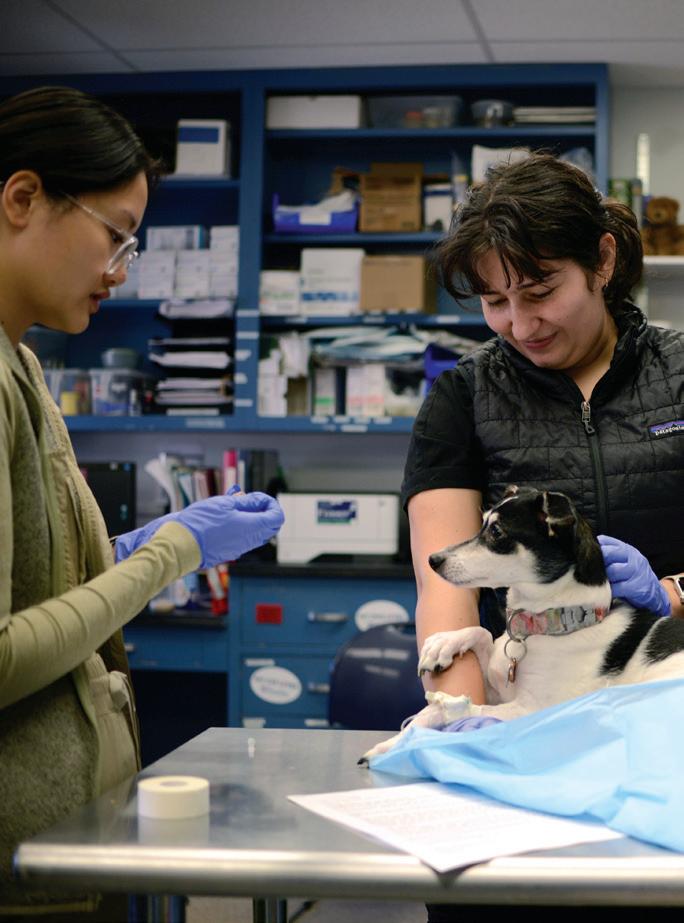
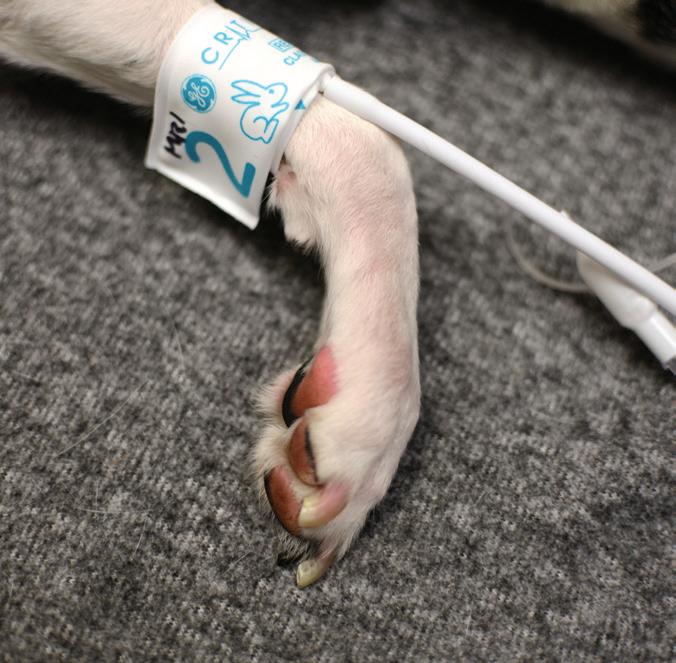
caption here Top: Students (left to right) Chantal Yang, V'25, and Liz Gregorio, V’25, prepare Geddy Lee for an MRI. Bottom: Geddy Lee getting prepped and ready.
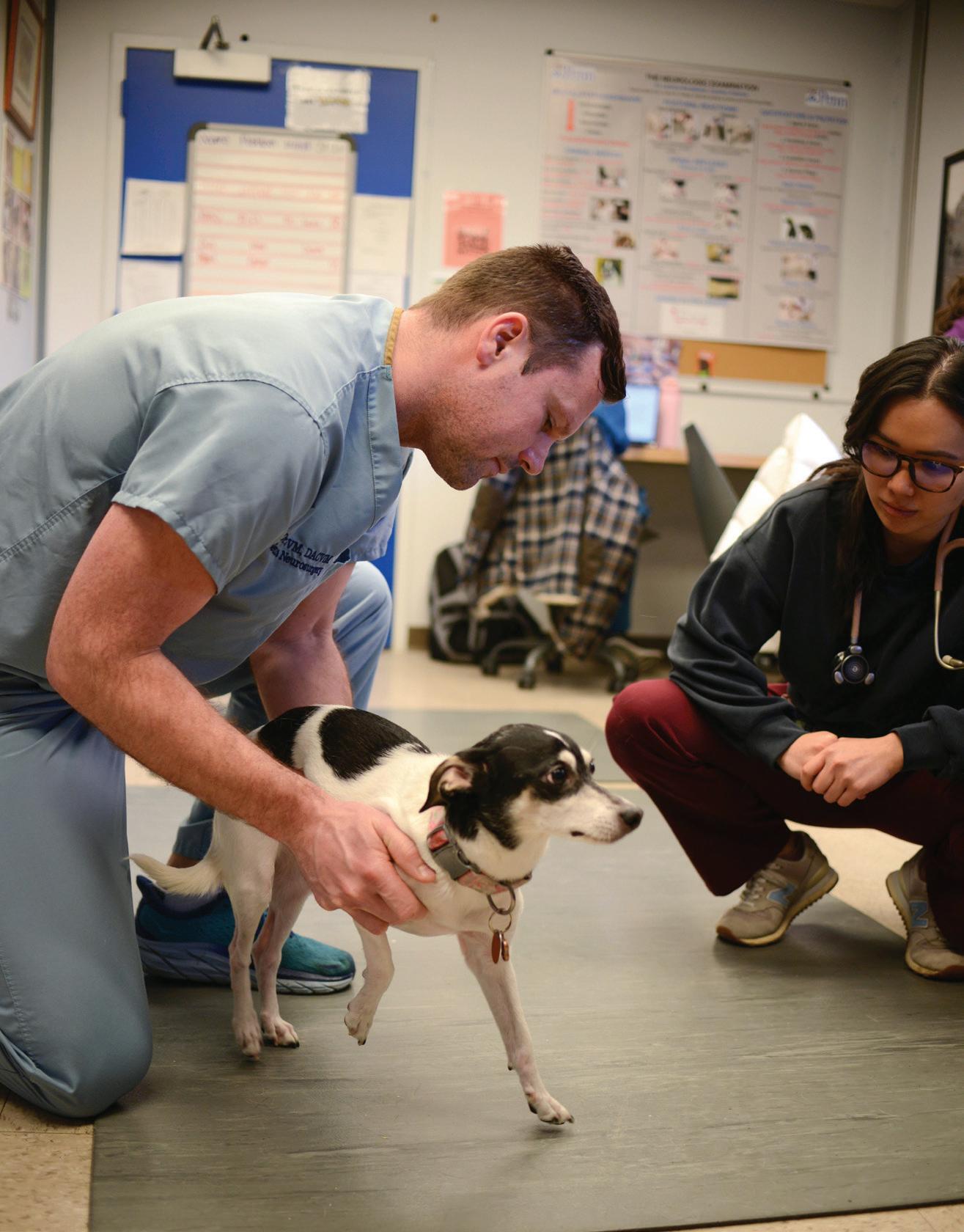
The primary goal of cancer excision—or debulking—surgery is to achieve “clean margins.” Even the tiniest remnant of cancerous tissue can increase the risk of local recurrence and disease spread, but gliomas infiltrate healthy brain tissue, making it extremely difficult to distinguish the tumor border.
Geddy Lee’s care team used a combination of advanced tools to ensure precise debulking.
“We combined several novel techniques to achieve the best possible tumor resection,” said Panek. “This was a unique three-part approach.”
A day before surgery, the pup received an injection of a special dye that glows under near-infrared light and accumulates in cancer cells.
The imaging agent helps neurosurgeons better identify the limits of the glioma. Penn Vet’s David Holt, BVSc, professor of surgery, developed this technique to remove mammary and lung tumors from dogs.
The next day, Geddy Lee was placed under general anesthesia. The team performed a modified trans-frontal craniotomy, opening her skull for access to the brain. Three critical tools helped guide the surgeons.
Geddy Lee’s care team used a combination of advanced tools to ensure precise debulking.
First, the surgical team broke new ground by employing an immersive augmented reality neuronavigational system called VisAR to obtain optimal access to the tumor.
Developed by Novarad Corporation, the technology is used in human medical procedures for its precision and accuracy. It’s essentially, as Novarad describes it, “like a surgical GPS providing a road map to guide the surgeon through simple or complex surgeries.”
“The technology created a hologram from Geddy Lee’s initial MRI, which was really helpful for procedure planning and navigating hard-to-see areas,” said Panek. By superimposing Geddy Lee’s MRI images with anatomical accuracy onto the dog’s skull, the surgeons were able to first biopsy and then debulk the tumor.
“Penn Vet was the first in the world to use this technology in a canine surgery,” said Novarad CEO Wendell Gibby, MD, the co-inventor of VisAR who trained in neuroradiology at Penn Medicine.
“Unlike traditional navigation, this system doesn’t just project an image on a 2D screen—it places the surgeon inside a fully immersive, 3D anatomical space co-registered to the patient. ”
Wojciech Panek, DVM, DACVIM
“Unlike traditional navigation, this system doesn’t just project an image on a 2D screen—it places the surgeon inside a fully immersive, 3D anatomical space co-registered to the patient. You can see areas inside the patient that you can’t see with the naked eye; hence augmented reality. The small footprint and lower cost mean that this technology can be widely used by veterinarians everywhere.”
Next for Geddy Lee was infrared imaging: “We shined an infrared camera on the brain, picking up the dye to map the tumor as we operated,” said Panek.
“Because infrared imaging is still relatively new, we also integrated intraoperative ultrasound,” he said. “This enabled us to see into the brain in real-time and confirm the infrared imaging was accurate and that we were removing the tumor to the best of our ability.”
The complex and delicate procedure took roughly five hours and was a success. Geddy Lee emerged from surgery unaware she had just made history.
Geddy Leeʼs care team during surgery, guided in part by
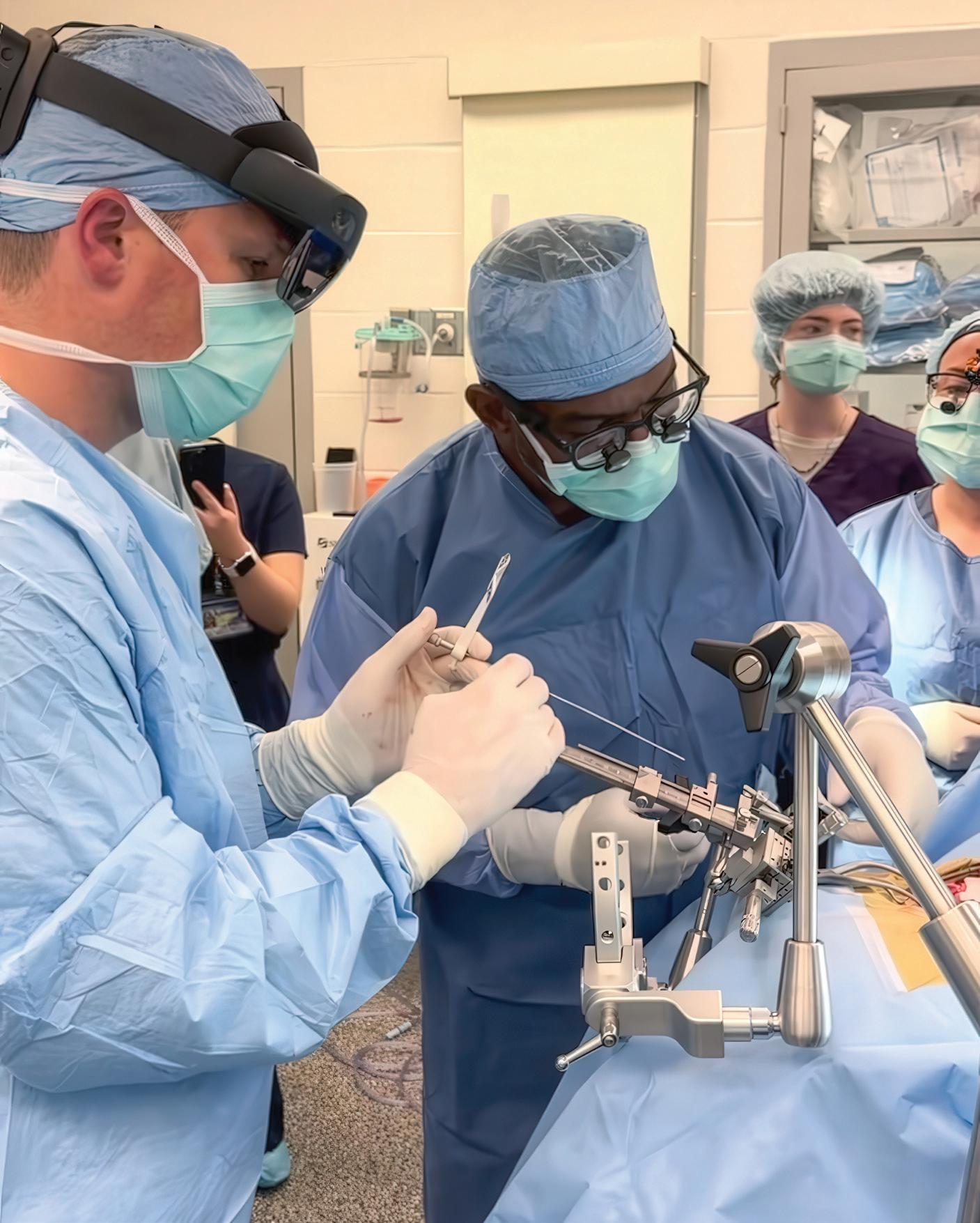
“The way we approached her surgery highlights the value of state-ofthe-art treatments that combine VisAR-guided biopsy and resection with infrared tumor imaging and complex genetic testing to guide the best next therapeutic steps,” said Panek.
The Penn Vet lab of Timour Baslan, PhD, would then perform a whole genome sequencing of Geddy Lee’s tumor.
“In veterinary medicine, the diagnostic process often ends after MRI imaging, and further treatment may be recommended based on those results alone. Many owners opt for radiation therapy or chemotherapy based on MRI findings, but without precise knowledge of the condition, these may not always be the best options.”
The following day, Geddy Lee was awake and charming her care team.
Soon after, she was discharged with medication to manage inflammation and prevent seizures. Follow-up visits showed she was healing well. During a March re-evaluation at Ryan Hospital, Panek and Arendt were happy to report that Geddy Lee showed no radiological signs of tumor regrowth. Even better was the biopsy result from the Baslan lab.
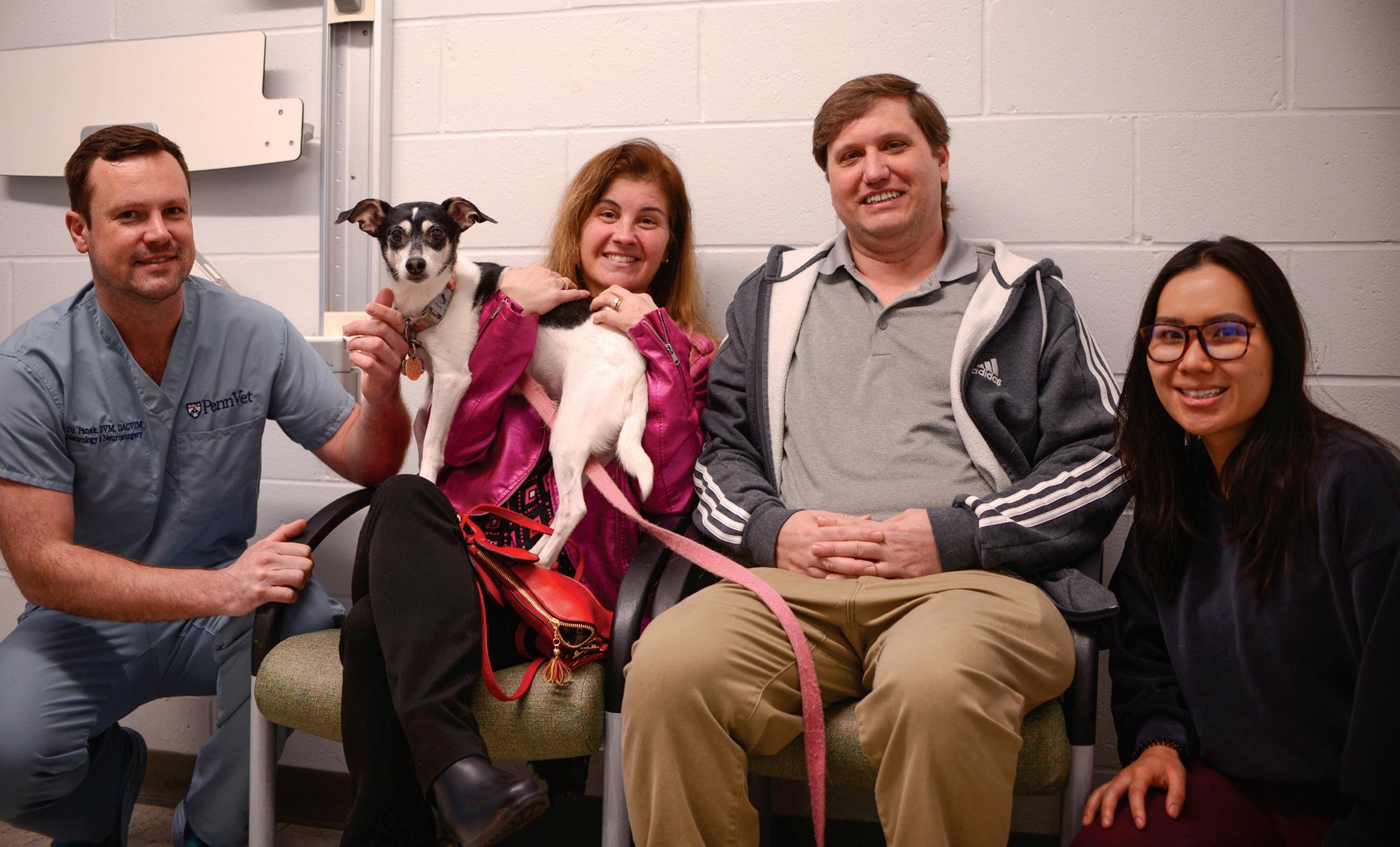
“Geddy Lee’s genetic testing does not look like it is a glioma,” said Panek. “This is great news for the Crottys!” And for Geddy Lee, who will forever be a veterinary pioneer.
“In human medicine, we often have clearer answers because of extensive research and data. But in veterinary medicine, we are still building our knowledge. Cases like Geddy Lee’s help validate our approach and provide insights for future studies in dogs and humans,” said Panek.
For the Crottys, Geddy Lee’s contribution to science is a value-add: “She’s such a part of our family. There was never a question—we would do whatever it took to help her. And seeing her now, it was all worth it. She’s been through so much, and she just keeps going. She really is a survivor. We’ll always be grateful to the Ryan Hospital team. And we hope that research and technologies that come from Geddy Lee’s surgery can help, even if in a small way, to treat brain cancer.”
Another twist in Geddy Lee’s story: she’s named after the lead singer of the band Rush, whose bandmate Neil Peart passed away in 2020 from brain cancer.
And for Amankulor, the entire experience was more than a professional highlight; it was personal. His father also died of the disease, inspiring him to move the needle on research. And, as a dog owner himself, he felt a personal tug during Geddy Lee’s surgery. “This was one of the most remarkable cases of my career,” he said. “I was emotional when Geddy Lee woke up, knowing what she means to her family. And her case is the beginning of something remarkable for science. It’s powerful, and we should all be proud of her contributions!”

“This was one of the most remarkable cases of my career. I was emotional when Geddy Lee woke up, knowing what she means to her family. And her case is the beginning of something remarkable for science. It’s powerful, and we should all be proud of her contributions!”
Nduka Amankulor, MD
Presidential Associate Professor of Neurosurgery
BY SACHA ADORNO
As a child in Central Pennsylvania, Stephen Peoples, V’84, loved science and the natural world. The interest led him to Penn Vet. But beyond vet school, he was unsure exactly where his career would head—into clinical care, research, or something else entirely. He found the answer in an unexpected place: orthopedics.
As a second-year veterinary student, Peoples started working with Charles Newton, DVM, then professor of orthopedic surgery at Penn Vet. “I worked with Chuck for three years on joint biomechanics and fracture fixation in birds,” he said.
At the time, Peoples had no idea how profoundly the experience would influence the trajectory of his professional life.
After earning his VMD, Peoples joined a private practice but found clinical care wasn’t the right fit. “I realized I missed the university setting and research environment,” he said.
Fortuitously, Peoples was recruited by DePuy Orthopaedics (now DePuy Synthes/Johnson & Johnson) to join its clinical research program.
“They knew my work with Chuck,” he said. “I went to Warsaw, Indiana—the company’s headquarters—wondering what I was getting into.” Once there, he found a deep affinity for complex puzzles that bridged discovery and regulation.
Within a few years, Peoples’ scientific expertise, leadership skills, and tenacity propelled him into a role as vice president of clinical research and regulatory affairs at DePuy.
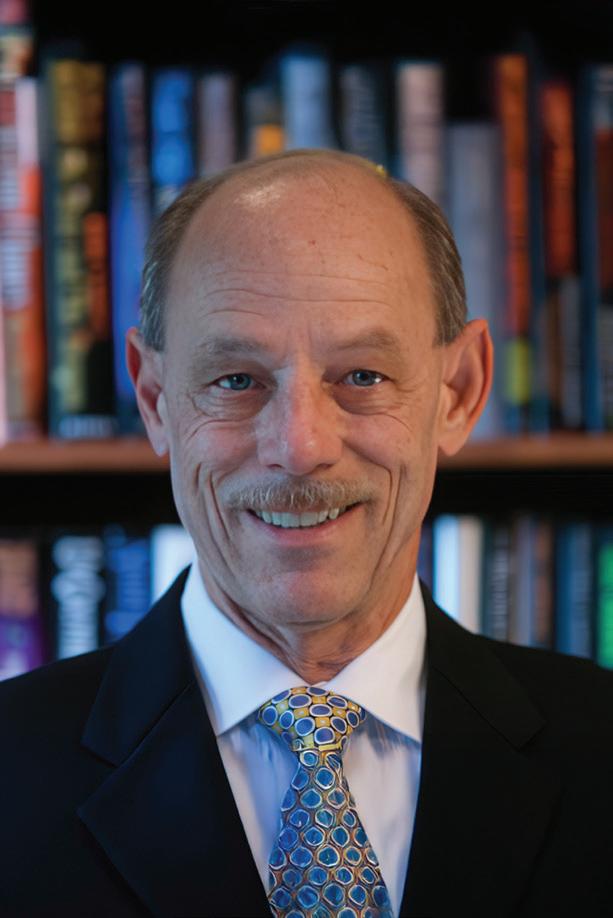
“This was all FDA [Food and Drug Administration] work,” he explained.
“I worked to steward DePuy’s advances through FDA approval, a critical step to get them to the market.”
Over the next decade, Peoples became a recognized leader in the orthopedics industry for his successes ushering products through FDA.
When Johnson & Johnson (J&J) acquired DePuy in 1997, Peoples’ role expanded dramatically. He was named worldwide vice president for clinical, regulatory, and quality systems, overseeing global clinical, regulatory compliance and quality at the company’s 32 plants worldwide. J&J also sent him to executive business programs at the Wharton School and the University of Michigan.
“I had to learn all about quality across our multiple locations,” he said. “Luckily, I’m a fast learner and took that on. It was fascinating and challenging.”
After more than a decade in industry, Peoples again felt the pull of academic medicine. In 2009, he received a call from Joseph Iannotti, MD, PhD, director of the Orthopaedic and Rheumatologic Institute at Cleveland Clinic.
“The ability to problem-solve, to adapt—that’s been invaluable. Everything calls for critical thinking, whether working with animals, orthopedic implants, or complex FDA regulations.”
STEPHEN PEOPLES, V’84
That call sparked a new chapter in Peoples’ career—consulting.
“I worked with Dr. Iannotti on shoulder replacement surgery research,” said Peoples, who’d left DePuy and set up his own shop as Peoples & Associates. “I worked alongside top orthopedic surgeons, developing new techniques to improve patient outcomes. It was an incredible experience collaborating with some of the most brilliant minds in orthopedic surgery.”
As a consultant, Peoples worked with Cleveland Clinic for years. He also began consulting for European orthopedic companies, particularly in Northern Italy, on navigating the complex FDA approval process.
“I spent years flying into Venice, working with incredible teams, and helping to bring their innovations to the U.S. market,” he said. “It was some of the most rewarding work I’ve done. And not a bad place to go for business!”
Peoples’ impact on the orthopedics industry was widely noted. He became the first veterinarian ever elected as a fellow of the American Orthopedic Association, a distinction traditionally reserved for medical doctors. “That was unexpected,” he said. “I think they appreciated my unique perspective and the connection I made between veterinary and human medicine.”
He was also appointed to the Orthopedic Institute of Medicine. Additionally, he has served on several boards and councils, including, currently, Penn Vet’s Alumni Board; published numerous research papers; and spoken internationally on critical issues in orthopedics.
And despite his immersion in human medicine, Peoples never lost sight of his veterinary roots. Throughout his career, he served as a scientific liaison for numerous companies, ensuring ethical treatment of animals in research. “It was important to me that any animal research conducted was vital and done as humanely as possible,” he said.
Peoples’ career has been defined by curiosity and adaptability. He’s proud of his contributions to orthopedic science but is, perhaps, most proud of another role—father to four children, who all share his creative streak, although their career paths diverge.
His eldest daughter, Katie, studied anthropology before transitioning into biotechnology marketing. His second daughter, Betsy, pursued cinematography and works in film and television. His son, Thomas, studied 3D animation and works in television production. His youngest, Michael, is a dancer and performer.
“And they’re all avid scuba divers, like me,” he said. “A different kind of exploration.”
Looking back, Peoples credits Penn Vet with shaping his approach to life and problem-solving. He laughed when recalling his acceptance into the School.
“It took me three tries,” he said. “I was determined.”
During his time at Penn Vet, Peoples recalls, “Dean [Robert] Marshak put me on different committees—honor code, curriculum. He even joked that I’d be a great senator. I told him I had no interest in politics—maybe that’s why I worked so well with the FDA!”
What Peoples valued most about his Penn Vet education, beyond making lifelong connections and friends, was how it shapes thinkers.
“The School taught us how to think, not what to think,” he said. “The ability to problem-solve, to adapt—that’s been invaluable. Everything calls for critical thinking, whether working with animals, orthopedic implants, or complex FDA regulations.”
Now semiretired, Peoples continues to consult on select projects.
He’s had an “incredible career, met amazing people, and tackled complex, interesting problems,” which, he said, “is what it’s all about.”
Penn Vet commemorated the official reopening of the newly named Richard Lichter Advanced Dentistry and Oral Surgery Suite at Ryan Hospital with a ribbon-cutting ceremony on November 7. The ceremony celebrated the effort to fund and renovate a state-of-the-art clinic for comprehensive oral and restorative small animal patient care, clinical instruction, and research.
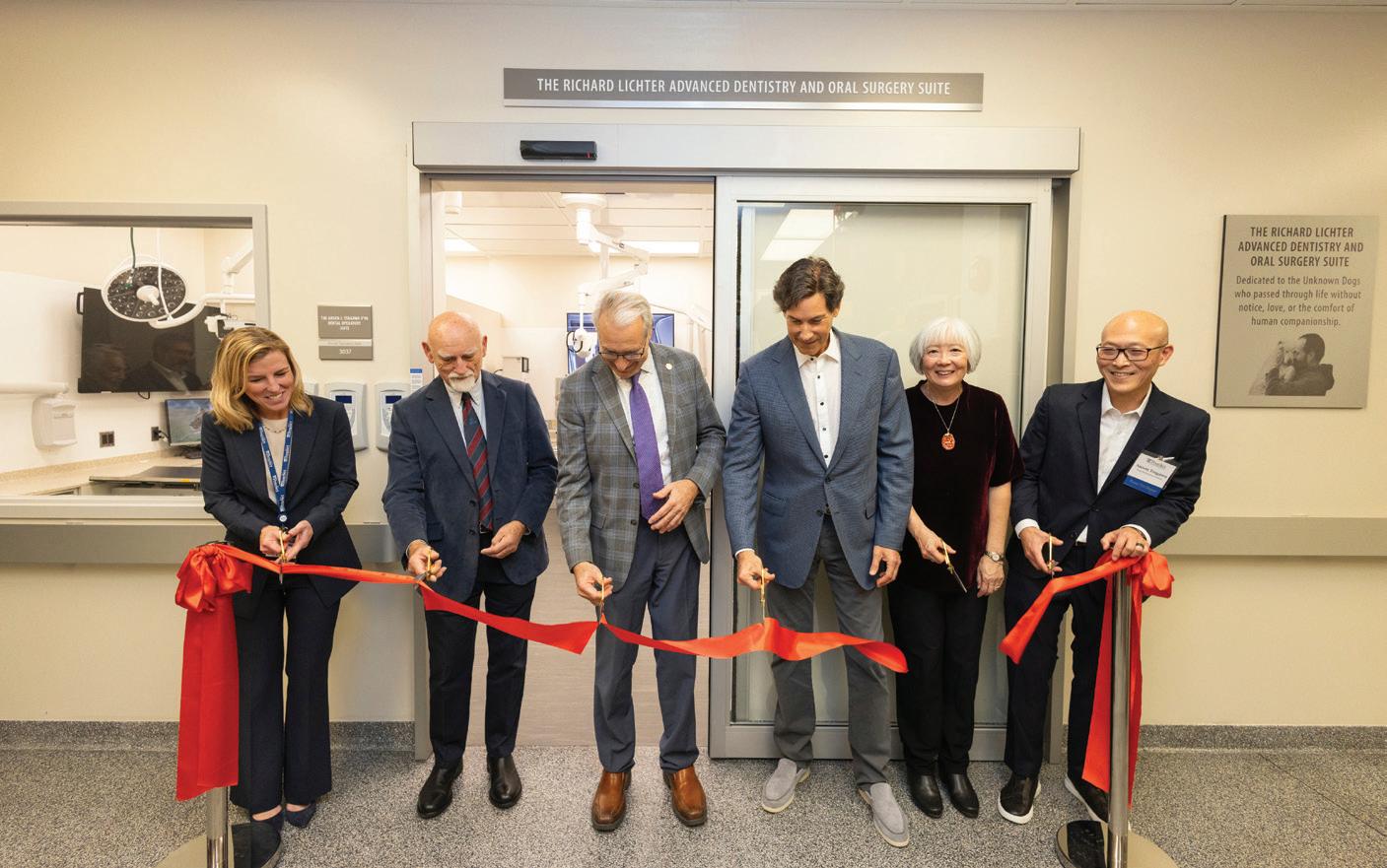
Penn Vet is recognized as the birthplace of the dental and oral surgery (DOS) veterinary specialty. Professor Emeritus of Dental and Oral Surgery Colin Harvey— founding member of the first veterinary dental organization, the American Veterinary Dental Society—delivered remarks at the ribbon cutting on the history of dental services at Penn Vet.
With a focus on complex oral procedures, including cleft palate repairs, the DOS service attracts clients, students, and residents from across the U.S. and globally. Over three decades of growth and demand for advanced veterinary surgical treatments necessitated a physical space expansion to meet patient and client need.
“It really is a facility of the future,” said Ryan Hospital Director, Chief Medical Officer, and Associate Dean of Clinical Enterprise Brady Beale, VMD, DACVO. “The Richard Lichter Advanced Dentistry and Oral Surgery Suite will allow us to contribute to the clinical research mission that we are so proud of. It will allow us to provide better patient care. This space will also make a remarkable difference in our teaching mission.”
Work on the DOS suite began in February 2024. Construction increased the size of the original dental operatory by adding a third surgical station to accommodate the DOS service’s higher caseload. Adjustable weight surgical tables were installed to offer advanced docking systems for integration of dental equipment and surgical tools. In addition, video capture systems were added at every surgical station to facilitate Penn Vet’s innovative student and resident learning experiences.
A space was also established for a Xoran Technologies vTRON cone beam CT unit, an advanced imaging modality that allows for 3D imaging of teeth and bones. Offering instant access to images and advanced software viewing capabilities, the vTRON will allow for real-time diagnosing and treatment planning, filling the gap left by traditional 2D radiographs.
Because of its proximity to nine other Ryan Hospital surgery suites, the vTRON will facilitate more efficient care for patients undergoing neurology and orthopedic surgeries.
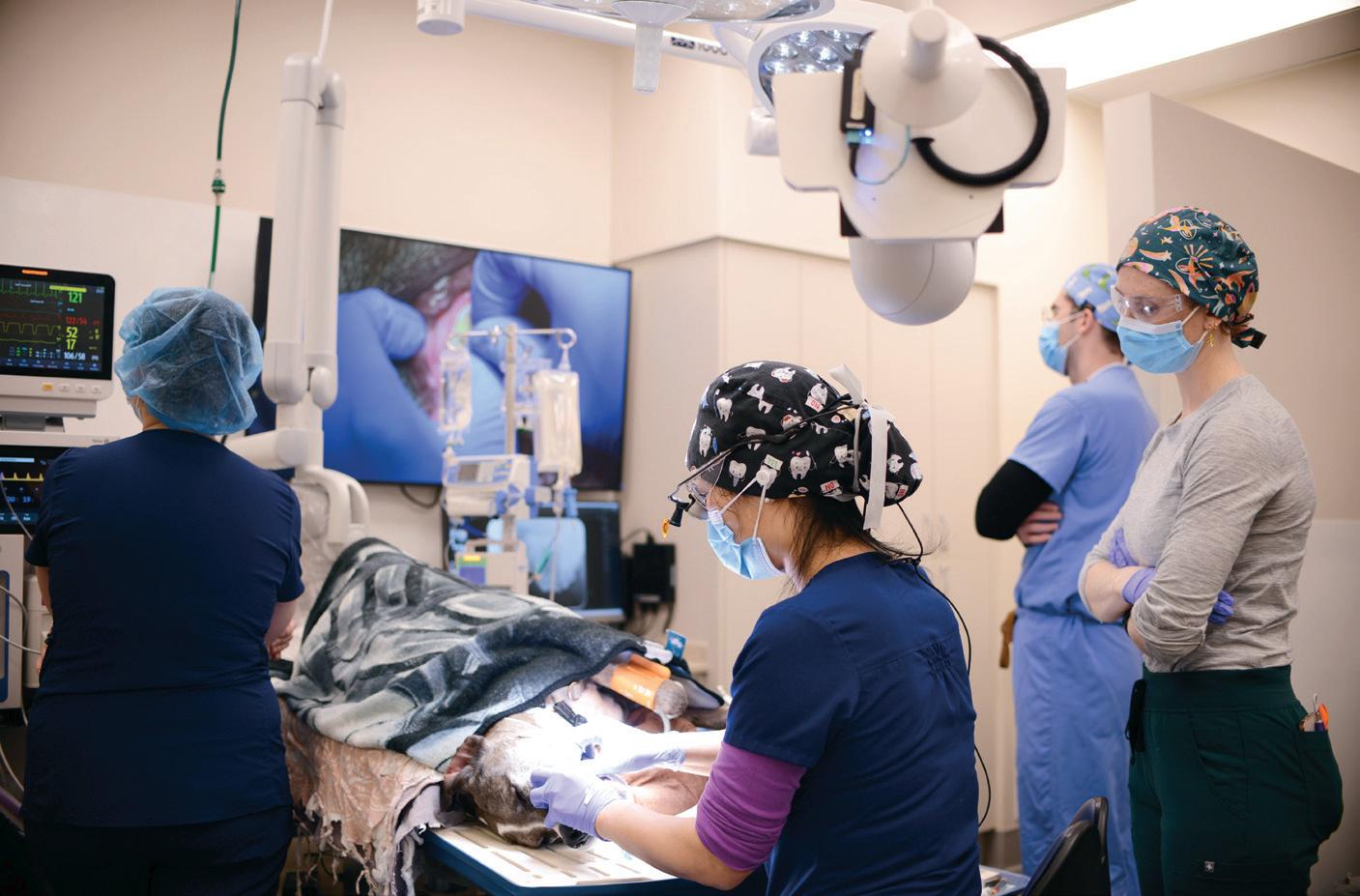
p As resident Haixia Kong, BVetMed, works on a patient, students have the option, in the larger space, to observe directly or watch the procedure on the wall-mounted screen.
“My mission is to support dogs during their greatest time of need, but I am not a veterinarian. I can’t fulfill my mission without great partners,” said Richard Lichter. “Penn Vet is an amazing partner, because they don’t just create something that is great, they pay attention to every single detail. With this new suite, they have built something that is truly spectacular.
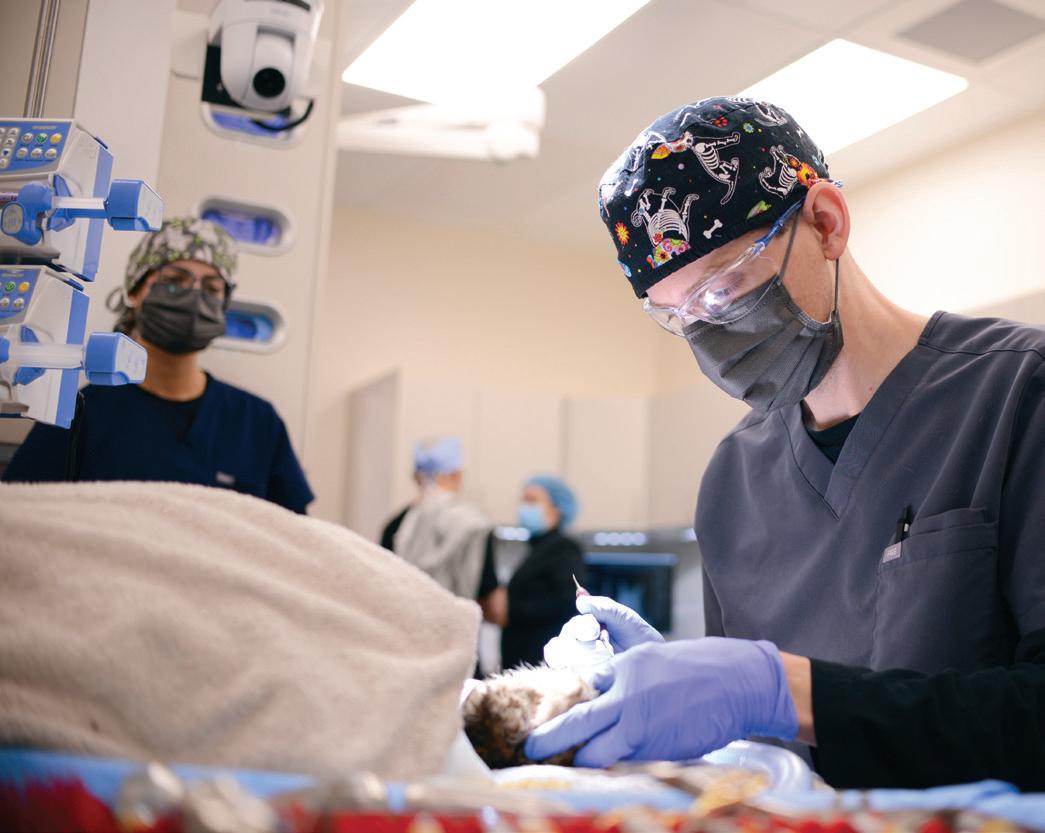
A student watches as resident Robert Thompson, V’22, works on a feline patient.
This space is dedicated to the unknown dogs who passed through life without notice, love, or the comfort of human companionship.”
“The new Richard Lichter Advanced Dentistry and Oral Surgery Suite is a testament to our commitment to excellence,” said Gilbert S. Kahn Dean of Veterinary Medicine Andrew Hoffman, DVM, DVSc, DACVIM.
“This facility enhances our dentistry and oral surgery service while shaping the future of the field by advancing the training experiences of the next generation of veterinary dental and oral specialists. Thanks to the generous contributions of Richard Lichter and our esteemed naming donors—Nadine Chien, PhD, her late husband Frederick Batzold, PhD, and Anson Tsugawa, V’98—we are creating a legacy that builds upon Penn Vet’s reputation as a regional and national destination for the most advanced care of companion animals.”
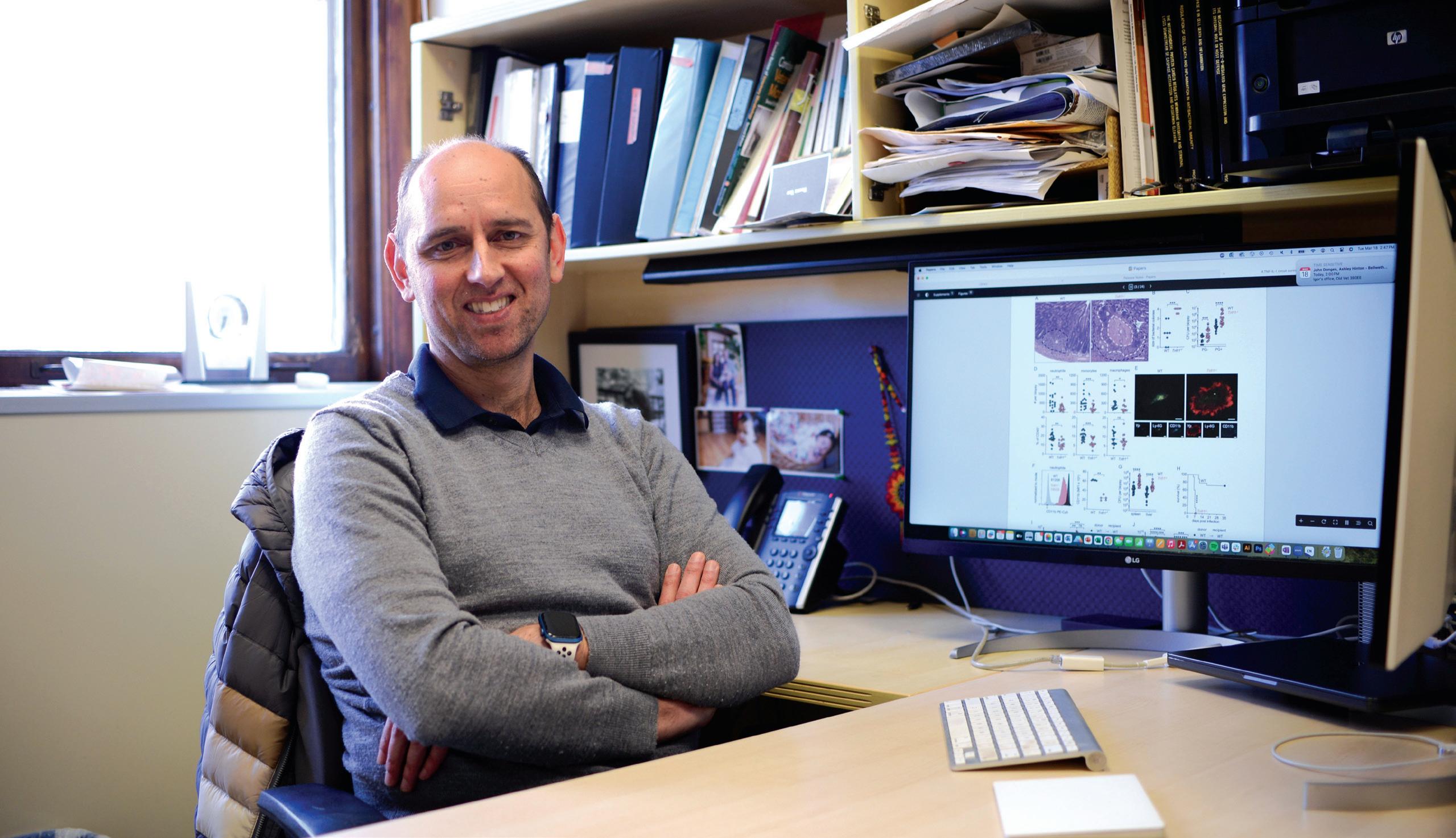
By Sacha Adorno
Infectious diseases remain the leading cause of death worldwide. In his Philadelphia-based lab, Igor Brodsky is on a mission to understand how the body recognizes and responds to invading organisms that cause several diseases.
With Penn Vet since 2011, Brodsky chairs the Department of Pathobiology and holds a secondary appointment in the Department of Microbiology at Penn’s Perelman School of Medicine. He’s also part of collaborative research hubs like the Penn Center for Genome Integrity and the Institute for Immunology and Immune Health.
“My lab focuses on how the innate immune system—our first line of defense against disease—detects and responds to bacterial threats,” he said. “We’re especially
interested in how threatening bacteria evade detection.”
For example, sepsis: “With sepsis, we’re investigating how certain bacteria trigger an exaggerated immune response. There’s a detection system inside our cells designed to protect us, but when it’s overactivated, it can lead to organ failure or even death. Sepsis is hard to treat because, by the time symptoms show up, it’s often too late. If we can understand those early signals, we might be able to intervene before damage is done.”
Some of this work is a family affair: Brodsky collaborates with his wife, Sunny Shin, PhD, a professor in the Department of Microbiology at the Perelman School of Medicine. And day-to-day, he shares his office with another close loved one: Jules, the family’s dog.
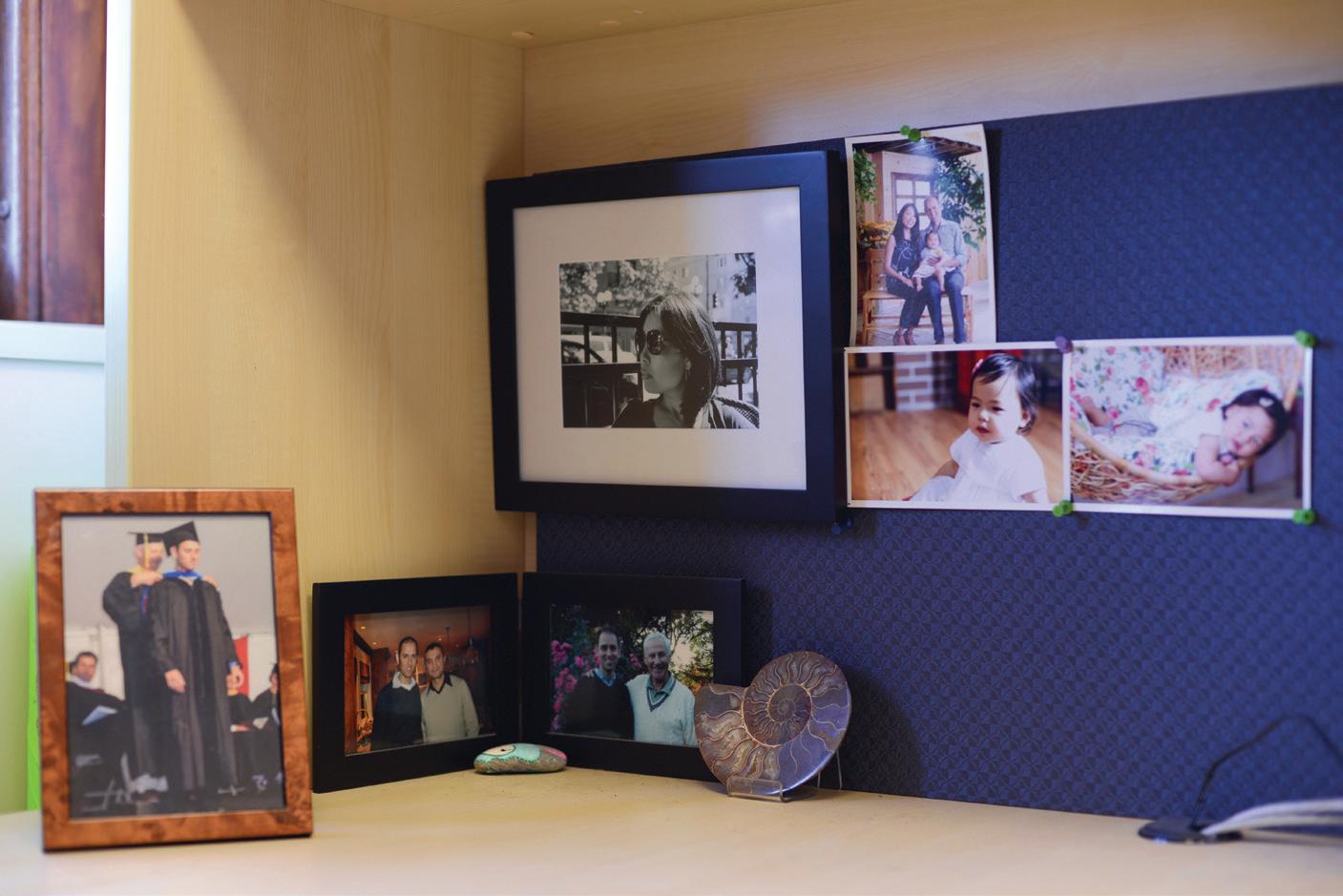
1. Family Photos
When our child, Maya, turned one, my mother-in-law strongly encouraged a family photo session with me, Sunny, and our child, Maya, who dressed in both Western and traditional Korean outfits. Maya’s now a middle schooler and refuses to wear dresses entirely. These are still some of my favorite photos, but I do need to get some more recent pictures.
2. Painted Stone
One of the nice things about getting a PhD and running a lab is collecting so many gifts along the way. They become reminders of different people and times in my life. This painted stone was a parting gift from one of my PhD students. She made one for everyone in the lab, each with a different design. Mine shows a macrophage—a type of immune cell—being injected with a bacterial toxin. It’s a beautiful, thoughtful reminder of our work together.
3. Coffee Versus Tea
The hand-painted coffee mug was also a student gift. It’s from Morocco. I go back and forth with drinking coffee. There have been periods when I drink a lot of coffee, which affects my sleep. After one of these intense coffee drinking times, I decided to switch to tea and acquired this setup. I’m back to drinking coffee sometimes, but most days, I come in, boil water in the kettle, and make a pot of loose-leaf tea.

4. The Journal of Experimental Medicine Cover
This is a framed cover from a journal that published one of the lab’s papers. The image shows bacteria inside a macrophage, which reflects the core of our research. It’s an artist rendering of a real image we submitted before AI art was common. It’s both meaningful and a little nostalgic.
5. A “really good boy”
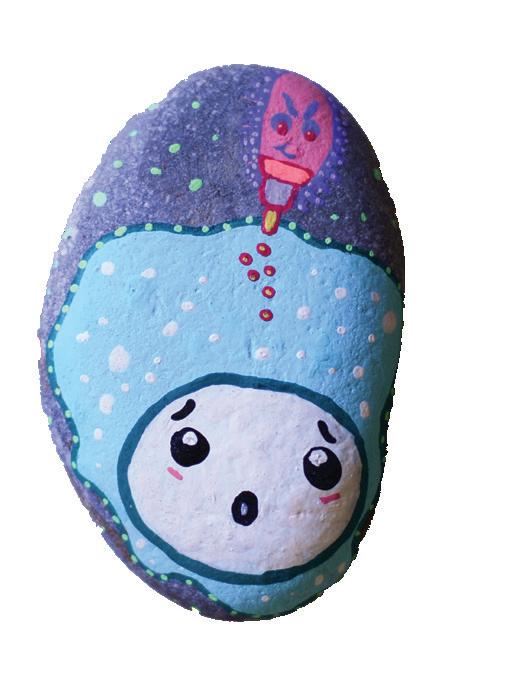
Jules is a rescue from Texas. We adopted him in 2023 at about 11 months old. He’s a sweetheart, a really good boy. We did the doggy DNA testing and learned he’s half Belgian Malinois; most of the other half is American bully with a bit of a pitbull and Dutch Shepherd. He comes in with me most days and even has a best friend down the hall — [associate professor in the Department of Biomedical Science] Montserrat Anguera often brings her white Samoyed. They love to see each other and frequently play in the courtyard.
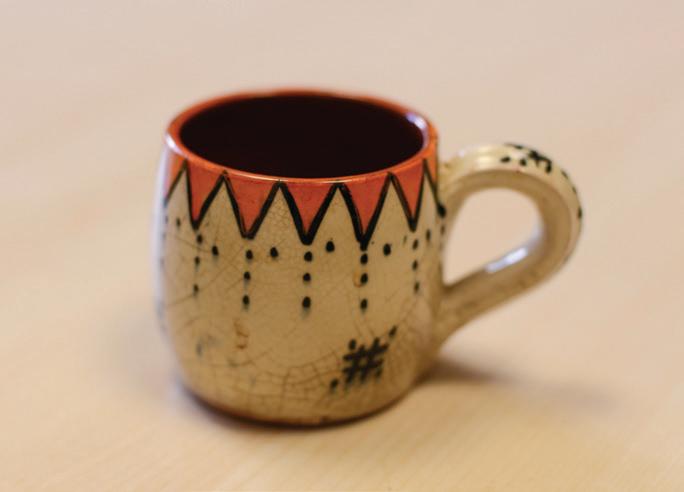
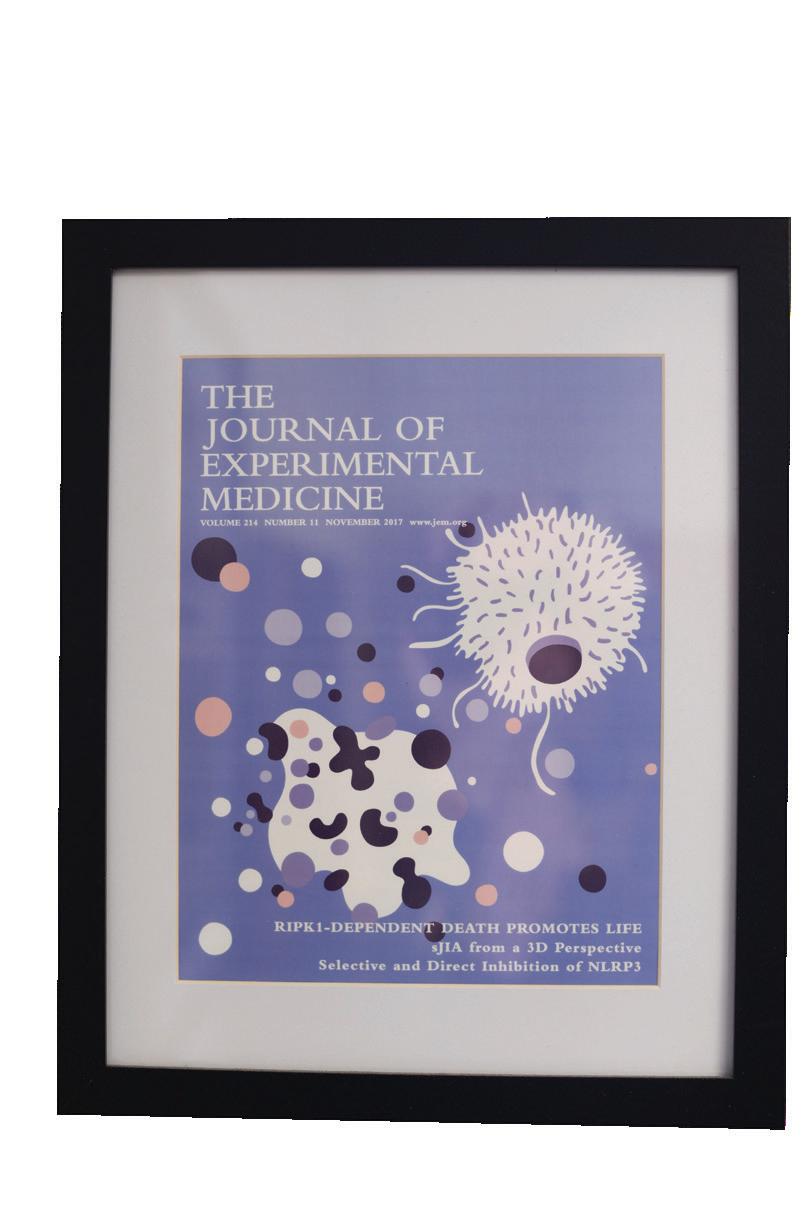
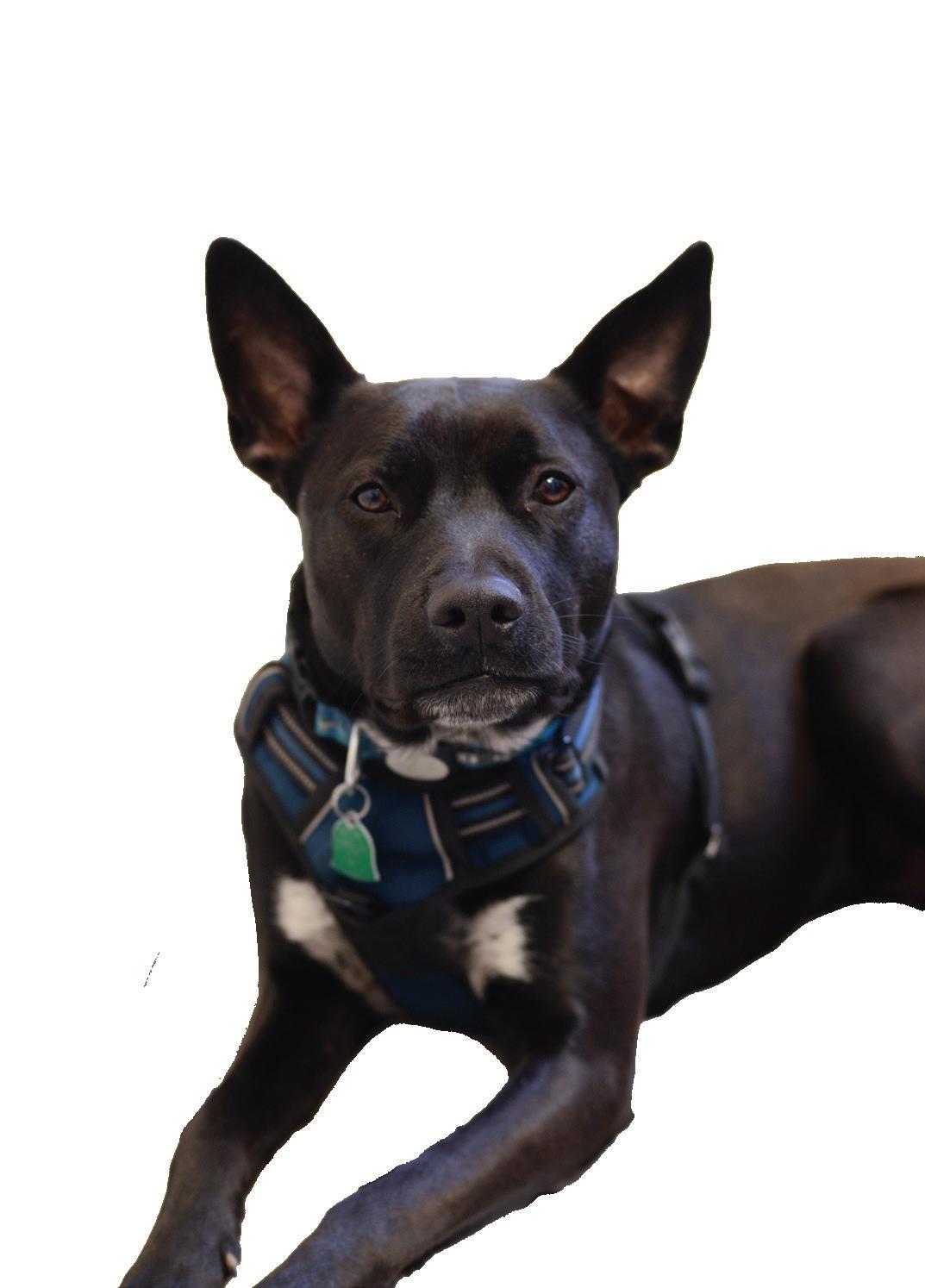
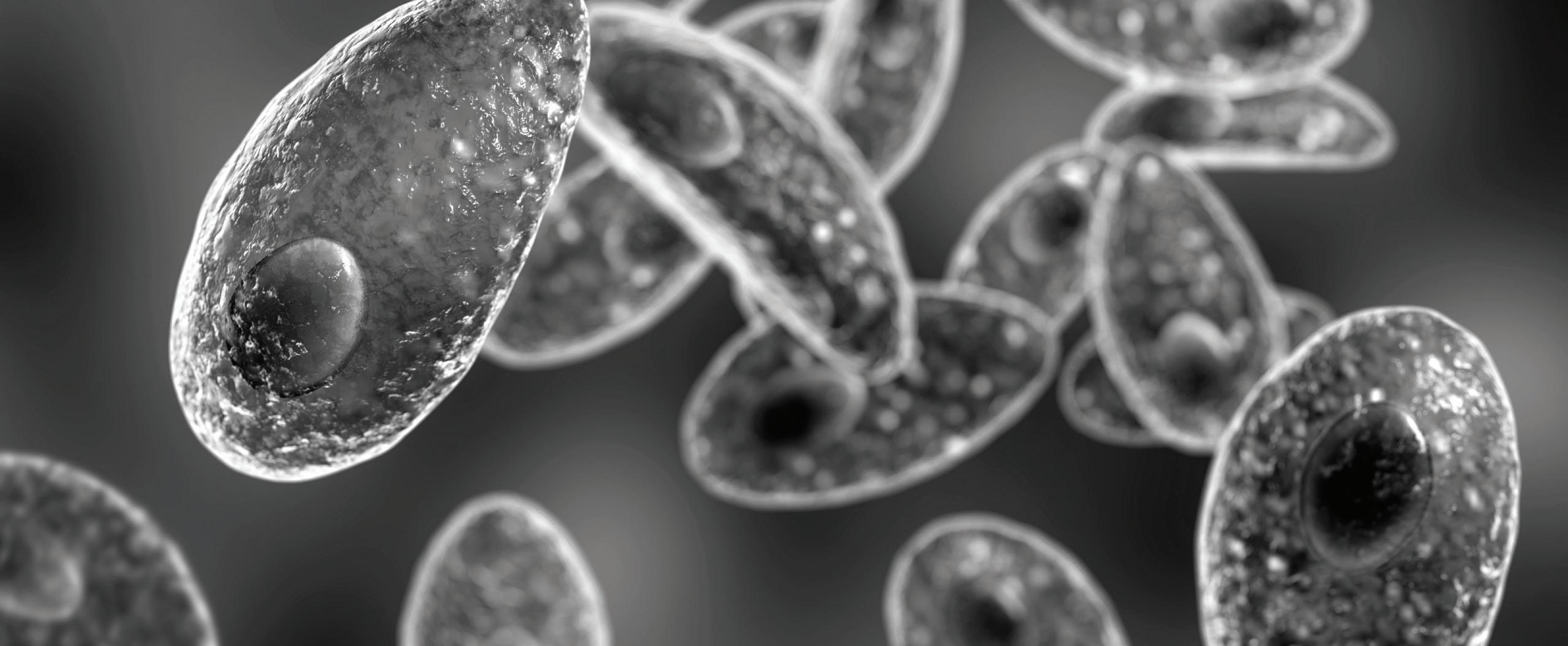
BY ERICA MOSER Penn Today
Most humans have long-lived infections in various tissues—including in the nervous system— that typically do not result in disease.
The microbes associated with these infections enter a latent stage during which they quietly hide in cells, playing the long game to evade capture and ensure their own survival. But a lack of natural models to study these quiescent stages has led to gaps in scientists’ understanding of how latency contributes to pathogen persistence and whether these stages can be targeted by the immune system.
Now, a team led by Penn Vet researchers shows that the immune system indeed recognizes the latent stage of the parasite Toxoplasma gondii, which causes toxoplasmosis—challenging some common assumptions about how the immune system deals with infections in the brain. Penn Vet professor Christopher A. Hunter, the paper’s senior author, says this knowledge supports the idea that Toxoplasma gondii cysts can be targeted and perhaps even cleared, and the findings have implications for other infections and potential future therapies. The paper also demonstrates how cysts promote the mutual survival of the parasite and host.
In its latent stage, Toxoplasma gondii forms long-lived cysts in neurons in the brain, which helps the parasite evade the host’s immune response. However, in this study, the researchers found that certain T cells can target neurons containing cysts, thereby promoting parasite control. But there’s a trade-off. They also found that when cysts are not formed, there is an even higher parasite burden and increased damage to the brain. The study is published in Nature Microbiology
THERE’S THIS BALANCE OF THE PATHOGEN NEEDING TO TAKE HOLD IN THE HOST BUT NOT EXPAND SO MUCH THAT IT’S DETRIMENTAL TO THE HOST, BECAUSE IF THE HOST DIES, THE PATHOGEN MAY NOT SURVIVE.”
Lindsey A. Shallberg Doctoral student, Hunter lab
“There’s this balance of the pathogen needing to take hold in the host but not expand so much that it’s detrimental to the host, because if the host dies, the pathogen may not survive,” says author Lindsey A. Shallberg, who at the time of the research was a doctoral student in Hunter’s lab.
Toxoplasma gondii causes toxoplasmosis, an infection that is asymptomatic for most healthy people but poses a greater risk for those who are immunocompromised or pregnant. It is caused by eating contaminated, poorly cooked meat and by exposure to infected cat feces, as felines are the only animal in which the parasite can sexually reproduce.
Co-author Julia N. Eberhard, an immunology doctoral student, points to two findings that run counter to preexisting literature and common notions among immunologists. She says scientists long thought that Toxoplasma gondii cysts could hide out in neurons to prevent immune recognition, but this study showed that “neurons aren’t this complete refuge for pathogens.”
Eberhard says another commonly held belief was that the parasite needs to form cysts to be able to persist, but in looking at a parasite strain that couldn’t convert to the cyst stage, the researchers found that the immune system did not clear the parasite. They could still identify parasites in mice six months later, which Eberhard found very surprising.
Mathematical modeling independently confirmed experimental findings and indicated that immune pressure on the latent stage of Toxoplasma gondii could explain the observed rise and fall in cyst numbers. This was done by Aaron Winn, a doctoral student in the Department of Physics and Astronomy in the School of Arts & Sciences.
Shallberg says this paper came about because co-author Sebastian Lourido, an associate professor of biology at MIT, had identified the key molecular mechanism that allows the parasite to become latent and wanted to know what would happen if the parasite could not form cysts.
In addition, co-author Anita Koshy, a neurologist and scientist at the University of Arizona, had evidence that some neurons could rid themselves of this infection.
While Toxoplasma gondii is a relevant microorganism to study in and of itself, it is also useful in furthering scientists’ understanding of nervous system infections with latent stages in humans that don’t have mouse models, such as cytomegalovirus. “What makes it special is the fact that it’s a tractable model that we can use in the lab and then apply what we’ve learned to other infections,” Shallberg says.
Looking ahead, Hunter says that his laboratory continues to investigate whether T cells directly recognize the neurons and study the T cell response in more detail.
This story was originally published on March 27, 2025, in Penn Today
LOOKING AHEAD, HUNTER SAYS THAT HIS LABORATORY CONTINUES TO INVESTIGATE WHETHER T CELLS DIRECTLY RECOGNIZE THE NEURONS AND STUDY THE T CELL RESPONSE IN MORE DETAIL.
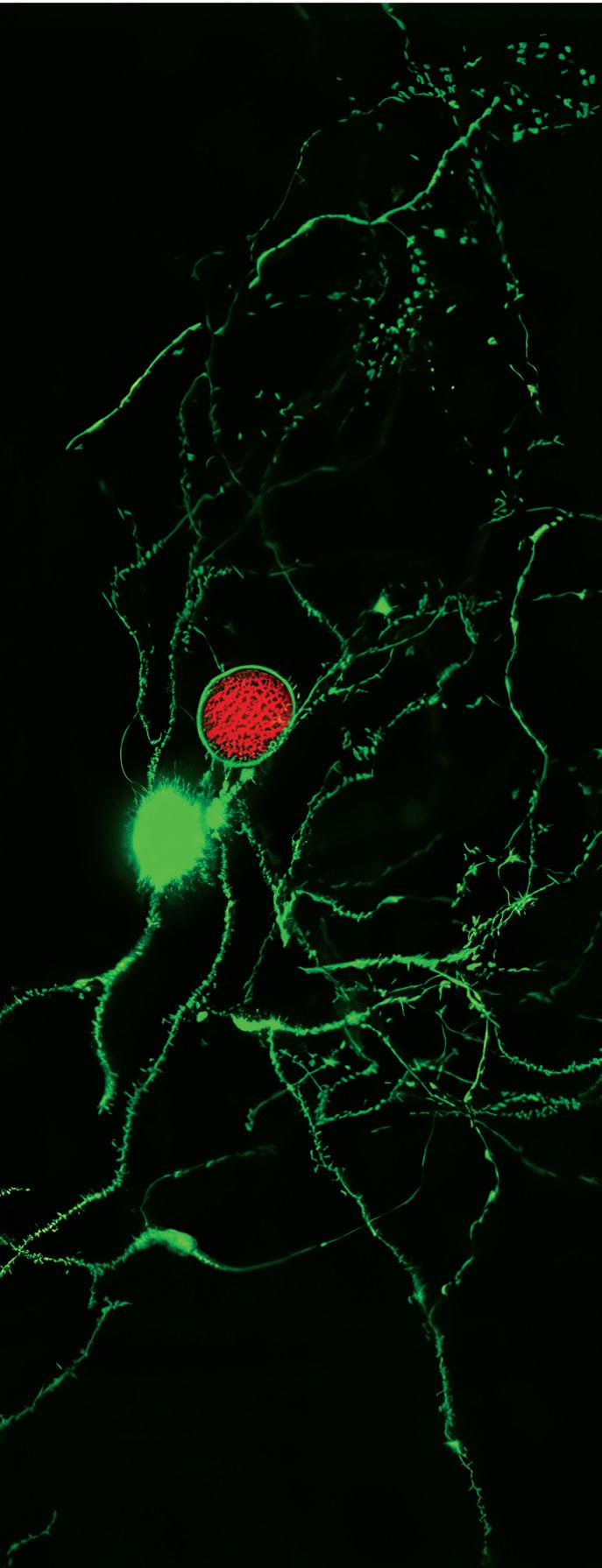
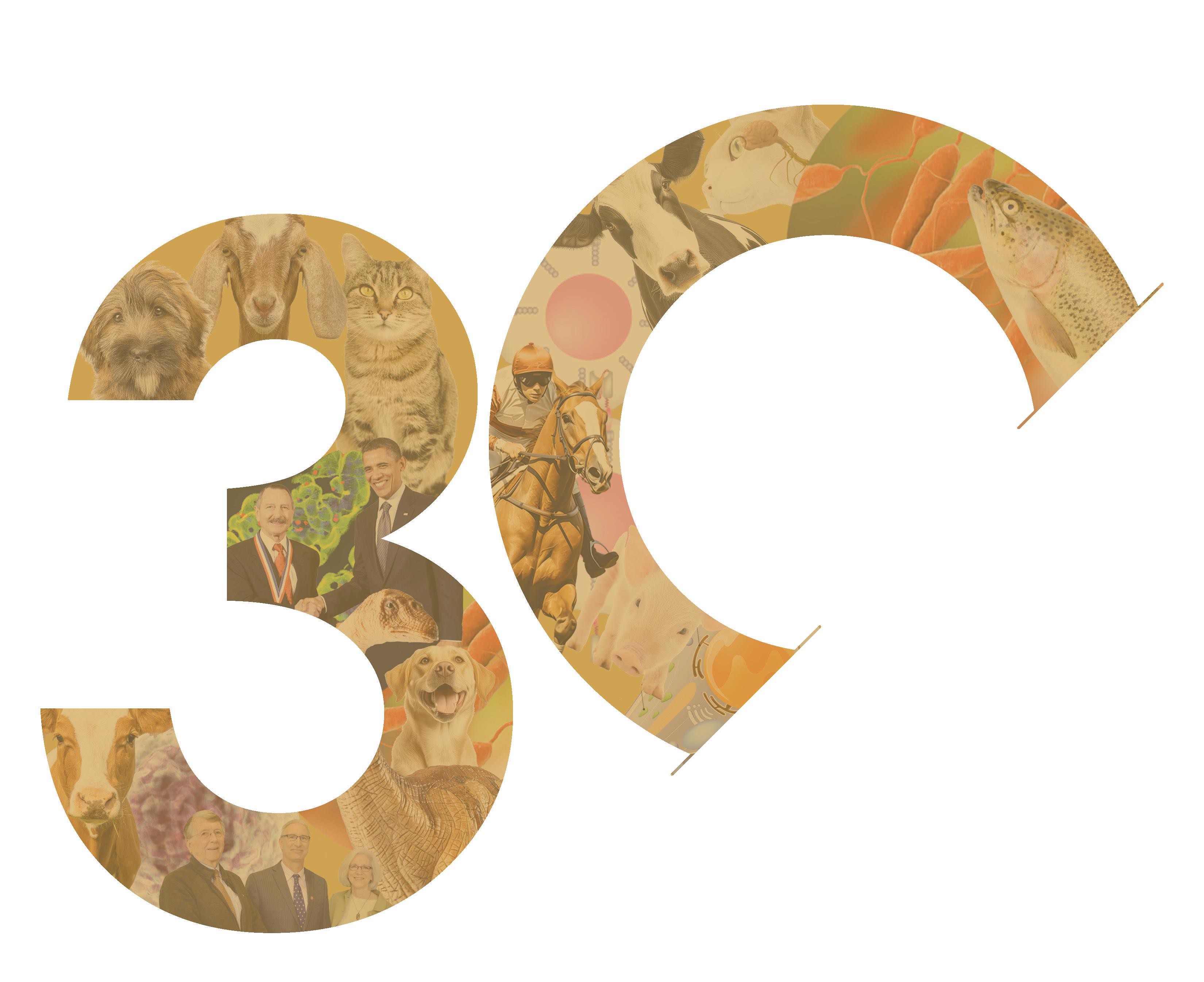
that changes lives
Vice Dean for Research & Academic Resources
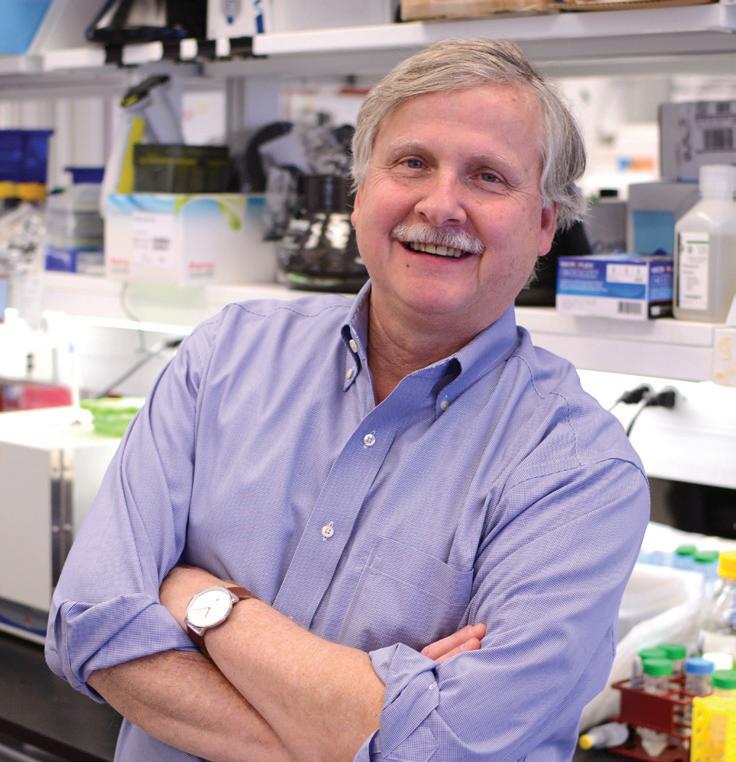
In November, Penn Vet celebrated a milestone—our 30th Anniversary Research Retreat. More than 100 faculty, staff, and postdocs gathered to reflect on three decades of pioneering research in veterinary and human medicine.
The event embodied the School’s mission to train the next generation of veterinary leaders, advance healthcare outcomes and access, safeguard global health, bolster sustainable agriculture, create and support interdisciplinary career paths, and foster community and well-being in the profession.
Since the School’s founding in 1884, Penn Vet scientists and clinicians have tackled life-threatening diseases, improving prevention, diagnosis, and treatment. Across the School, we investigate the complexities of cancer; diabetes; a wide range of infectious, retinal, orthopedic, and respiratory diseases; and more—advancing care for two-legged, four-legged, and winged beings and the world we share.
Our discoveries, once unimaginable, continue to shape science and medicine.
Yet, as we celebrate our past and look to the future, science has entered an era of deep uncertainty. This issue of Bellwether goes to press in a rapidly changing environment. Federal policy changes endanger critical research programs nationwide, including ours. Funding cuts and policy shifts threaten to slow medical progress, hinder scientific knowledge, and weaken public response to emerging health threats.
Penn Vet, our Penn colleagues, and other allies are engaged at the highest policy levels, advocating for the vital role of veterinary research in disease
surveillance, scientific discovery, and public health. Our advocacy will continue, whatever the future holds.
We have weathered challenges before—economic downturns, public health crises, and societal change—and our response has always been to unite as a community, adapt, and persevere.
Penn Vet’s commitment to research is unwavering. The same drive that led us to groundbreaking immunotherapies for canine cancer and advances in regenerative medicine will continue to fuel solutions and interventions for disease, injury, and environmental sustainability.
We know the impact of our work. Gene therapy that restored sight to children began with research at Penn Vet. Our studies on infectious diseases have helped identify risks before they become global threats. Innovations in livestock sustainability and animal well-being help farmers ensure productivity and reduce their environmental impact.
Our scientific breakthroughs make a difference. They aren’t anomalies; they result from a research enterprise dedicated to progress for more than a century.
Join us in reflecting on 30 years of critical discovery. As part of our community and the world we share, the School’s successes are yours. And in the fight for the future of research, our mission remains our North Star. We will persevere.
For 140 years, Penn Vet researchers have transformed veterinary medicine, improved animal health and welfare, and contributed to significant advances in human medicine.
Discover how the last three decades of Penn Vet’s scientific innovations and breakthroughs have illuminated new frontiers.
Ralph Brinster, VMD, PhD, authors a series of landmark studies describing the development of conditions enabling the stable culture of male spermatogonial stem cells and, subsequently, the transplantation of these stem cells to reconstitute spermatogenesis in recipient animals.
Phillip Scott, PhD, and collaborators show that IL-12 dramatically enhances the effectiveness of a vaccine against leishmaniasis.
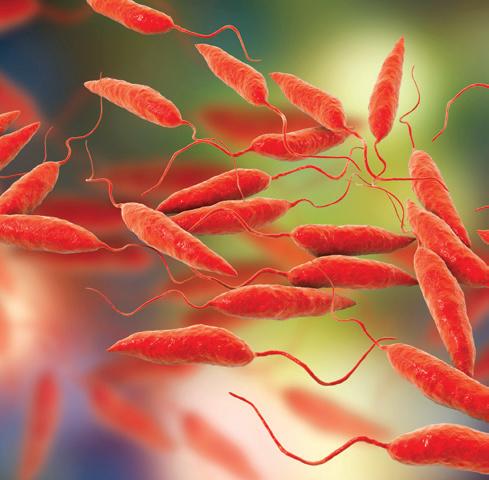
Under the guidance of James D. Ferguson, VMD team at New Bolton Center develops the concept of systemic breeding of dairy cows in an integrated program, leading to global changes in the dairy industry.
John H. Wolfe, VMD, PhD, and collaborators demonstrate the potential of neural progenitor cell engraftment to correct lysosomal storage disorders in a mouse model of mucopolysaccharidosis VII (Sly syndrome).

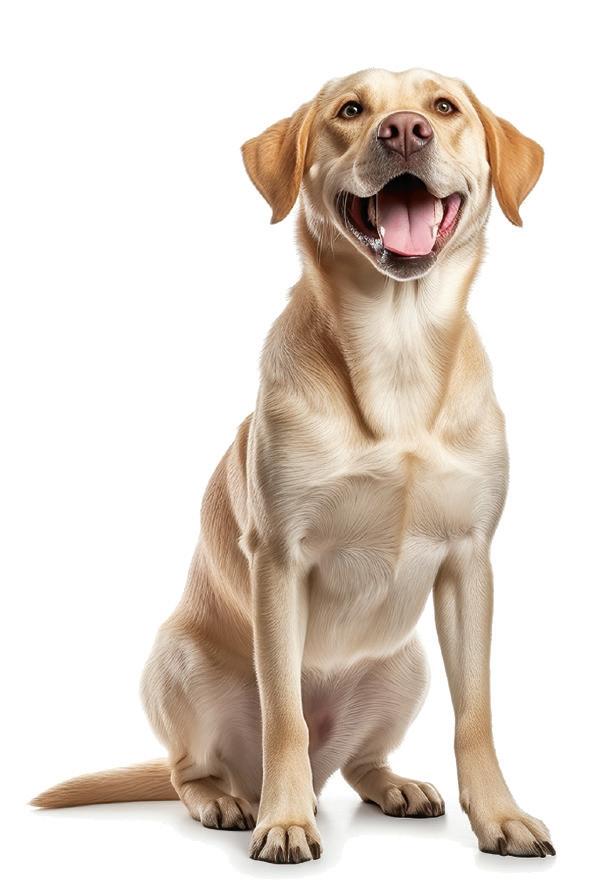
Gail Smith, VMD, PhD, receives a patent for the PennHIP method of assessing canine hip dysplasia.

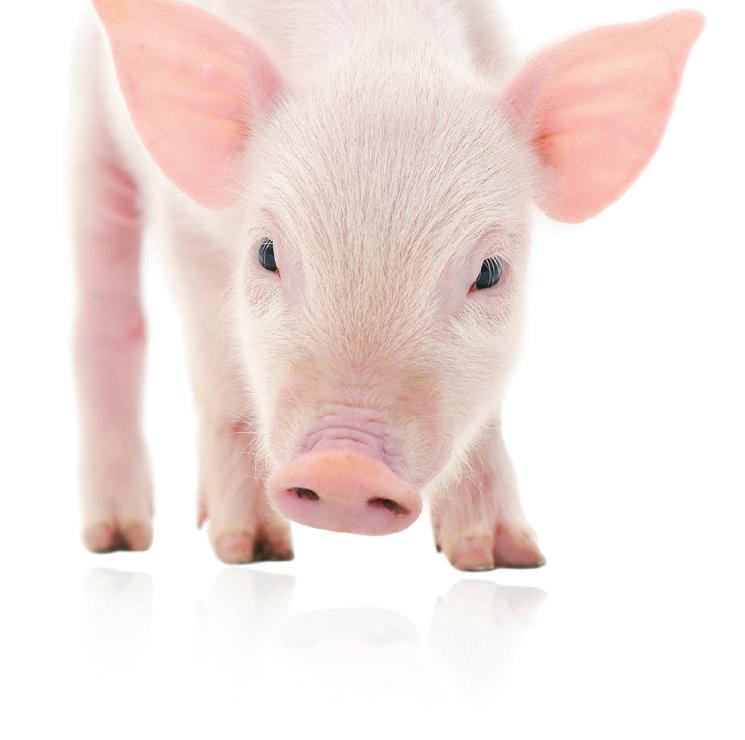
Thomas D. Parsons, VMD, PhD, creates a prototype of a noncompetitive electronic sow feeding (ESF) system. The system uses electronic ear tags to dispense the proper amount of feed to specific animals. Today, more than 200,000 sows across the country are being raised using similar systems.
Ina Dobrinski, Dr. med. vet., MVSc, PhD, develops a novel technique for inducing and maintaining complete spermatogenesis from immature pig and goat testes by grafting them into immunocompromised mice. The findings have implications for preserving the germ lines of critically endangered species.
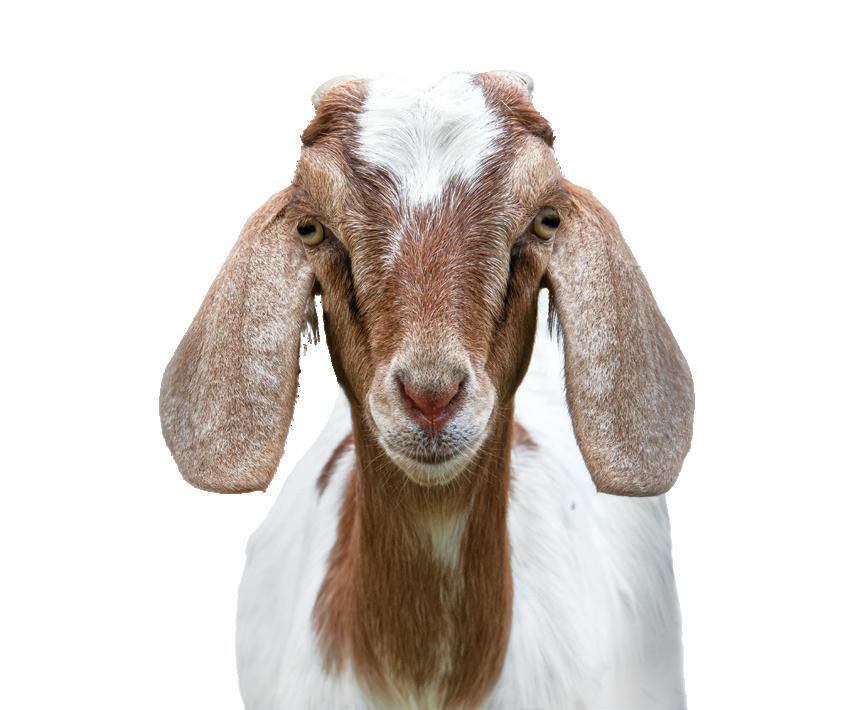
Hans R. Schöler, PhD, makes seminal contributions to the study of pluripotency—the ability of a stem cell to make any cell type in the body—by describing the transcription factor OCT4 as a central regulator of pluripotency.
Dr. Schöler’s work laid the foundation for the generation of induced pluripotent stem cells.
Mark Haskins, VMD, and collaborators produce the first successful application of gene therapy in preventing the clinical manifestations of a lysosomal storage disease (mucopolysaccharidosis VII) in a large animal model (dogs).
James B. Lok, PhD, through gonadal microinjection of DNA constructs, successfully introduces and achieves transient expression of two reporter transgenes in free-living Strongyloides stercoralis females and their progeny.
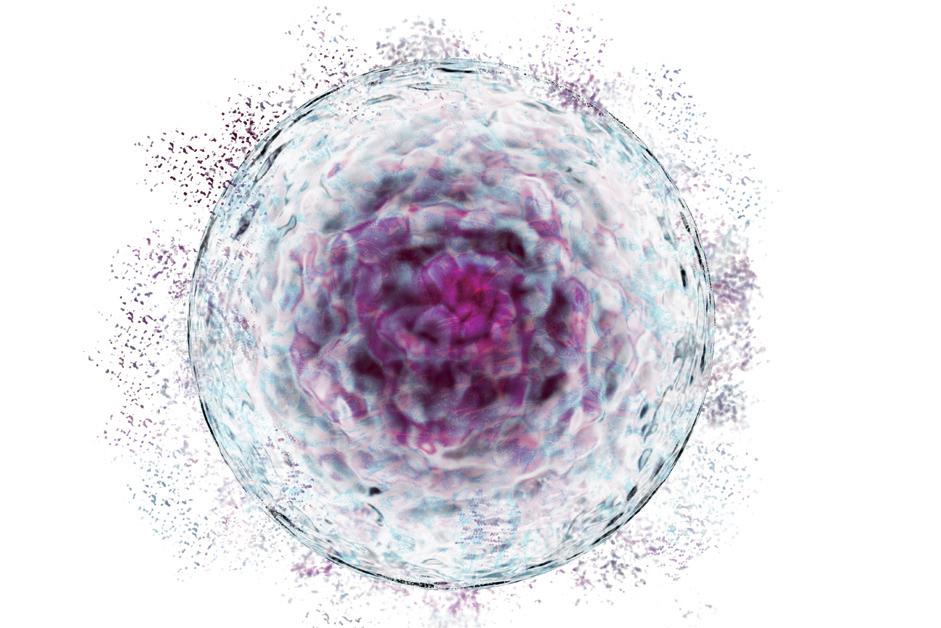
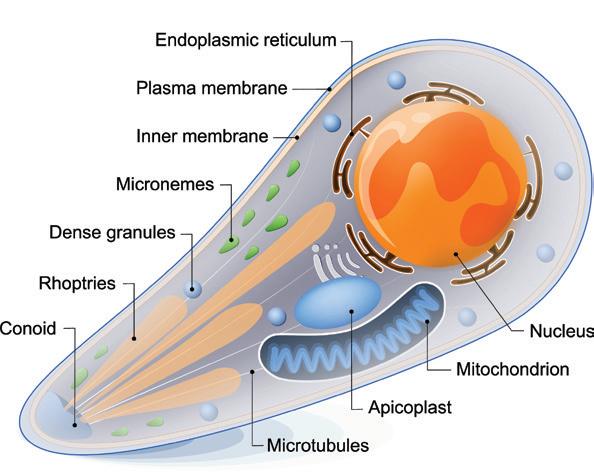
Christopher A. Hunter, PhD, and collaborators discover that the IL-27R (WSX-1) is required to suppress T cell hyperactivity and is critical for survival during Toxoplasma gondii infection.
James A. Serpell, PhD, develops the Canine Behavioral Assessment and Research Questionnaire (C-BARQ), the first canine behavioral assessment of its kind to be extensively tested for reliability and validity on large samples of dogs of many breeds.
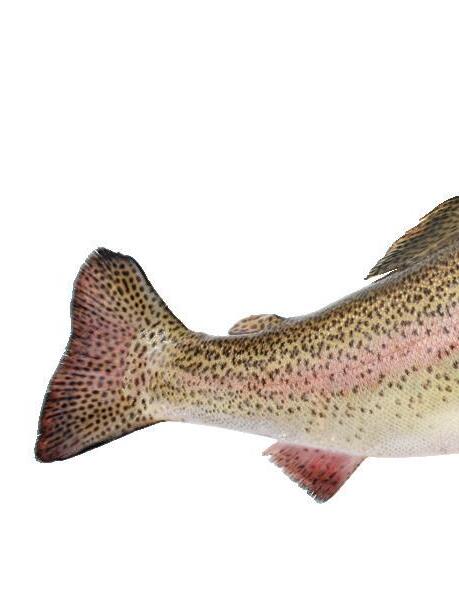
Peter Dodson, PhD, describes a new diplodocid sauropod dinosaur species, Suuwassea emilieae, that was found by in 1998 by William J. Donawick, DVM, emeritus professor of surgery, while on a horseback ride in Montana.
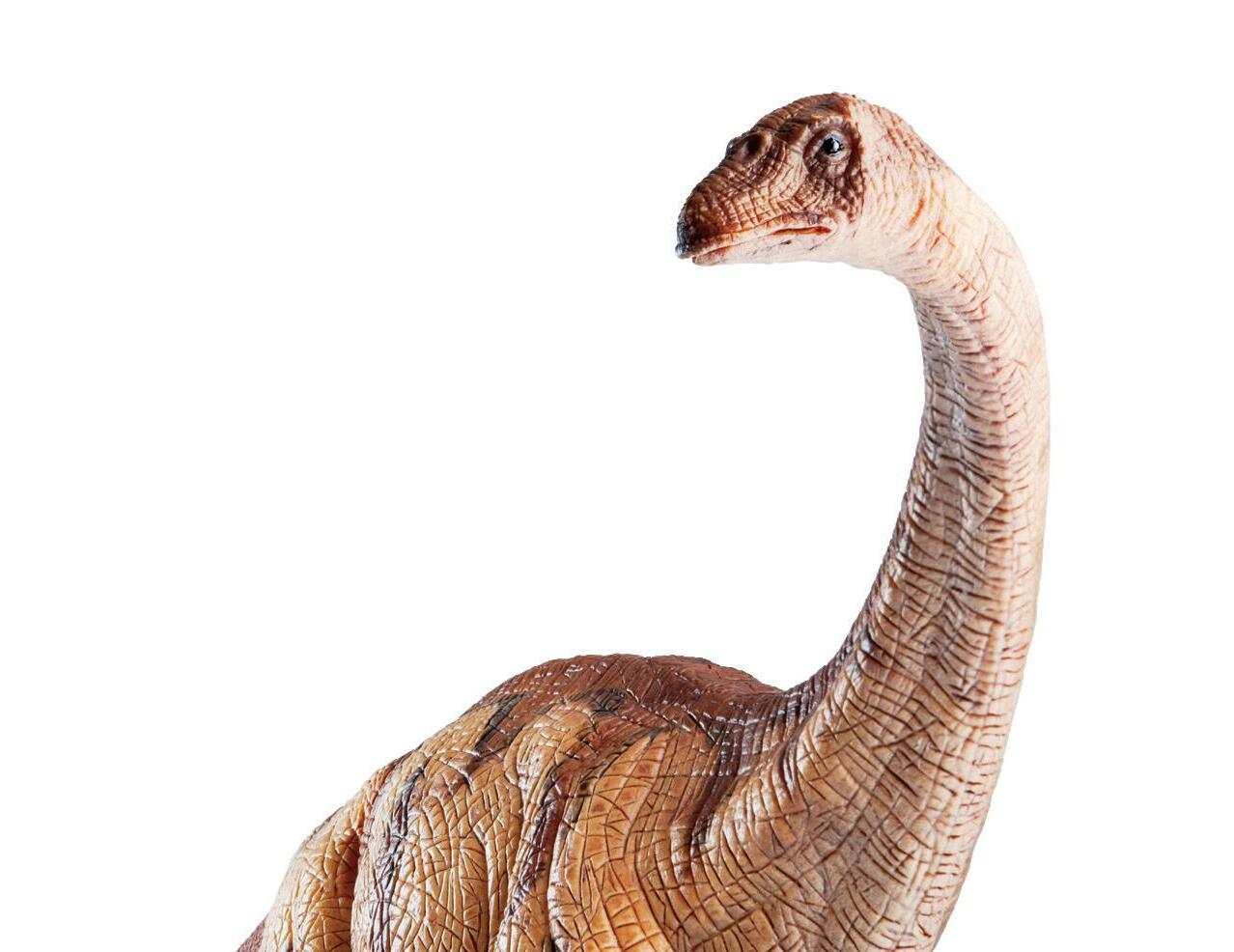
Charles H. Vite, DVM, PhD, performs the first successful gene therapy treatment of a central nervous system disease (α-mannosidosis) in a large animal model (cats).
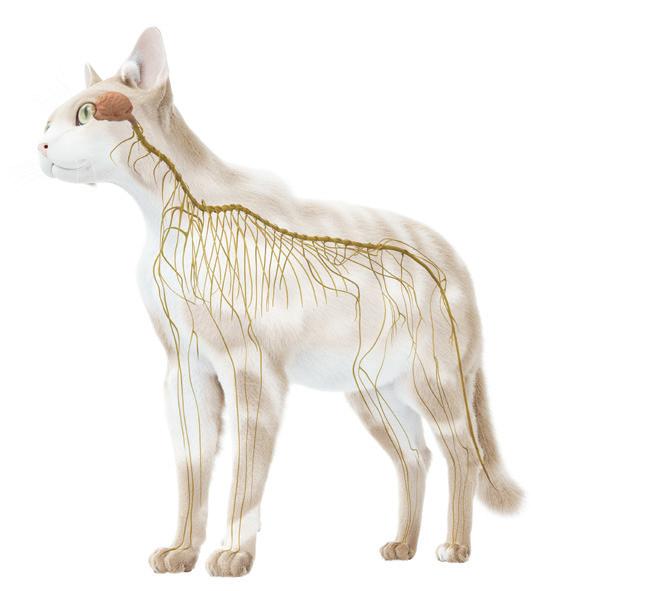
J. Oriol Sunyer, PhD, and collaborators demonstrate that B cells in teleost fish and amphibians possess robust phagocytic and microbicidal abilities, suggesting a potential evolutionary link between B lymphocytes and macrophages.
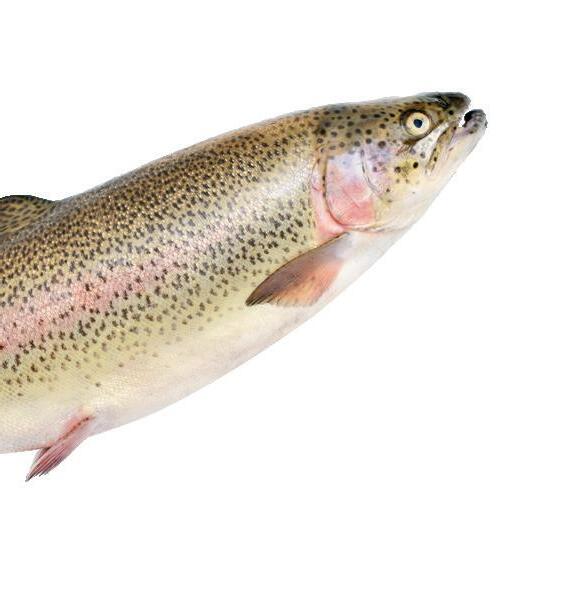
Lawrence R. Soma, VMD; Cornelius E. Uboh, PhD; and colleagues become first in the world to develop a method for confirming and differentiating blood-doping agents—recombinant human erythropoietin (rhEPO) and darbepoetin alfa (DPO)—in equine athletes by testing plasma through liquid chromatography coupled to tandem mass spectrometry.

Ralph Brinster, VMD, PhD, receives the National Medal of Science from President Barack Obama. Dr. Brinster is the first veterinarian to win the medal.
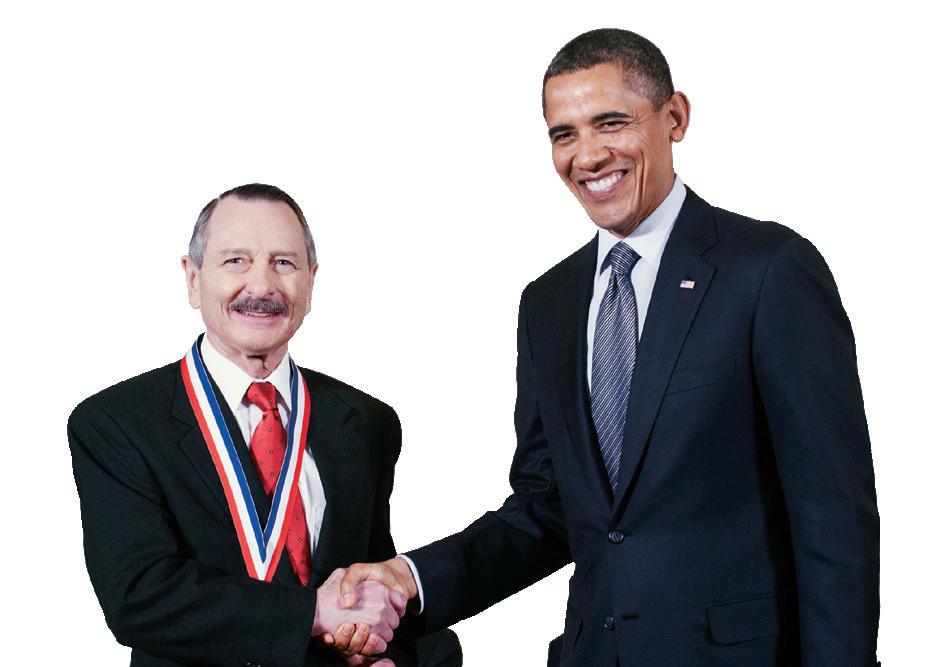
Serge Y. Fuchs, MD, PhD, and collaborators demonstrate that degradation of IFNAR1 undermines survival and activities of cytotoxic T lymphocytes and is a major driver of immunosuppression in colorectal tumors, illuminating IFNAR1 as a promising target for novel anti-cancer therapies.


Dean W. Richardson, DVM, and a co-investigator develop methods for computed tomography-guided internal fixation of equine orthopedic fractures in clinical patients. This technique offers significant advantages in accuracy, planning, and postoperative assessment.
Ellen Puré, PhD, and collaborators describe how fibroblasts within tumors activate expression of a cell surface protein called fibroblast activation protein (FAP) that plays a crucial role in promoting tumor progression by suppressing the immune response to tumor cells.
The work of Gustavo D. Aguirre, VMD, PhD, and William A. Beltran, DVM, PhD, leads to FDA approval of the first gene therapy for biallelic RPE65 mutation-associated retinal dystrophy, an inherited condition that results in progressive vision loss and complete blindness in some patients. This is the first directly administered gene therapy approved in the U.S. that targets a disease caused by mutations in a specific gene.
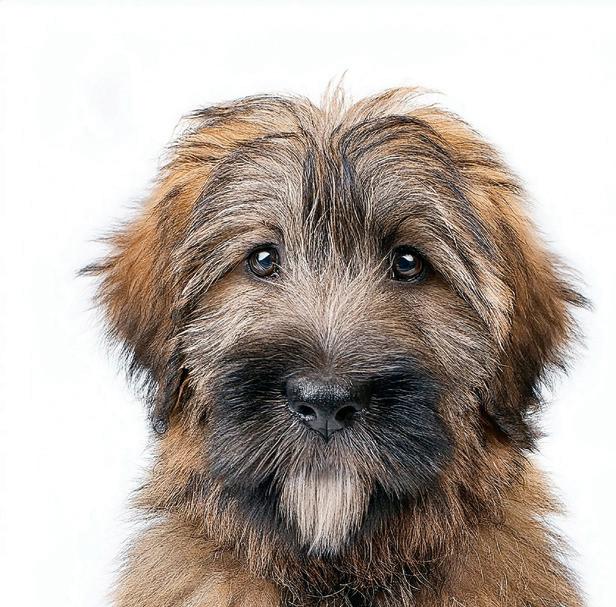

“We have a proud tradition of commitment to fundamental research and a number of parameters support our claim that the School is the leading research veterinary school in the world. To secure our future we must sustain this position and remain at the cutting edge of biomedical research. Because of the broad sweep of veterinary medicine’s responsibilities to society, our mission must include studies at all levels of biological organization, from gene structure to environmental design. We must strengthen interactions between the clinician and the bench scientist. The School can use its intellectual and physical resources at this interface, benefitting our teaching program and advancing our services to society. The application of molecular biology and the emerging biotechnology industry are on the verge of introducing new diagnostic methods and treatments for a spectrum of diseases and significantly changing veterinary medicine. The School must eagerly play a central role in leading the profession in these emerging fields of growth.”
DEAN ALAN KELLY
Bellwether 37, Summer 1995


Our volunteer students, faculty, and staff provided care for 238 cats and dogs from the local community during our free annual clinic. Teams from Penn Medicine and Children’s Hospital of Philadelphia gave free health screenings and influenza vaccines to the pet owners.
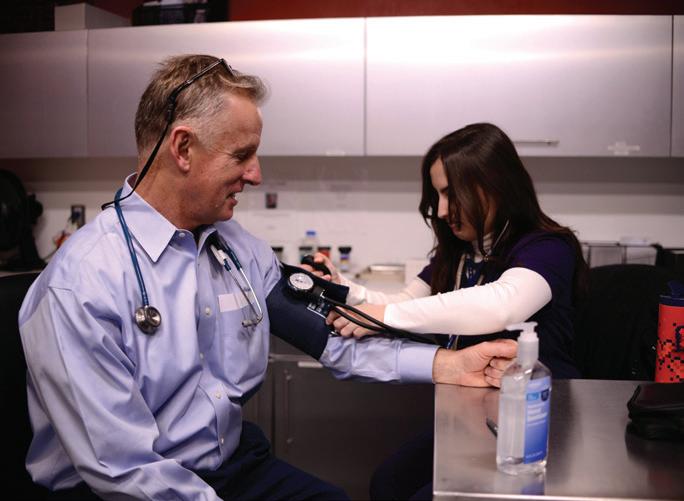
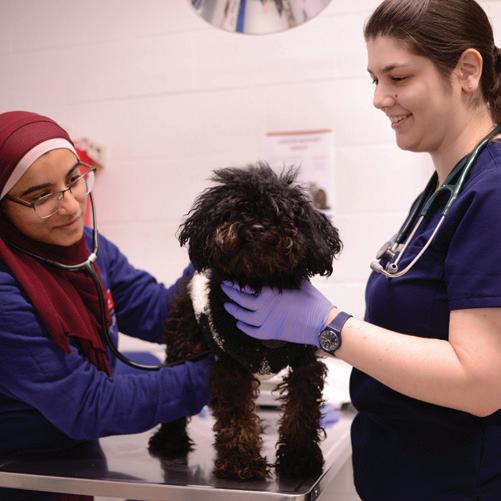

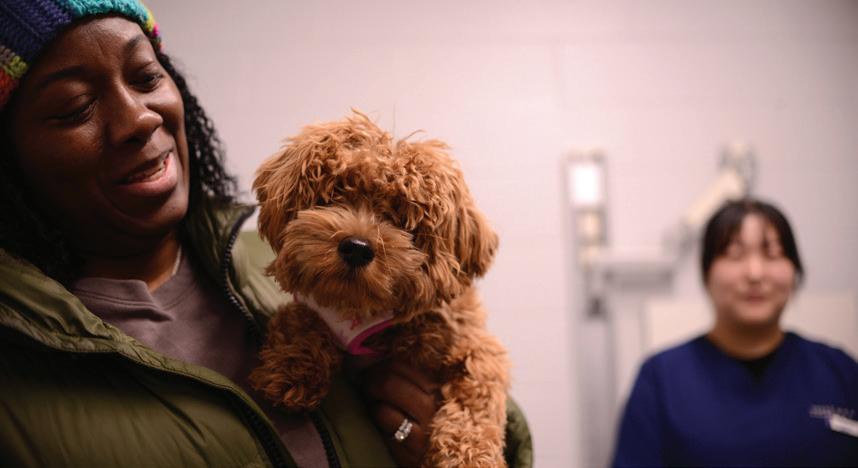

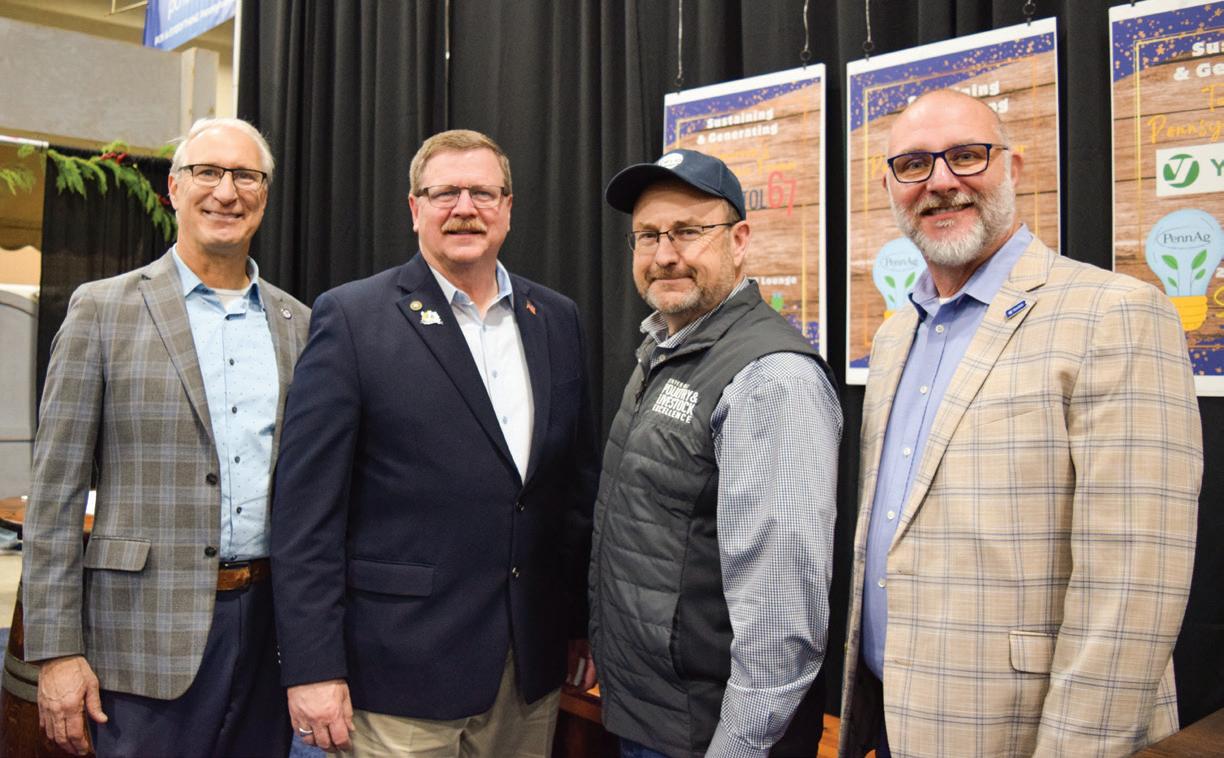
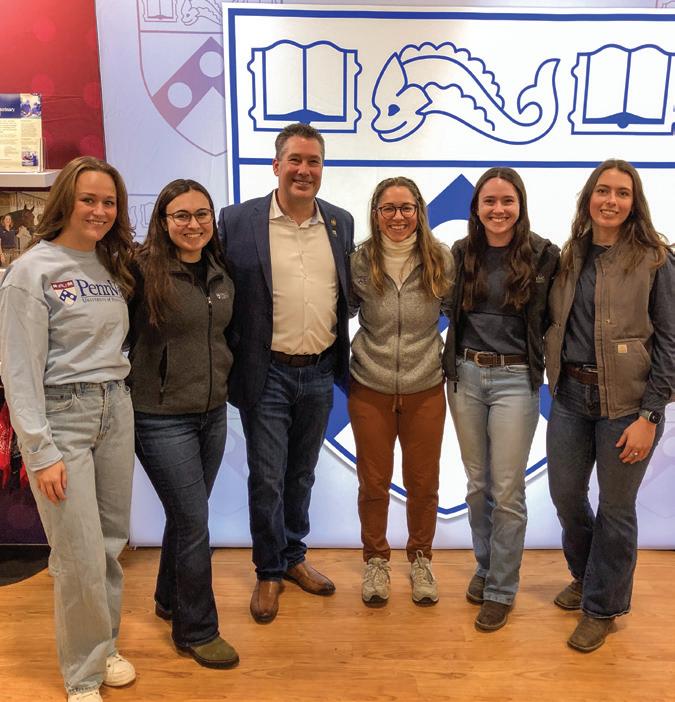
At left, Penn Vet Dean Andrew Hoffman with Penn State’s College of Agricultural Sciences Dean Troy Ott; Council for Agricultural Research, Extension, and Teaching Rep. Jim Shirk; and College of Agricultural Sciences Associate Dean Jeffrey Hyde. Below left: PA State Representative Tom Mehaffie poses with Penn Vet students. Below right: Students from Walter B. Saul High School visit the booth.
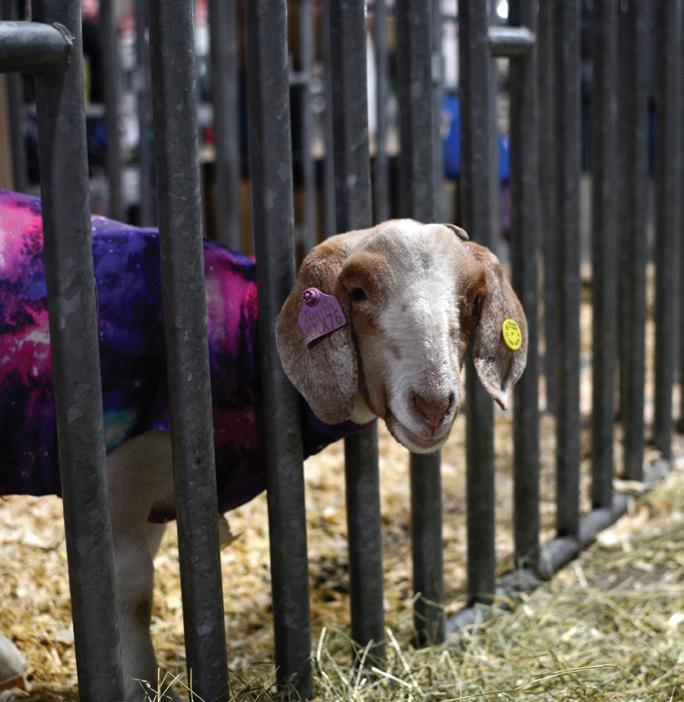
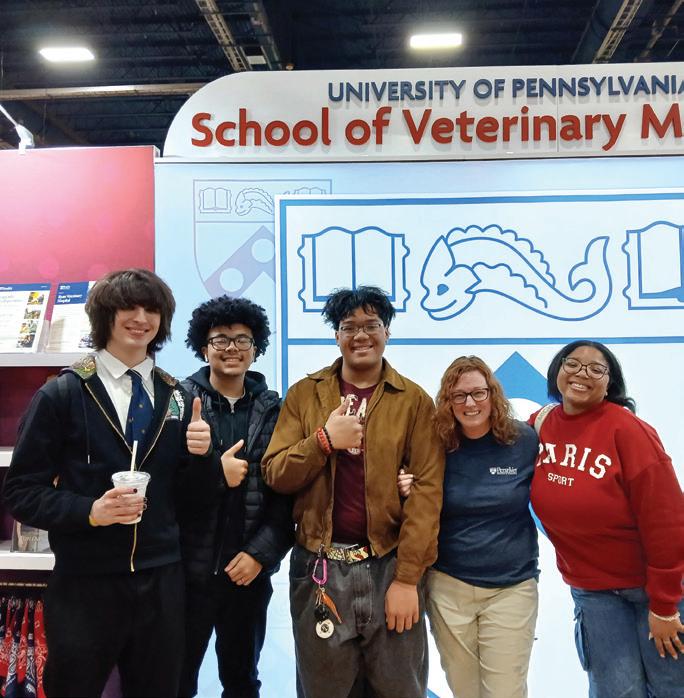
Right: Peter Jay Hotez, MD, PhD, delivered the Robert R. Marshak Public Lecture, “Vaccines and Immunizations in a Time of Global Boiling and Anti-Science,” opening the symposium. Below: Dr. Hotez is flanked by Dean Andrew Hoffman and moderator Michael Mann, director of the Penn Center for Science, Sustainability, and the Media.
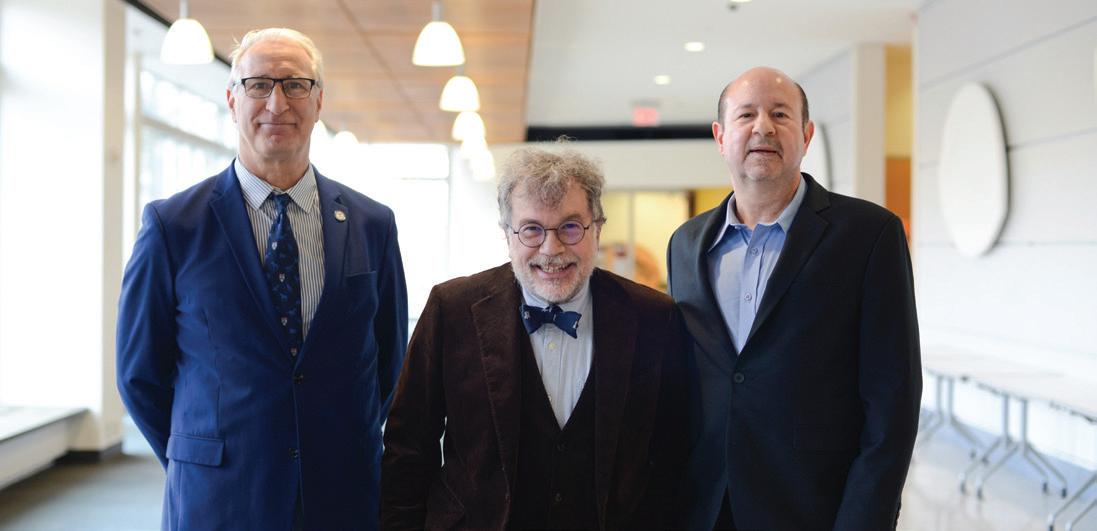
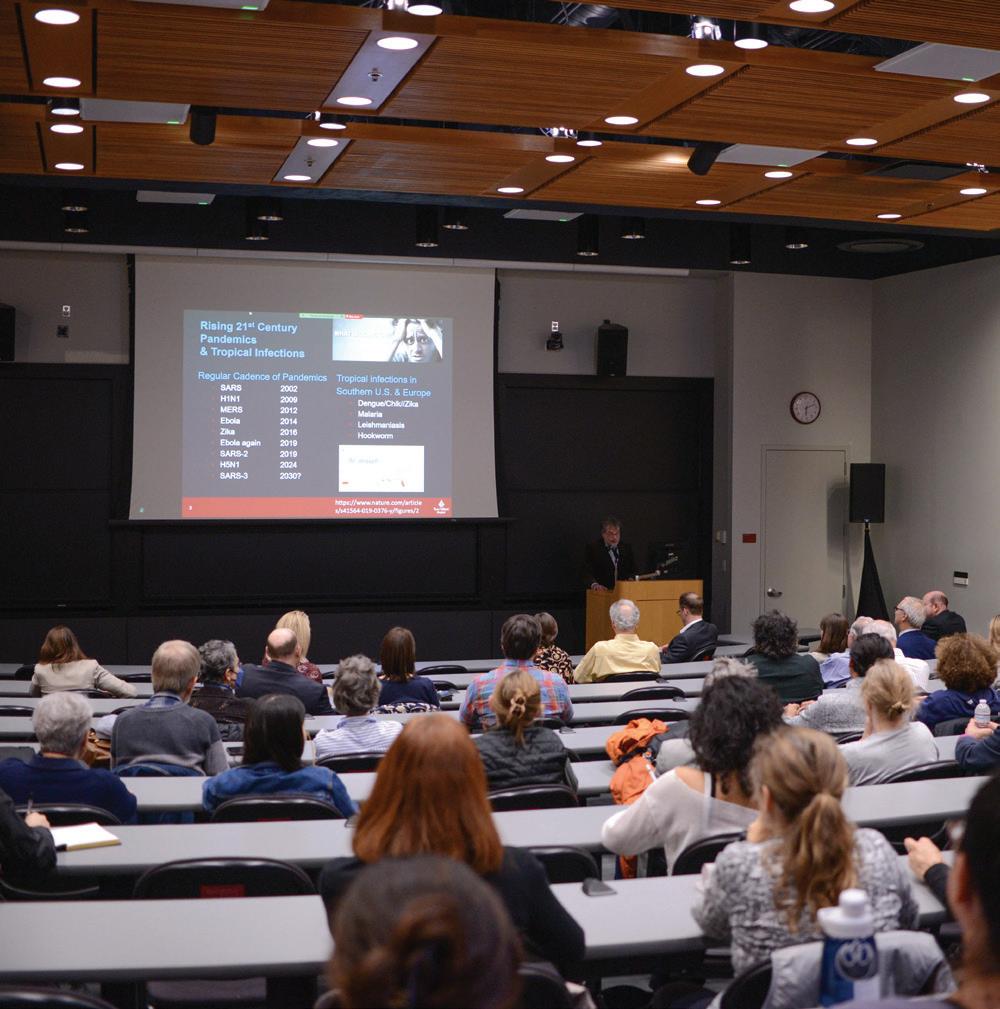
Gustavo Aguirre, VMD, PhD, DACVO, gave two presentations, in Spanish, “Development and progress in the treatment of inherited retinal diseases with gene therapy” and “BEST macular degeneration,” at the FUNDALURP VIII International Congress in Santiago, Chile, in November 2024.
Maya Aitken, DVM, DACVS, DACVECC, received the CS-NBC Teaching Excellence Award.
Gary Althouse, DVM, PhD, DACT, presented an invited talk at the International Conference on Boar Semen Preservation in Vic, Spain, in August 2024. His Reference Andrology Laboratory personnel also attended.
Matthew Atherton, BVSc, PhD, DECVIM, was appointed to the Morris Animal Foundation’s canine osteosarcoma scientific advisory board. He was also recipient of an Aegean 6th International Conference on Cytokines in Cancer Travel Award for his presentation of “Comparative studies reveal osteopontin as a candidate immune suppressor in histiocytic sarcoma.”
Timour Baslan, PhD, received a 2024 Forbeck Foundation Scholar Award.
William Beltran, DVM, PhD, DECVO, gave two presentations, in Spanish, “Cell therapies for inherited retinal diseases” and “Retinal gene therapy for NPHP5-LCA provides long-term
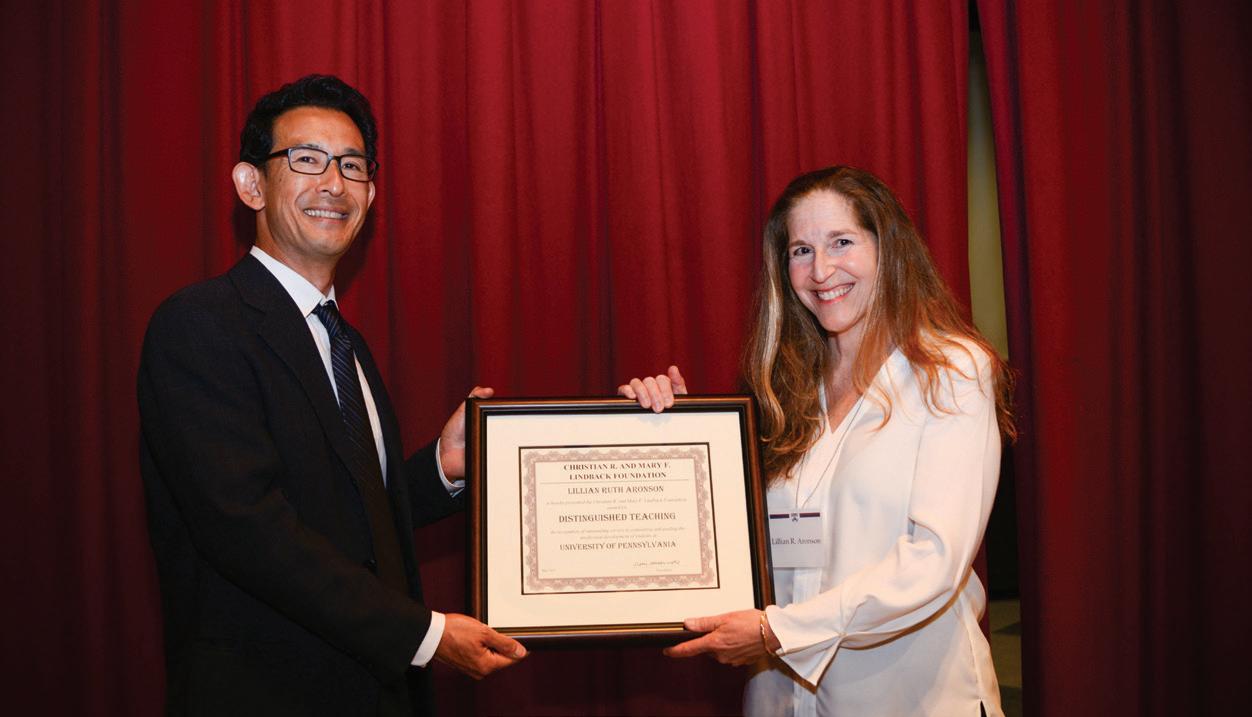
photoreceptor rescue,” at the FUNDALURP VIII International Congress in Santiago, Chile, in November 2024. He also presented “Gene therapy for NPHP5-IRD: on the path towards a clinical trial” at Hôpital Ophtalmique Jules Gonin, Fondation Asile des Aveugles in Lausanne, Switzerland, in January 2025.
Jessica Cathcart, DVM, received the 2025 William B. Boucher Award for Outstanding Teaching at New Bolton Center.
Mary Jane Drake, VMD, DABVP, became a diplomate of the American Board of Veterinary Practitioners, certified in Food Animal Practice.
Lillian Aronson, VMD, DACVS, received the 2025 Lindback Award for Distinguished Teaching. The University gives out eight Lindback awards each year. Winners are determined by nominations and recommendations made by faculty and students. Presenting the award is Masao Sako, the Arifa Hasan Ahmad and Nada Al Shoaibi Presidential Professor of Physics and Astronomy, and faculty co-director of the Center for Excellence in Teaching, Learning, and Innovation.
At the 4th Annual Ralph L. Brinster Symposium, the Elaine Redding Brinster Prize was presented to Mary-Claire King, PhD, from the University of Washington, for her groundbreaking discovery that variant forms of the BRCA1 gene can lead to hereditary breast cancer. Dr. King (center) is flanked by Ralph and Elaine Brinster’s children.
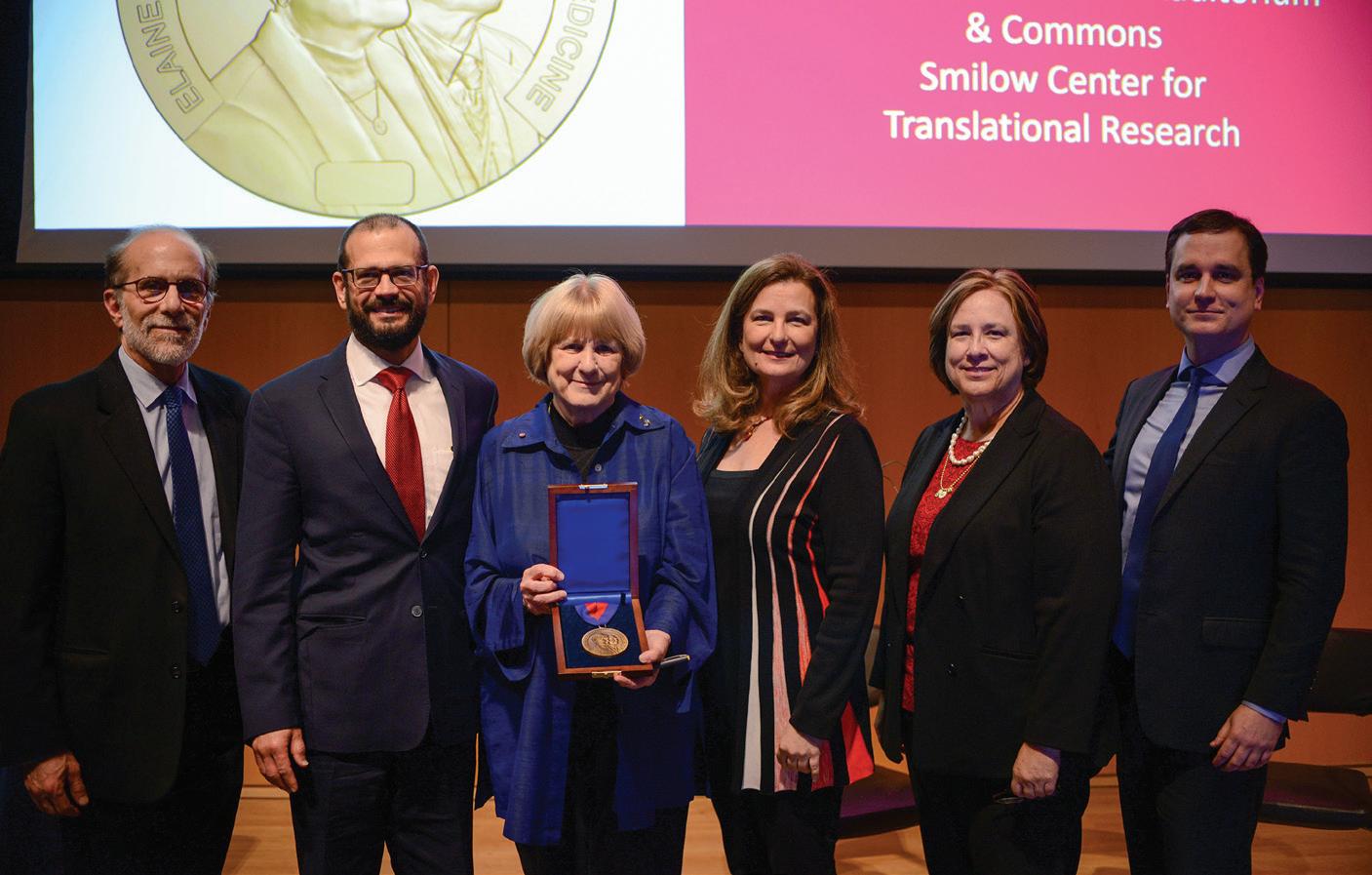
Julie Ellis, PhD, will serve as interim faculty director of Penn’s Environmental Innovations Initiative for the 2025-26 academic year.
Julie Engiles, VMD, DACVP, was featured on the American College of Veterinary Pathologists’ social media platforms for the National Day of the Horse.
Marie-Eve Fecteau, DVM, DACVIM, was promoted to professor of farm animal medicine and surgery.
Molly Flaherty, DVM (CCRP, CVA, CVSMT, CVPP), received the 2024 John J. Sherman III Award from the American Association of Rehabilitation Veterinarians for excellence in veterinary rehabilitation.
Jose M. Garcia-López, VMD, DACVS, DACVSMR, was elected to the American College of Veterinary Surgeons Board of Regents.
Samantha Giacobbe, CVT, was promoted to evening supervisor at New Bolton Center.
F. Claire Hankenson, DVM, MS, MFA, DACLAM, was presented with the Purdue University School of Veterinary Medicine Distinguished Alumni Award at the Purdue Fall Conference for Veterinarians. She is the first woman and third ACLAM diplomate so honored, one of only 74 veterinarians from among more than 3,000 DVM graduates. She also completed her Master of Fine Arts in Creative Writing as part of the Rainier Writing Workshop through Pacific Lutheran University.
Beth Harvey, client services associate at New Bolton Center, retired after 46 years of dedicated service.
Michael J. Hogan, PhD, was awarded a one-year grant from the W. W. Smith Charitable Trust, a foundation that funds biomedical research in the Greater Philadelphia region.
Klaus Hopster, DVM, PhD, DECVAA, received the Robert Whitlock Award for dedication in mentoring young faculty.
Savannah Hughes, CVT, was promoted to wards nursing supervisor at Ryan Hospital.
Christopher Lengner, PhD, received the J. Markart-V. K. O’Connor Award for Excellence in Colon Cancer Research from the Abramson Cancer Center.
The Office of Admissions and Student Life gained two new staff members: Carolyn Michel, curriculum management coordinator, and Kristin E. Mozzachio, student financial aid coordinator.
Andrew Modzelewski, PhD, received a 2024 David and Lucile Packard Foundation Fellowship. These fellowships have supported cutting-edge scientific work by offering unrestricted funds to recipients whose efforts push the boundaries of innovation.
Louise Moncla, PhD, was nominated to the World Health Organization Tool for Influenza Pandemic Risk Assessment Risk Assessment Committee. She also personally presented to the National Institute of Allergy and Infectious Diseases (NIAID) director, Dr. Jeanne Marazzo, on H5N1 influenza viruses in North America. This meeting was attended by Dr. Marazzo, Dr. Emily Erbelding, director of the Division of Microbiology and Infectious Diseases, and the directors for the respiratory diseases branch of NIAID.
Allison A. Muller, PharmD, DABAT, FAACT, has been elected an affiliate fellow of the American College of Medical Toxicology.
Paula Olson, CVT, was appointed wards operations manager at Ryan Hospital.
Kyla Ortved, DVM, PhD, DACVS, DACVSMR, participated on a panel of veterinary experts presenting important and impactful studies during the Kester News Hour at the 2024 American Association of Equine Practitioners Convention.
Cynthia Otto, DVM, PhD, DACVECC, DACVSMR, received the 2025 American Veterinary Medical Association Lifetime Excellence in Research Award. This award “reflects an appreciation at the highest level” for substantive, innovative, and transformative clinical and translational research.
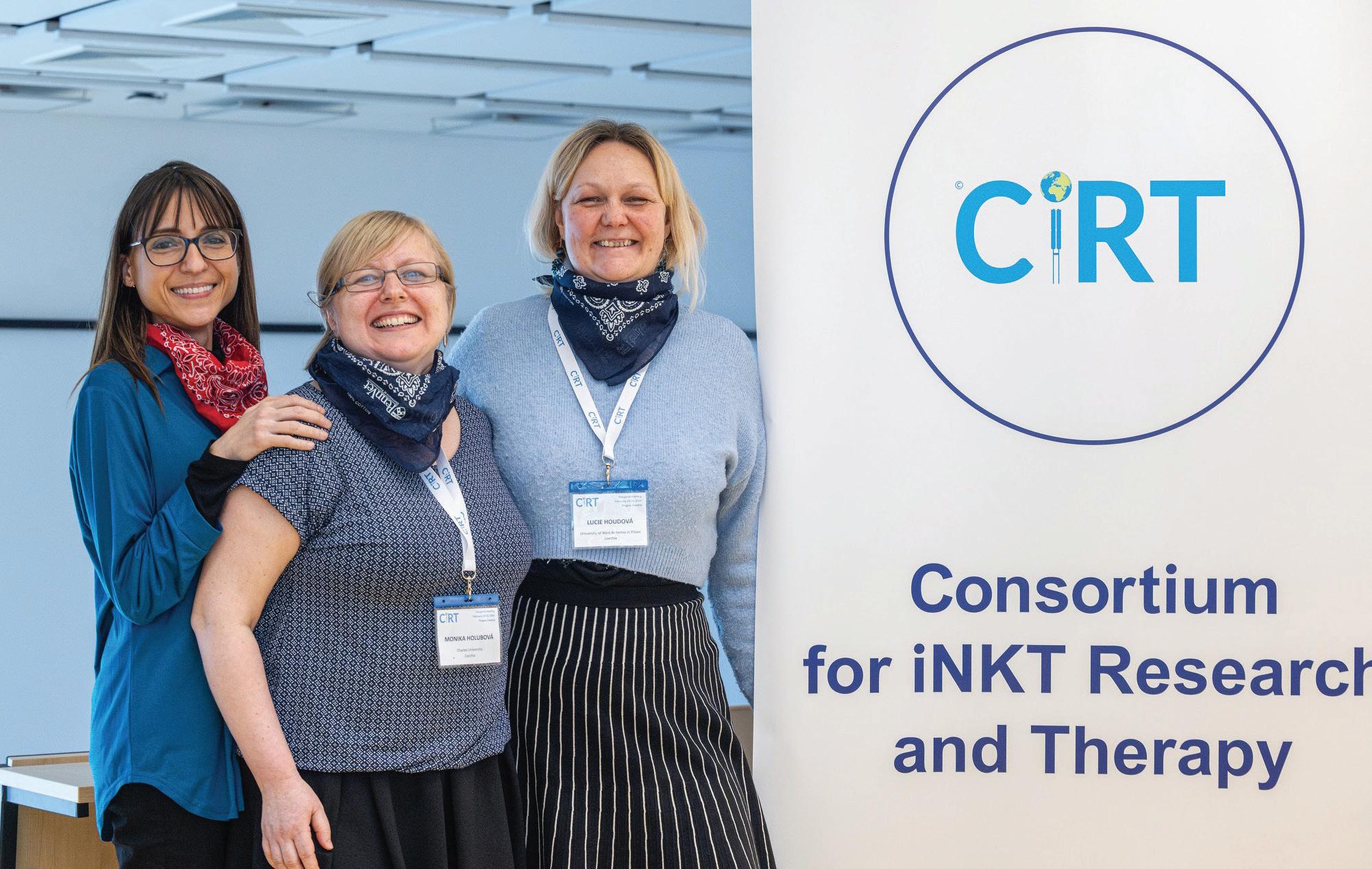
Meghann Pierdon, VMD, DACAW, received the House Officer Mentoring Award.
Dipti Pitta, PhD, received a Gerstner Family Foundation Award to continue her work imprinting the rumen function and preventing the colonization of methanogens in dairy calves.
Alex Reiter, Dipl. TZT, DrMedVet, DAVDC, DEVDC, retired after 25 years of dedicated service.
Mary Robinson, VMD, PhD, DACVCP, received the 2024 Zoetis Award for Veterinary Research Excellence at last fall’s research retreat. She also presented “Role of medications as risk factors for EASD: current knowledge, gaps and potential solutions” at the IFHA Global Equine Safety and Technology Summit in Toronto, in June 2024.
Antonia Rotolo, MD, PhD, (far left) founded the Consortium for iNKT Research and Therapy (CiRT), along with collaborators Dr. Monika Holubova from Charles University and Dr. Lucie Houdova from the University of West Bohemia, to accelerate the clinical development and application of universal cellular therapies for patients with currently incurable diseases. Rotolo served as chair for the inaugural CiRT meeting held in Prague, Czech Republic, in February 2025. She also received the Muriel Joan Drew Hege Fund Award for Women in Cellular Immunotherapy Research.
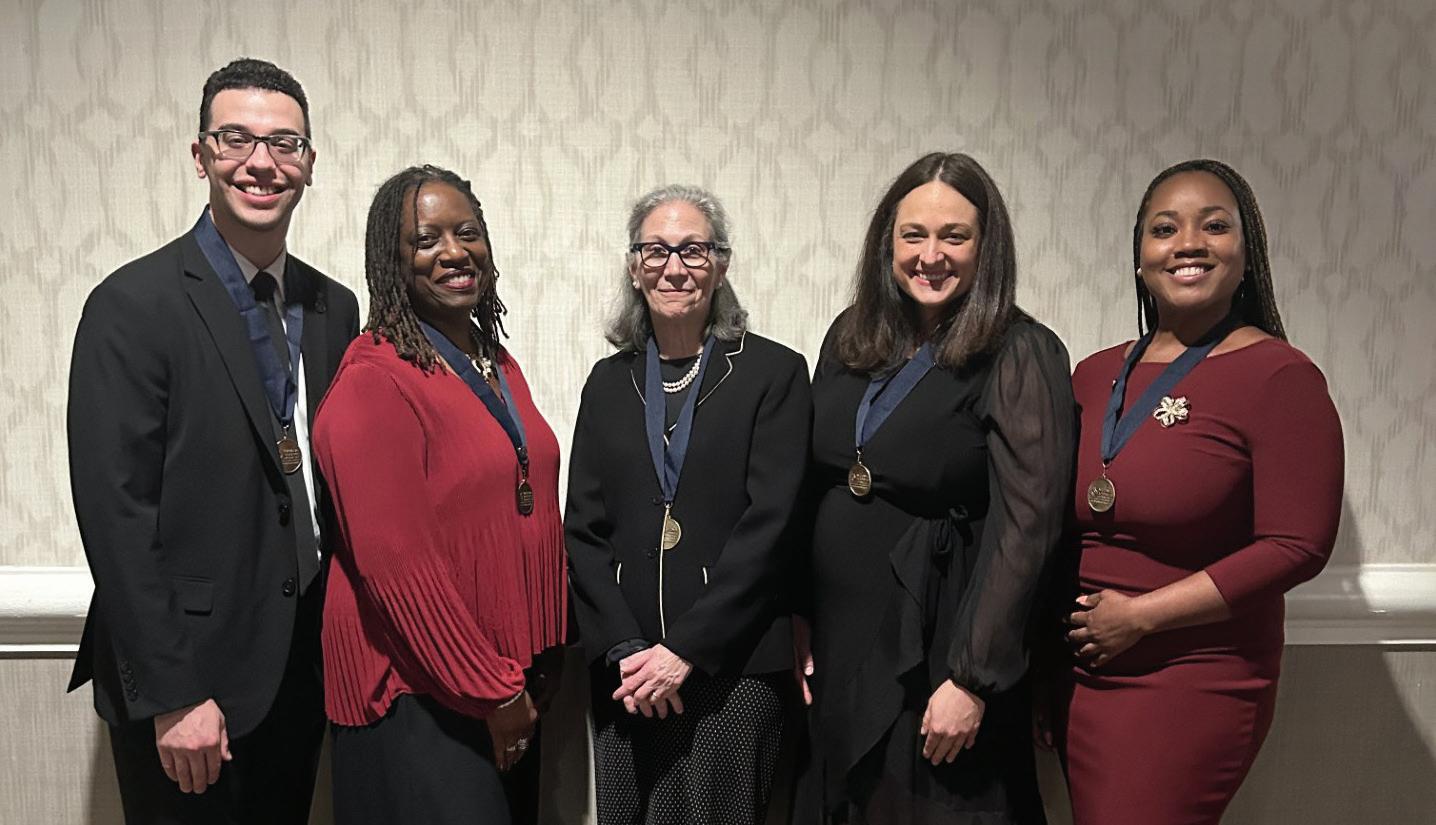
Brittany Watson, VMD, PhD, DACVPM, (second from right) was elected by the National Academies of Practice as a Distinguished Fellow of the Veterinary Medicine Academy, honoring outstanding achievements and leadership in both the profession and interprofessional care. Watson was joined by Perelman School of Medicine’s Hillary Nelson, PhD, MPH, (center) who was inducted into the National Academies of Practice Public Health Academy as a Distinguished Fellow.
Thomas Schaer, VMD, has been appointed associate professor of comparative orthopedic surgery. He also received the Denis S. Drummond Prize for Translational Research from Children’s Hospital of Philadelphia.
Deborah Silverstein, DVM, DACVECC, received the 2024 VECCS Ira M. Zaslow Distinguished Service Award from the Veterinary Emergency and Critical Care Society. This award is given to an individual who has demonstrated exceptional commitment and dedication while making significant contributions to the society and the practice of veterinary emergency critical care.
Carlo Siracusa, DVM, PhD, DACVB, DECAWBM, 2025 American Veterinary Medical Association (AVMA) Bustad Companion Animal Veterinarian of the Year Award. The award considers achievement in at least one of four categories, and the AVMA recognized Siracusa as a quadruple-qualified nominee, exceling in all four categories.
Professor Emeritus Gail K. Smith, VMD, PhD, received the 2025 Steven M. Fox Lifetime Achievement Award from the Veterinary Orthopedic Society. This award is presented annually to one VOS member who has shown a lifelong commitment to collaboration between research, practice, and industry with significant contribution to the field of veterinary orthopedics and the VOS.
Jason A. Syrcle, DVM, DACVS, was elected to the American College of Veterinary Surgeons Board of Regents.
Rae Thudium, MLS, was appointed head of veterinary libraries.
Joy Tomlinson, DVM, PhD, DACVIM, received the inaugural 2024 Veterinary Pathology Editor’s Choice Award for an Observational Study. She was honored with the award during the Annual Meeting of the American College of Veterinary Pathologists on November 19 in Seattle. Her paper on equine multinodular pulmonary fibrosis has been highlighted as one of the most important papers of the year in the equine veterinary field at the Kester News Hour of the 2024 American Association of Equine Practitioners (AAEP) Forum. The guidelines on equine viral hepatitis she wrote for AAEP were also published.
Emily Zug, CVT, was promoted to patient care supervisor at New Bolton Center.
In March students and faculty mentors were highlighted at the 2025 Student Research Day. Veterinary students John Bullock, Jasmine He, Elizabeth Taylor, Abigail Hamilton, and Elissa Williams, and VMD-PhD student Tiffany Wu gave oral presentations of their research. In addition to the oral presentations, over 30 VMD and VMD-PhD students shared their findings during the poster session.
This year’s symposium highlighted a burgeoning partnership between Penn Vet and the Faculty of Veterinary Medicine at Lilongwe University of Agriculture and Natural Resources (LUANAR) in Malawi, East Africa. Launched in January 2024, the Penn Vet and LUANAR partnership fosters educational exchange and research opportunities for students and faculty at both institutions. Two LUANAR students, Comfort Jiya, BVM, and Verson Nambuzi, BVM, presented their work virtually from Malawi.
“Student Research Day is an exhibit of curiosity, innovation, and the pursuit of knowledge. It is an opportunity for our students to showcase their research, refine their ideas, and engage in discussions that push the boundaries of science,” said Associate Professor of Biomedical Sciences Michael May, PhD, chair of the organizing committee for Student Research Day.
The event’s Class of 1966 Endowed Lecture was delivered by Thomas “Tom” Parsons, VMD, PhD, DACAW, the Marie A. Moore Professor of Animal Welfare and Ethics. Parsons’ talk, “Understanding animal welfare from the animal’s perspective,” noted the importance of enabling farmers and producers to prioritize husbandry practices that are most important to the animal.
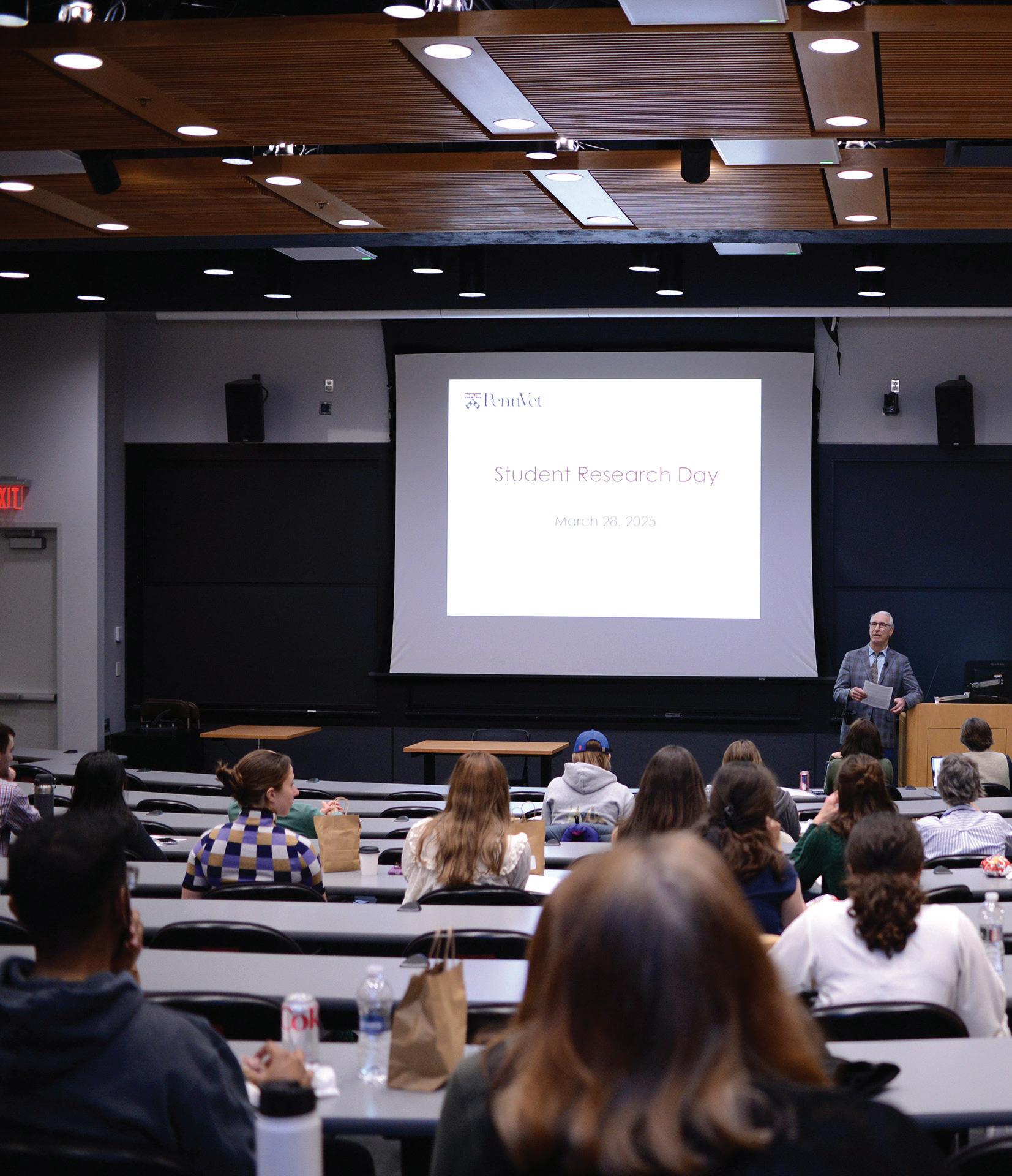
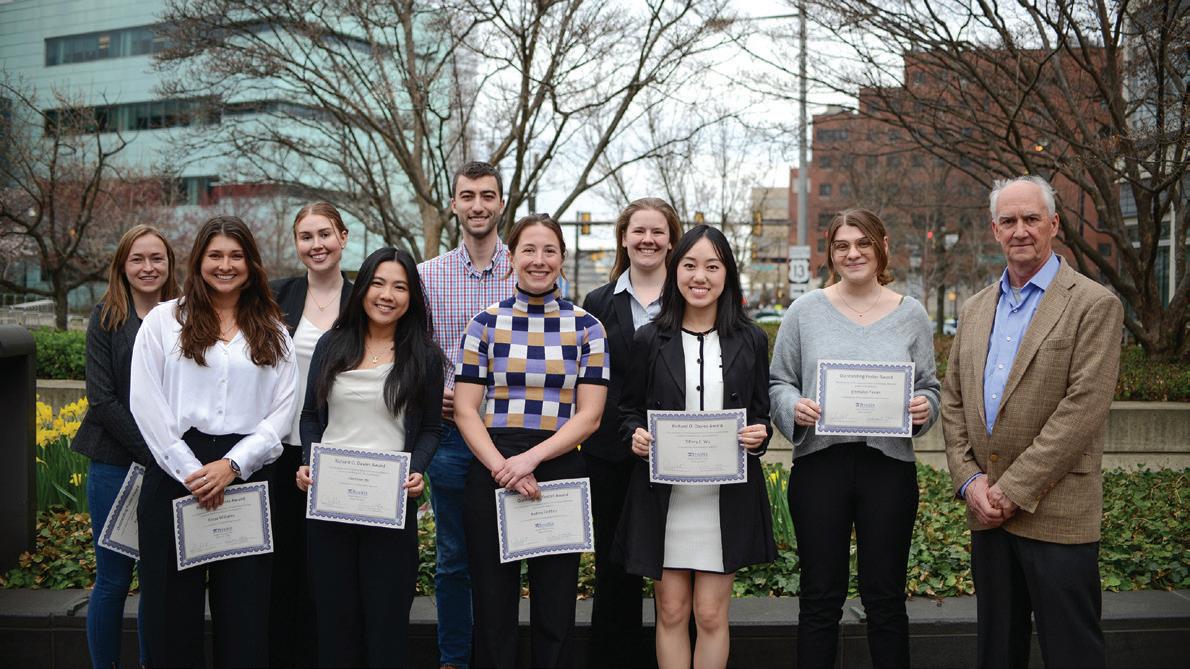
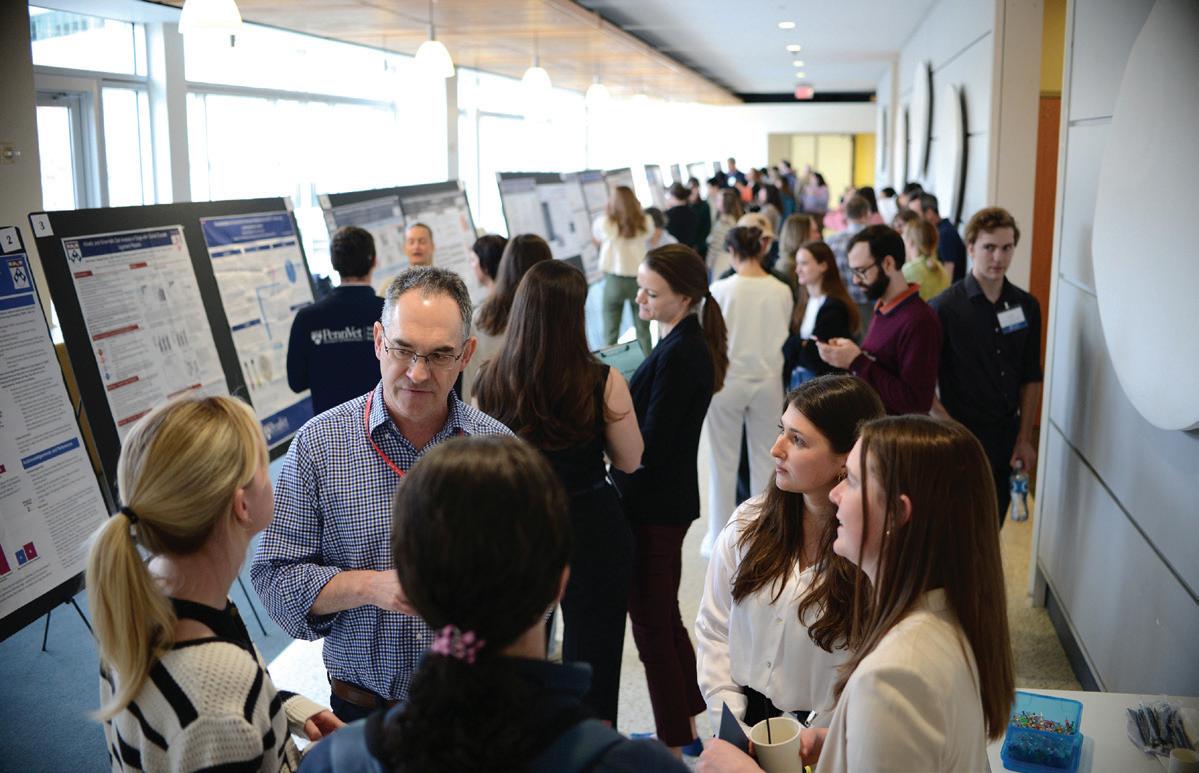
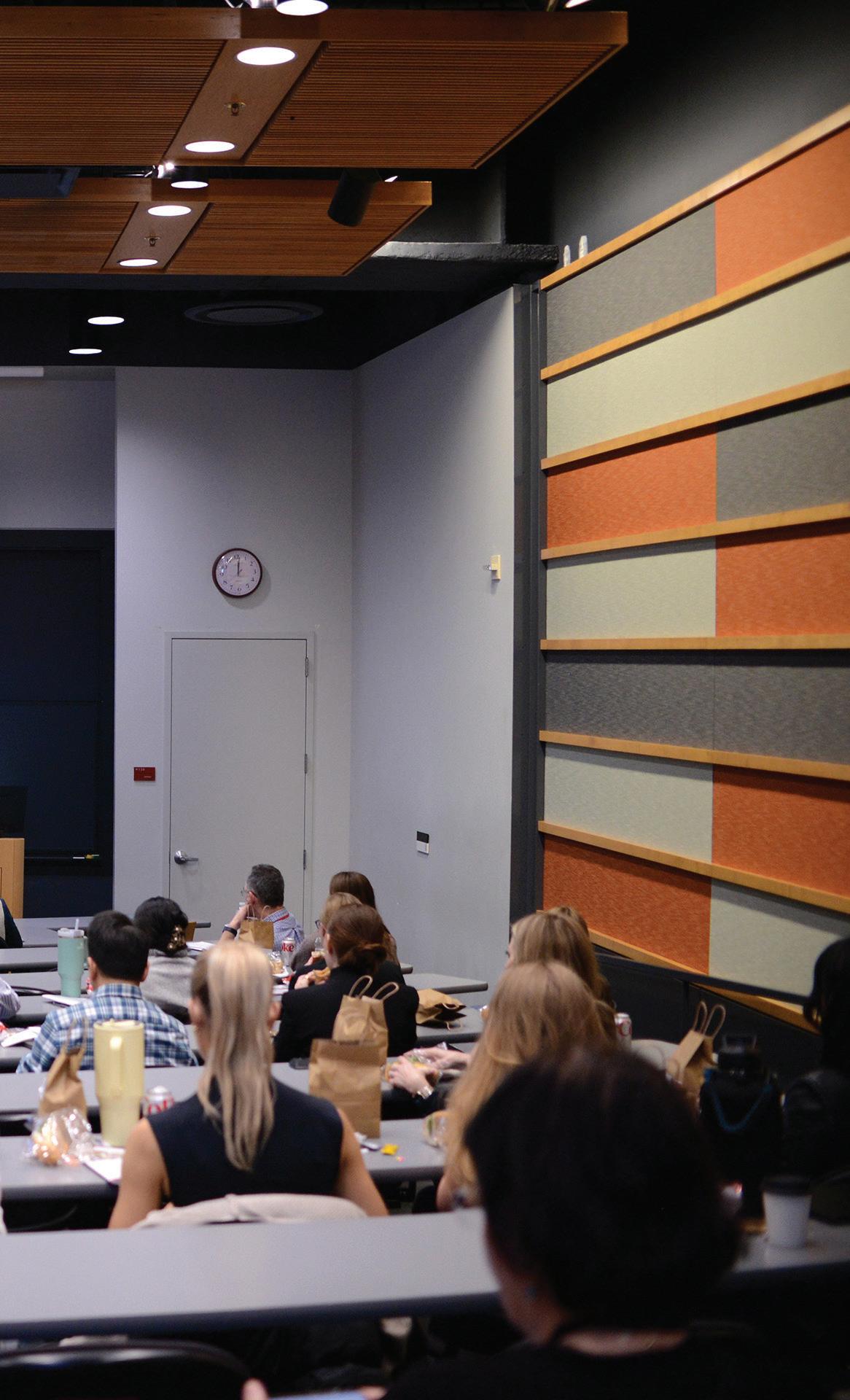
Above: Dean Andrew Hoffman kicked off the day with remarks.
Below: Dr. Tom Parsons presented his lecture. Left: Speaker and poster presentation awardees pose with Dr. Parsons. Above right: Speaker Abigail Hamilton poses with Dr. Phillip Scott.
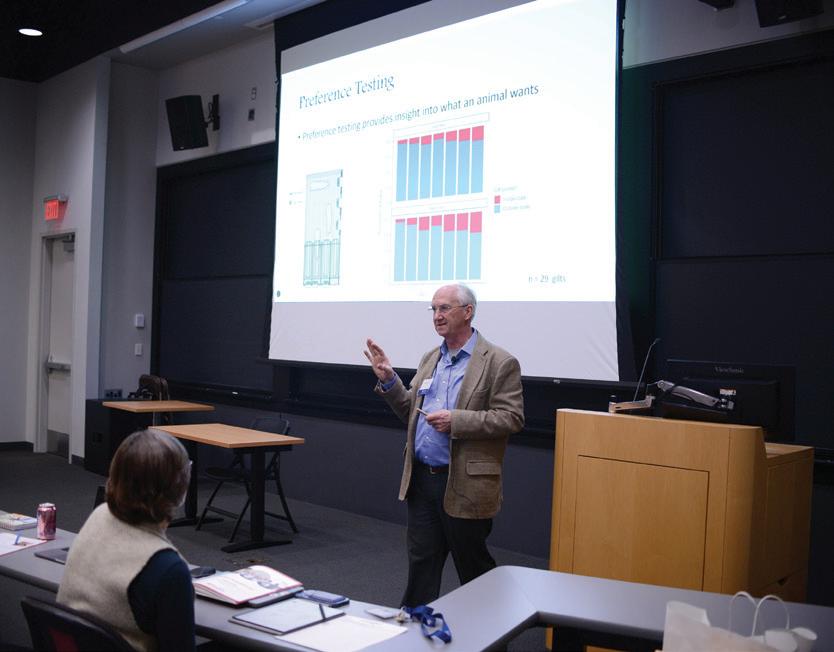
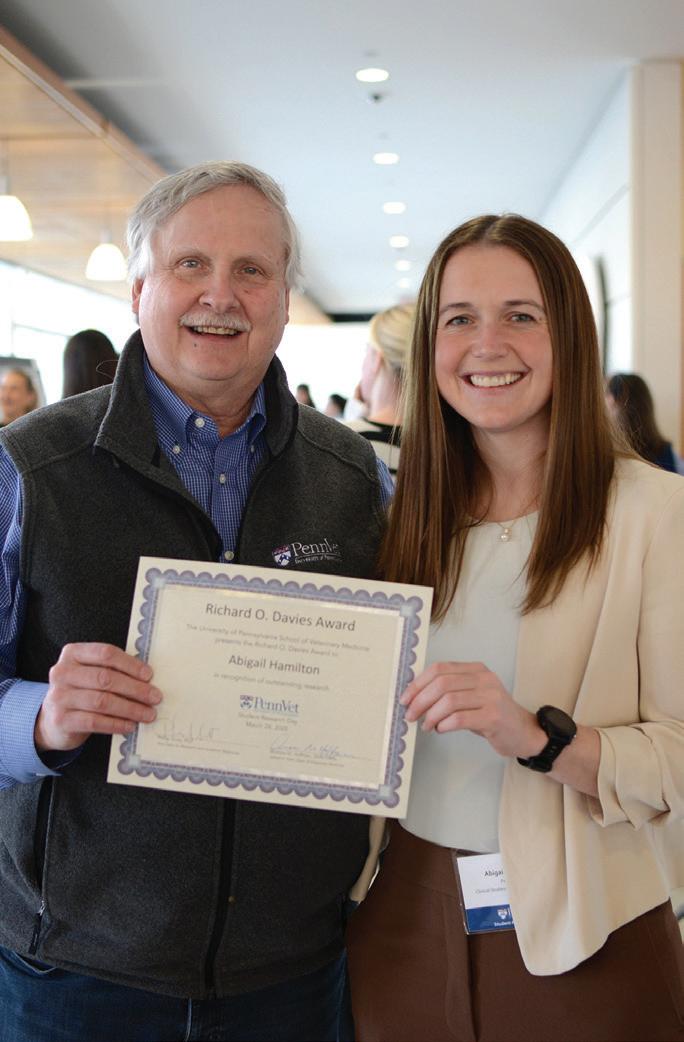
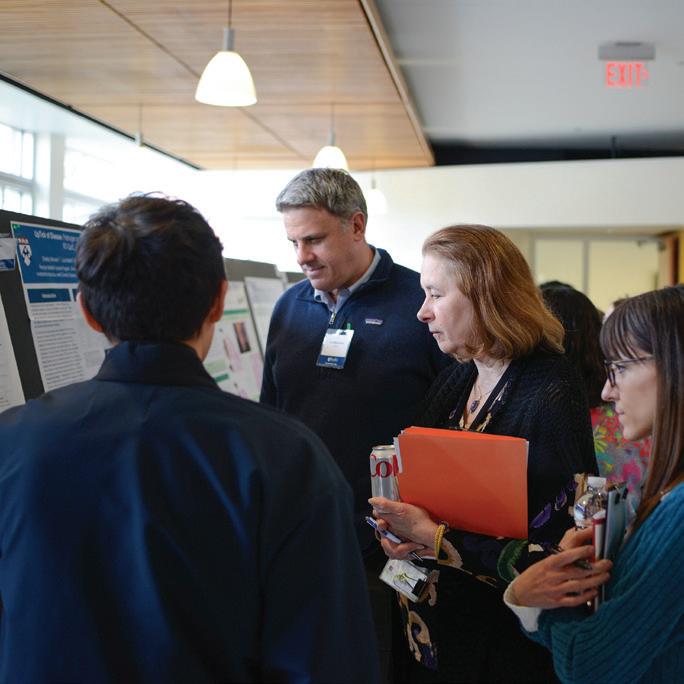
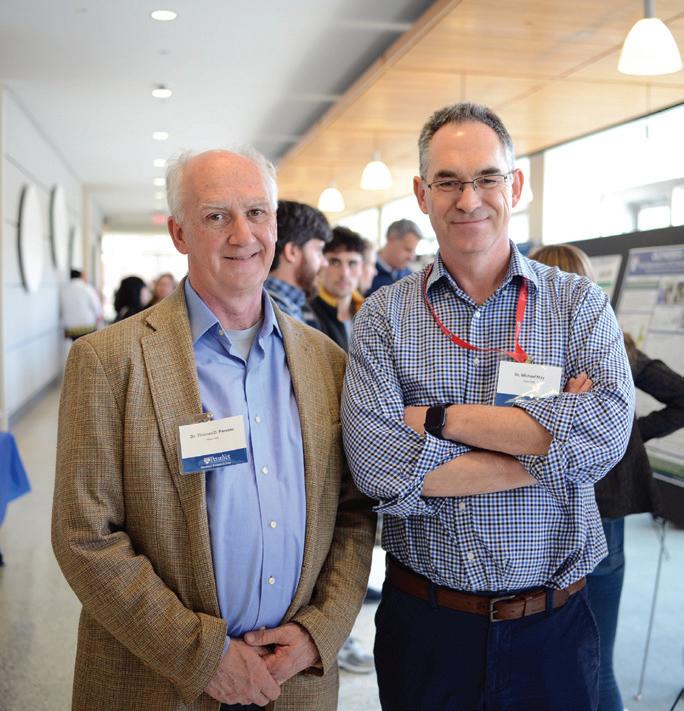
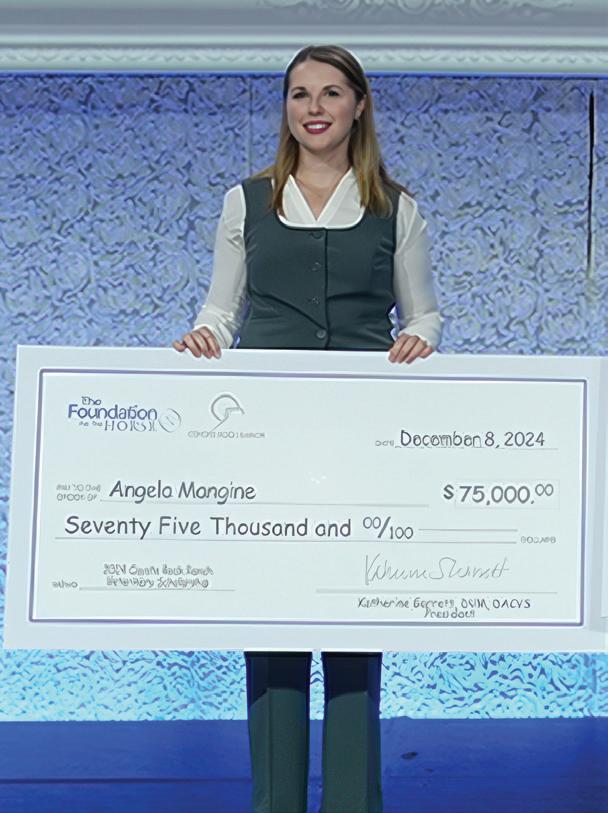
ANGELA MANGINE, Vʼ25, AWARDED $75,000 COYOTE ROCK RANCH SCHOLARSHIP
Fourth-year veterinary student Angela Mangine is one of four recipients of the Foundation for the Horse’s 2024 Coyote Rock Ranch Veterinary Scholarship at the American Association of Equine Practitioners annual conference.
Mangine expects to enter ambulatory practice after completing an internship at a well-established, multidoctor practice. She hopes to work in a larger practice where she could utilize her special interests, including sport horse and racetrack medicine.
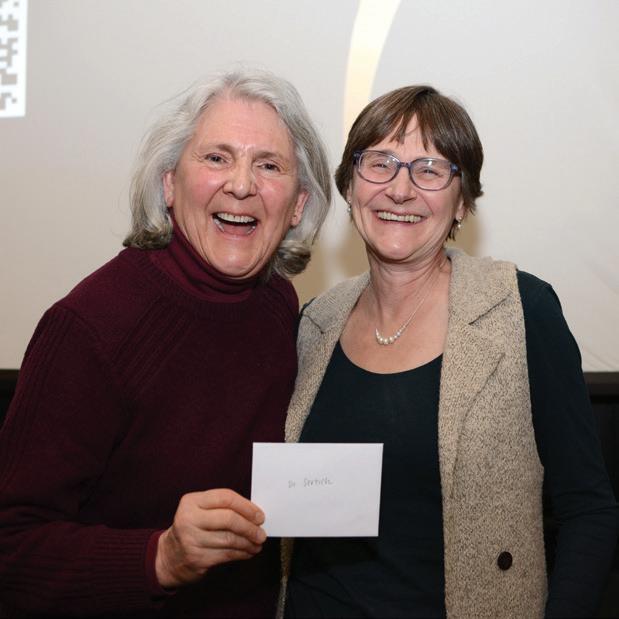
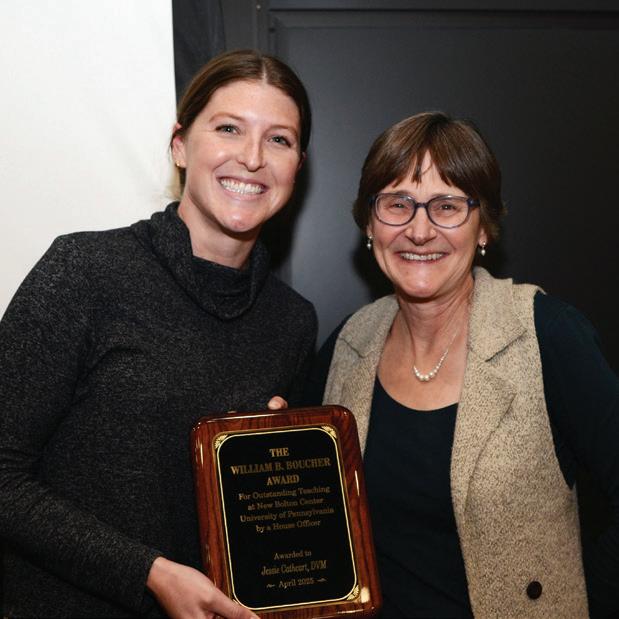
ZOETIS DISTINGUISHED VETERINARY TEACHER AWARD (top)
DR. PATRICIA L. SERTICH
WILLIAM B. BOUCHER AWARD FOR OUTSTANDING TEACHING AT NEW BOLTON CENTER (bottom)
DR. JESSICA CATHCART
On Friday, April 11, the Penn Vet community gathered to honor students, faculty, and hospital staff during the annual SAVMA Student Teaching Awards. Recipients are selected by the student body in a variety of categories.
The results are as follows:
V ’ 28 STUDENT SPIRIT
RACHAEL KEITH
V ’ 28 BEST LECTURER
DR. JEREMY WANG
V ’ 28 BEST LAB INSTRUCTOR
DR. NANCY GARTLAND
V ’ 27 STUDENT SPIRIT
DAELYN STABLER
V ’ 27 BEST LECTURER
DR. MARK RONDEAU
V ’ 27 BEST LAB INSTRUCTOR
DR. DEBORAH GILLETTE
V ’ 26 STUDENT SPIRIT DAVID BUCKWALTER
V ’ 26 BEST RYAN INSTRUCTOR DR. ANNA MASSIE
V ’ 26 BEST NBC INSTRUCTOR
DR. KYLA ORTVED
V ’ 25 STUDENT SPIRIT NINA DELLARTE
V ’ 25 BEST RYAN INSTRUCTOR
DR. ERIN GIBSON
V ’ 25 BEST NBC INSTRUCTOR
DR. KYLA ORTVED
SENIOR VETERINARY STUDENT OUTSTANDING PATIENT CARE AWARDS
RYAN
ERMELINDA BROSSEAU ELIZABETH GREGORIO AMY MANN
NBC KIT DEWOLF SCARLETT LOY GIOVANNA DISTEFANO
RESIDENTS, INTERNS & NURSES AWARDS
BEST RYAN RESIDENT
DR. KARL HOENECKE
DR. VALERIE NELSON
BEST RYAN INTERN
DR. SCOTT BERTOLDO
BEST RYAN NURSE FRANCESCA SCHOETTLE
BEST NBC RESIDENT DR. JESSICA CATHCART
BEST NBC INTERN
DR. ALESSANDRA DELUCIA
BEST NBC NURSE JAMIE GUIBERSON
SAVMA CLUB AWARDS
BEST WELLNESS EVENT Ophthalmology Club (Winter Wellness Candle-Making Event)
BEST COMMUNITY EVENT Latinx Veterinary Medical Association (Mocktail Mixology Night)
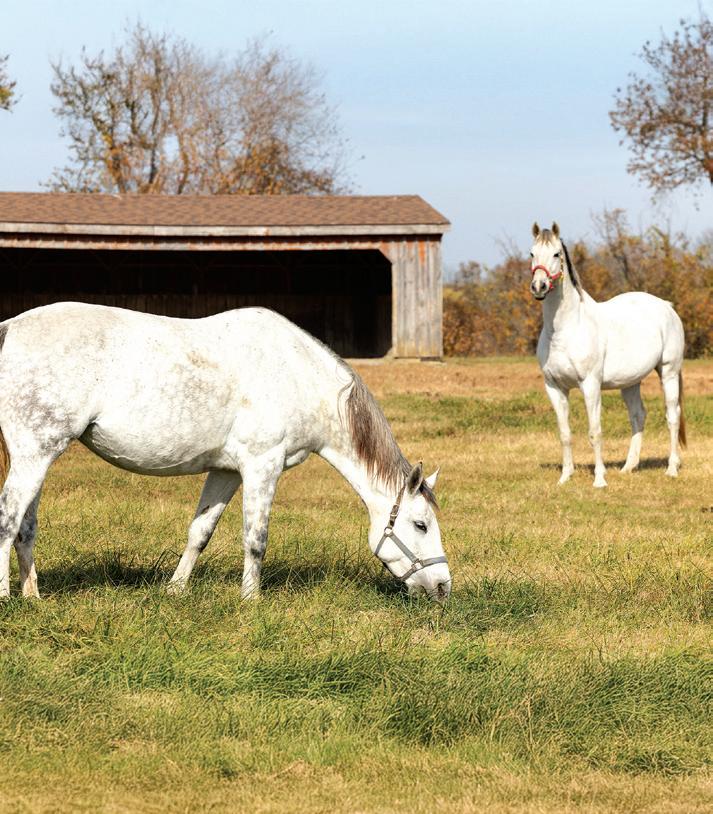
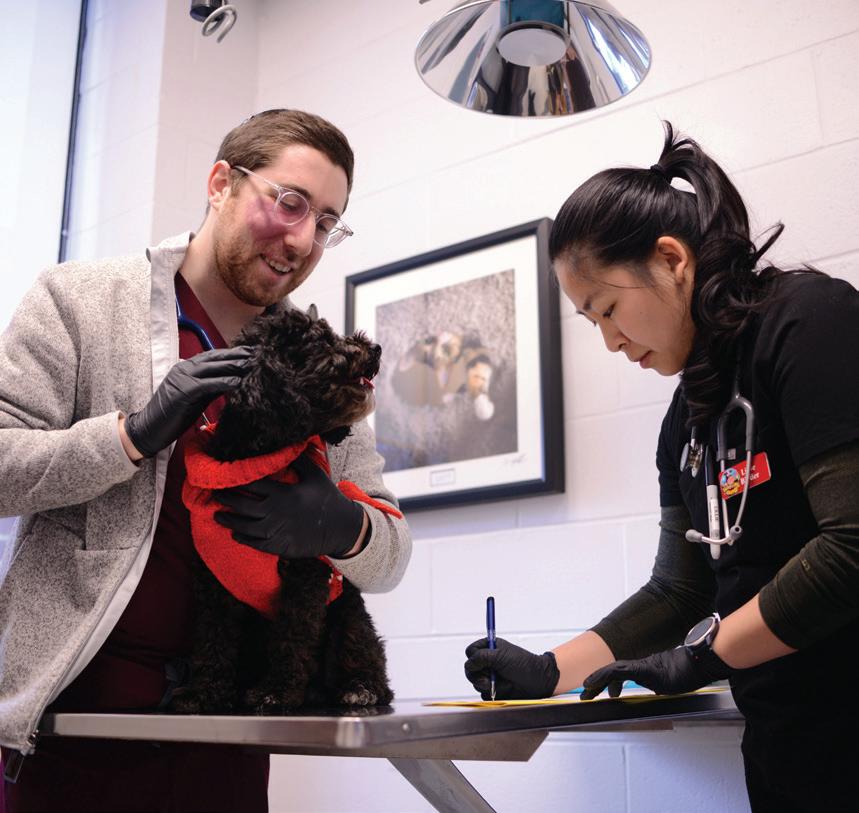
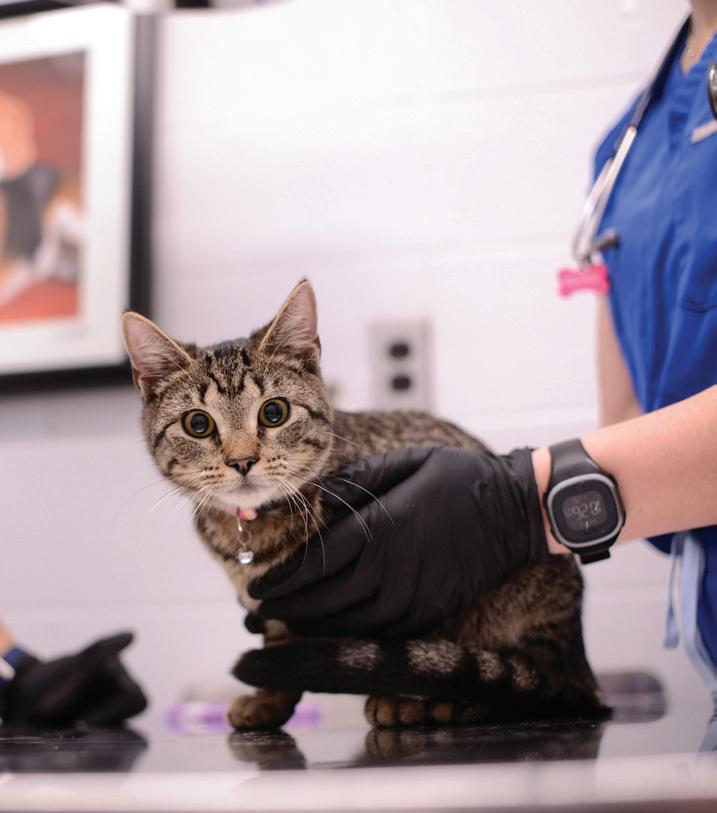
Penn Vet impacts animals everywhere. Our students, faculty, clinicians, and researchers offer invaluable and compassionate care that touches lives.
Join us in our mission by considering Penn Vet in your long-term plans. By including Penn Vet in your financial and estate planning, you can leave a legacy that reflects your passion for animals while bolstering our commitment to their health and happiness, both now and in the future.
You can make a difference when you:
• Leave a gift to Penn Vet in your estate plan—you can designate a percentage or a fixed amount of your estate.
• Make Penn Vet the beneficiary of your IRA, other retirement account, or life insurance policy.
• Make Penn Vet the beneficiary of your family foundation or donor advised fund.
In making a qualified gift, you will be welcomed into Penn Vet’s Veterinary Heritage Circle and the University of Pennsylvania’s Harrison Society. Together, we can nurture the future of veterinary medicine.
For other ways to give and for more information, please visit giving.upenn. edu/gift-planning or contact:
Shoshana Milovsky Associate Director of Major Gifts
Penn Vet
vetplannedgiving@ vet.upenn.edu
John Robertson, V’76, GR’77, professor in the Biomedical Engineering and Mechanics department at the College of Engineering, professor of biomedical sciences and pathology at the Virginia-Maryland College of Veterinary Medicine, and lecturer at the Virginia Tech Carilion School of Medicine, has been conferred the title of professor emeritus by the Virginia Tech Board of Visitors.
The American Association of Equine Practitioners (AAEP) presented Noah Cohen, C’79, V’83, with the 2024 AAEP Research Award for his recent research into equine strangles and Rhodococcus equi
Amy Attas, GR’83, V’87, visited Penn Vet to share stories from her new book Pets and the City: True Tales of a Manhattan House Call Veterinarian during a lunch talk.
Jon E. Higgins, V’89, was selected by the American Association of Small Ruminant Practitioners as the 2024 recipient of the Dr. Don E. Bailey Practitioner of the Year Award, in recognition of his commitment to excellence and the advancement of small ruminant veterinary practices, as well as teaching and mentoring activities.
James Holt, V’91, has been named visiting associate professor of infectious diseases and microbiology at the University of Pittsburgh’s School of Public Health, where he is also the steering committee chairman of the Pennsylvania One Health Consortium. Holt also participated in a Lancaster Farming panel discussion at the Pennsylvania Farm Show about overcoming the livestock veterinarian shortage.
Heidi Phillips, V’01, was named the first Dr. John A. Coyne Professor of Small Animal Surgery at the University of Illinois School of Veterinary Medicine and is now the section head of their small animal soft tissue surgery service.
Sara Langsam, V’02, received the 2024 American Association of Equine Practitioners (AAEP) President’s Award for her efforts as chair of the AAEP Racing Committee to address the issue of catastrophic musculoskeletal injuries in Thoroughbred racehorses.
Alex Hamberg, V’03, was elected vice president of the National Assembly of State Animal Health Officials during the United States Animal Health Association’s annual meeting.
Maria Schnobrich, V’08, spoke as an expert panelist during the Kester News Hour at the 2024 American Association of Equine Practitioners’ Convention.
Erin Luley, V’14, participated in a Lancaster Farming panel discussion at the Pennsylvania Farm Show about overcoming the livestock veterinarian shortage.
Alison Morgera, V’14, became a diplomate of the American College of Veterinary Surgeons.
Erin Achilles, V’19, joined the Schwarzman Animal Medical Center as senior veterinarian.
Mariel Covo, V’20, joined the Schwarzman Animal Medical Center as senior veterinarian.
Last December, Miriam Fink, V’21, was featured on NPR’s Morning Edition in a short segment about whether dogs need sweaters.
Stephanie Powers Kurtz, VG’22 (AWB), joined Modular Devices as technical cleanroom sales account executive.
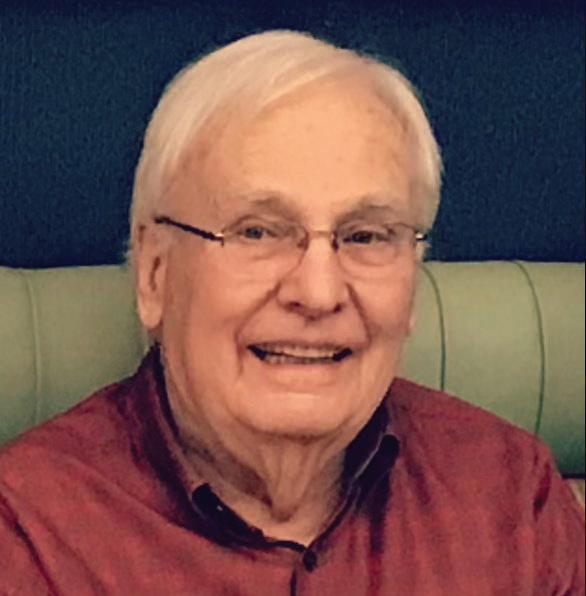
George Latimore Flickinger, Jr., V’58, GR’63, passed away on October 9, 2024. While earning his PhD, Flickinger joined Penn’s faculty as an instructor in pathology and then as an associate in comparative medical pathology. In 1964, Dr. Flickinger became a research associate, leading a lab that researched reproductive endocrinology for Penn's School of Medicine. Later, as research professor in obstetrics and gynecology, he helped design and then oversaw the in vitro fertilization program for the department of obstetrics and gynecology. Flickinger left Penn in 1991 to become head of the in vitro fertilization program at Dallas Presbyterian Hospital. After retiring, he returned to Philadelphia to assist his daughter, Barbara Flickinger, C’81, V’85, in her veterinary practice.
Bernard S. Jortner, V’58
September 28, 2024
Blacksburg, Virginia
Conrad B. Richter, V’59
November 25, 2024
New Oxford, Pennsylvania
Lon D. Hodge, V’61
December 25, 2024
Augusta, Georgia
Suzanne Ruch Jenkins, V’66
March 8, 2025
Midlothian, Virginia
Daniel W. Burbank, V’70
August 23, 2024
North Berwick, Maine
Kenneth J. Felix, V’72
December 26, 2024
Millcreek, Pennsylvania
Donald W. Gulick, V’75
April 13, 2025
Great Barrington, Massachusetts
Charles E. Kinsley, V’70
October 4, 2024
Hallstead, Pennsylvania
Donald A. Miele, V’70
December 1, 2024
Virginia Beach, Virginia
Donald P. Mullen, V’79
March 22, 2025
Guilford, Connecticut
Eugene A. Fink, Jr., V’83
October 10, 2024
Perth Amboy, New Jersey
Betty A. Pyatak-Monaghan, V’89
February 15, 2025
Sparta, New Jersey
Felix Vega, V’85
San Francisco, California
Notified February 2025
Steven M. Millheim, V’94
March 8, 2025
Hellertown, Pennsylvania
Michael J. Anthony, V’04
December 10, 2024
Cherry Hill, New Jersey
Email your news to the alumni office at vetalumni@vet.upenn.edu, or write to us at Alumni Relations, Penn Vet Alumni Office, 3800 Spruce Street, Suite 151E, Philadelphia, PA 19104. We may edit submissions for space.
By Karin Sorenmo, DVM, and Lisa Suslak Brown, V’91
K. Ann Jeglum, V’77, former adjunct associate professor of medical oncology at Penn Vet’s Ryan Hospital, passed away on September 22, 2024. A pioneer in the field, she was passionate about veterinary oncology and her work spanned from the laboratory to the clinics. She lived a life in service to pets and their owners.
Jeglum’s interest in cancer research started early, while she was working at Harvard Medical School as a research assistant in tumor immunology and immunotherapy. Her involvement in research continued during her years as a veterinary student at Penn Vet. She worked as a research associate with Dr. Charles Mangan at Penn Medicine in the Department of Gynecologic Oncology developing the intra-lymphatic route for delivering cancer vaccines. After graduating she completed fellowships with mentors Dr. Greg MacEwen at the Animal Medical Center in New York City, and Dr. Gordon Theilen at UC Davis School of Veterinary Medicine. These experiences created the building blocks for her later work within the field of veterinary oncology and immuno-oncology.
Jeglum returned to Penn Vet in 1981 as an assistant professor of medical oncology, and was mentored by Dr. Robert Brodey, one of the forefathers of veterinary oncology. She built her own research program and became head of the Oncology Service. In 1988, Jeglum was named a charter diplomate in the subspecialty of oncology in the American College of Veterinary Internal Medicine. Her groundbreaking work launched the specialty, which has grown to more than 413 diplomates today.
During this time, Jeglum also held appointments at the National Cancer Institute, Fox Chase Cancer Institute, and the Wistar Institute. Her work included the development and clinical testing of Canine Lymphoma Monoclonal Antibody 231 and TALL-104 cells, a patented novel cytotoxic cell that showed promising results in canine histiocytic sarcoma and osteosarcoma. She was recognized as one of the early leaders in comparative and translational immuno-oncology.
Jeglum remained on the faculty at Penn Vet until 1990 when she established the Veterinary Oncology Services and Research Center, in West Chester, Pennsylvania. Hers was the first standalone veterinary oncology practice in the country, unique in establishing the research center in conjunction with a privately owned veterinary hospital. Jeglum returned to Penn Vet as an adjunct associate professor of medical oncology from 1992 to 1997.
During 35+ years of clinical practice Jeglum and her staff treated thousands of veterinary cancer patients, and in doing so her work had a direct impact on those owners and families who loved their pets. She was always looking for the best and latest treatment options for her patients battling cancer. She went out of her way to accommodate new patients in need, and monitored her patients closely so early intervention was possible whenever necessary.
Jeglum established the charitable Veterinary Comparative Oncology Research Foundation and the Animal Cancer Foundation Maya’s Fund to support veterinary cancer research and to assist owners in need of financial assistance. She participated in the lifetime studies funded by the AKC Canine Health Foundation concerning the genetic epidemiology of cancer in golden retrievers and helped with several clinical trial studies for cancer patients. In 2016, the foundation named Jeglum Veterinarian of the Year.
During her career Jeglum trained and inspired numerous veterinarians, veterinary oncologists, and pre-veterinary students. Many of her trainees have become veterinary oncologists, and leaders in the field both in clinical medicine and research. Jeglum is a recognized leader both nationally and internationally and has published extensively on chemotherapy and immunotherapy in both human and veterinary oncology. Her contributions to the field of veterinary oncology are indisputable, impactful, and enduring.
Jeglum is survived by her life partner, Karen Kohlmeyer, and a brother.
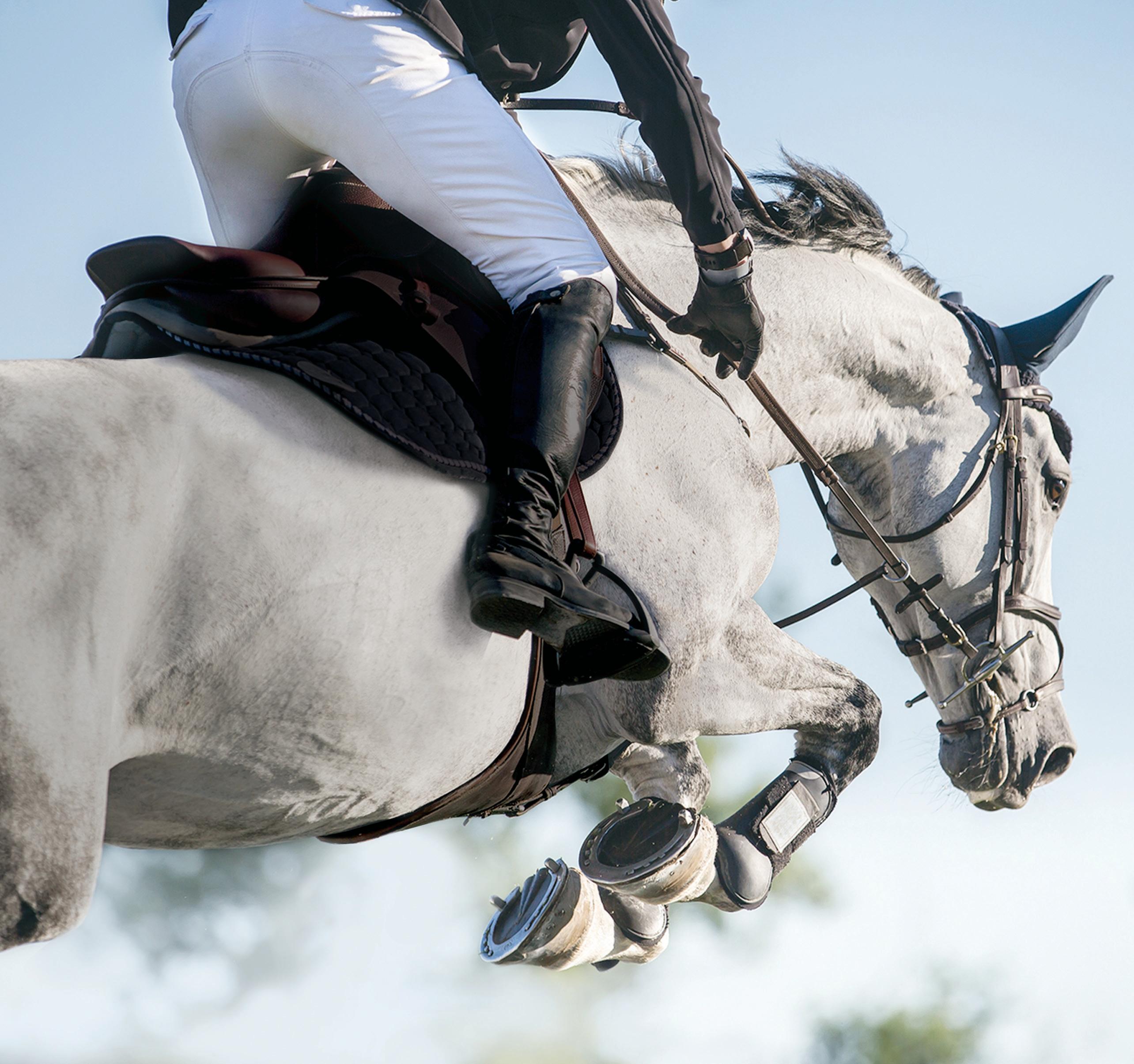
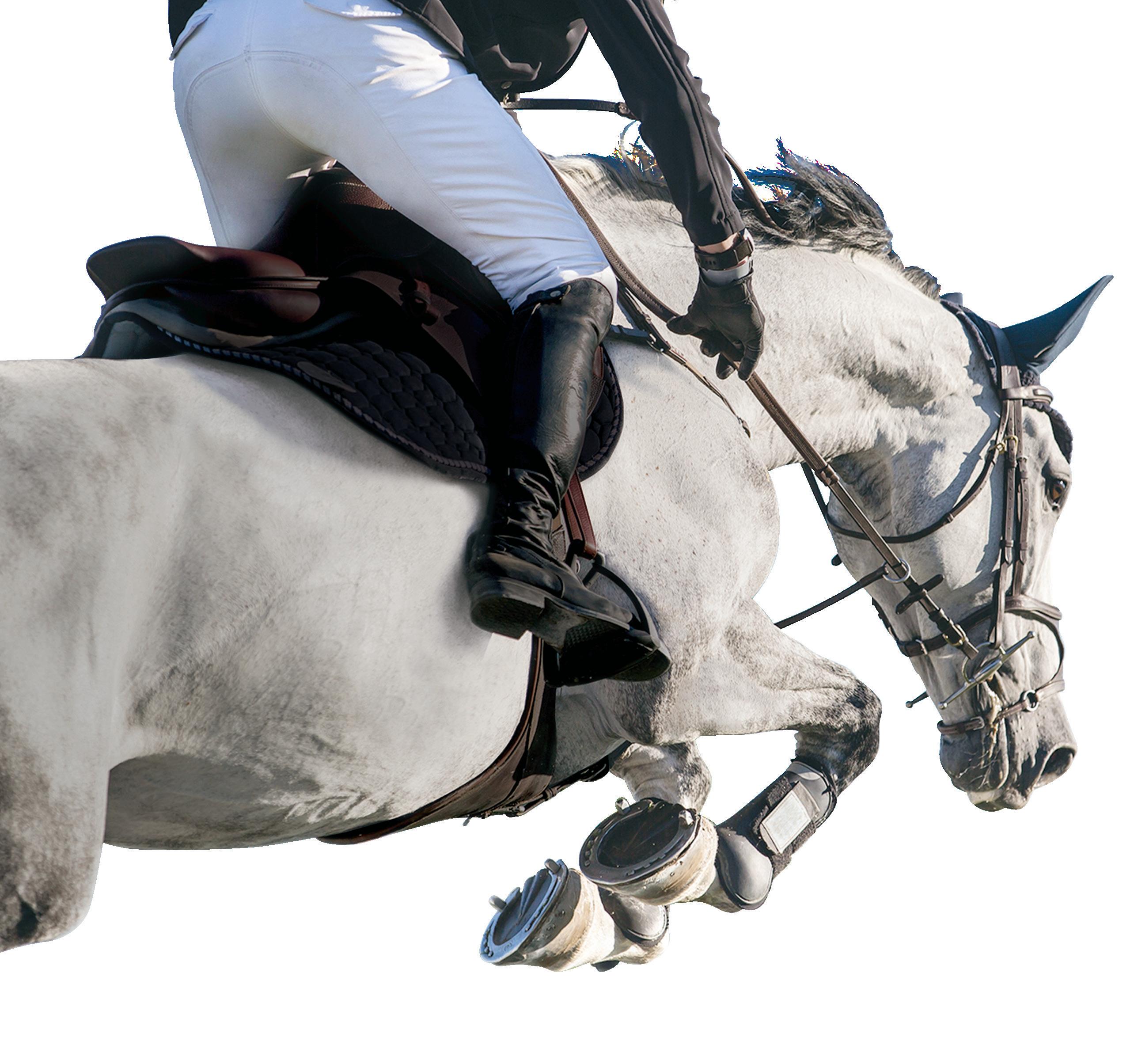
From meticulous diagnosis to precisely targeted therapy, you can trust the care of your equine athlete to the experience of New Bolton Center’s team of comprehensive sports medicine clinicians.
A competitive edge. Here, everyone gets it.
To make an appointment, call (610) 444-5800 or visit us online at vet.upenn.edu/newboltoncenter
For more information and to view a full list of upcoming events, visit www.vet.upenn.edu/events
July 18
ALUMNI RECEPTION AT AVMA
Washington, DC August 14
ALUMNI LUNCHEON AT PVMA
Harrisburg, PA
September 25-26
PENN ANNUAL CONFERENCE: COMPANION ANIMAL
Swarthmore, PA
November 6-7
PENN ANNUAL CONFERENCE: EQUINE
Kennett Square, PA December
8
ALUMNI RECEPTION AT AAEP
Denver, CO
Follow Us
PENN VET
WWW.VET.UPENN.EDU
PENN VET
@PENNVETSCHOOL
@PENNVET
NEW BOLTON CENTER
PENN VET NEW BOLTON CENTER
@NEWBOLTONCENTER
Rowdy, a 26-year-old miniature horse, poses for one last picture with her care team after weeks of receiving intensive treatment following a dog attack. The multidisciplinary team from New Bolton Center Hospital’s Emergency and Critical Care, Internal Medicine, Ophthalmology, and Cardiology services combined their expertise to bring this mighty mini back to her happy self.
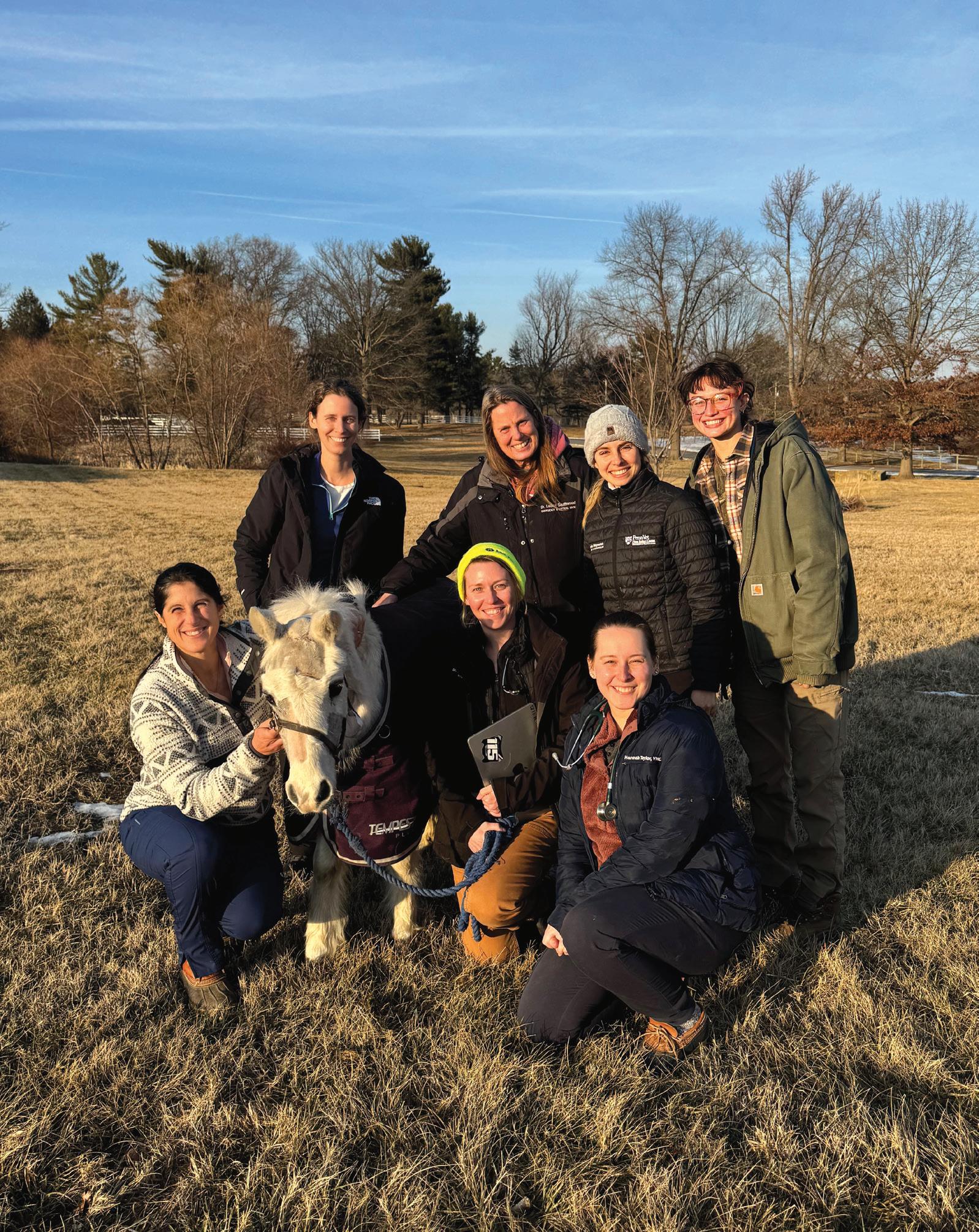
3800
United Way of Greater Phila. & So. NJ: #50178
Our mission at Penn Vet is to train the next generation of veterinary leaders to advance healthcare outcomes and access, ensure global health, bolster sustainable agriculture, create and support interdisciplinary career paths, and foster community and wellness in the profession.